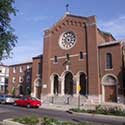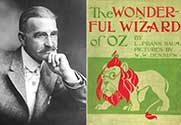Presentations
Presentations are available seven days a week for morning, afternoon and evening in person and via the virtual platform Zoom. See calendar for updated event details weekly. Call or e-mail Jim or Michelle at 815.572.1244 (Jim) or 224.622.9339 (Michelle) to schedule your program today!
Below are presentations that are currently offered. There are over 120 unique program topics. These presentations change and evolve as new ones are added. Please check back to this page to see new offerings.
Our Lady of the Angels School Fire

Margaret ("Peggy") Anne Sansonetti
Historian Jim Gibbons offers a presentation on the 1958 tragedy in which 92 children and three nuns perished in the fire at Our Lady of the Angels school in Chicago. Inspired by reading the book, "To Sleep with the Angels: The Story of A Fire,” Jim learned that the Queen of Heaven cemetery in Hillside, Illinois had 25 graves where children of the fire were interred. His parents were interred there as well and he went to the memorial to pay his respects. At that point it was the 50th Anniversary of the fire. He began researching the fire in depth and got into contact with some of the survivors.
During his presentation, Gibbons will also discuss the life and death of Margaret (“Peggy”) Anne Sansonetti (pictured above) who was killed by smoke inhalation in the fire at age 10. Susan Parker, former staff member of the Marengo-Union Library District, said Gibbons’ presentations are riveting.
“He [gives] you the idea that you were a witness, that you were there,” Parker said. “You [get] the feeling of urgency that everyone at the scene must have felt.”
 |
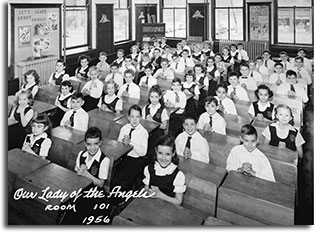 |
| 1958 Our Lady of the Angels School Fire | Room 101 of Our Lady of the Angels School |
Alex Trebek
The Life of Alex Trebek: A Jeopardy! Legend

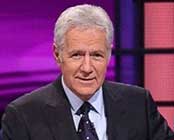

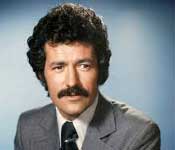
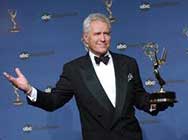

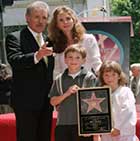
When turning on the television to relax and enjoy the beloved quiz gameshow Jeopardy! a smiling, happy, sincere face would appear. The face of a man who knew how to make that moment of your day just a little bit better and more interesting. That man, was Jeopardy! host and gameshow legend, Alex Trebek.
Historical Presenter, Jim Gibbons, will discuss the life of Alex Trebek, a Canadian-American television gameshow host and television personality whose energy and enthusiasm brought joy to many Americans. Gibbons will discuss Trebek’s longstanding career with Jeopardy! and its 37 seasons until his death in 2020. He will explain Trebek’s life and fame before, during, and after Jeopardy! He will discuss additional shows Trebek hosted including: Double Dare; Battlestars; Classic Concentration; To Tell the Truth; and many more. Trebek also received eight Emmy’s for his gameshow hosting. Though Trebek will forever be known for his role in Jeopardy!, he will also be remembered for his compassion towards others. Trebek’s generosity and dedication to the greater good was well-known through the help he provided to many children and families living in poverty.
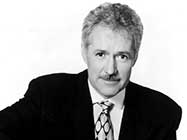
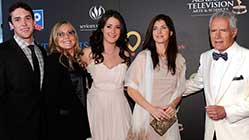

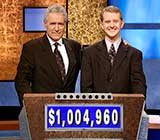

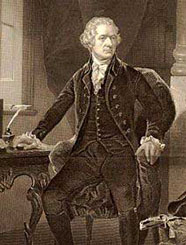
The Life of Alexander Hamilton
After being out of the limelight for over 200 years, Alexander Hamilton has recently taken center stage again, starring in an increasingly popular Broadway musical. But who was the man alive during President George Washington’s era who has gained a barrage of media and public attention? As one of the Founding Fathers of the United States, Hamilton is recognized today as an outstanding statesman. With an influential stance in founding the U.S. financial system and ratifying the Constitution, he also founded the United States Coast Guard, The New York Post Newspaper, and the Federalist Party. Hamilton, who was born in 1757 and came to America at age 15, fought in the American Revolution alongside President George Washington. Appointed by Washington, he was the first U.S. Secretary of the Treasury and became deeply involved in economic policies. It was believed by many that he could have become a future President of the United States. And then suddenly scandal hit.
Historian, Jim Gibbons, will take you on the roller-coaster life of one of America’s most talked about founding fathers. From his skyrocketing in popularity and fame to his sudden downfall due to scandal and ultimately, his tragic death, you will not want to miss Gibbons’ riveting presentation of Hamilton’s legacy.
Alfred Hitchcock
Suspense and Psychological Thrills: The Life of Alfred Hitchcock
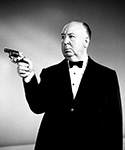
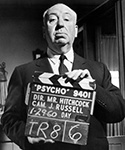
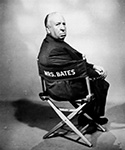

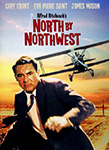
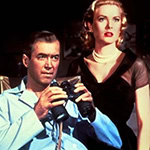
Alfred Hitchcock uncovered a world of the unknown--a world unknown to previous filmmakers and to audiences. He created a world where audiences were put on edge in suspense and where each film’s psychological twists and turns made hearts skip a beat. Often deemed, “The Master of Suspense,” Alfred Hitchcock knew how to capture your mind and run wild with it.
Historian Jim Gibbons will discuss the life of Sir Alfred Joseph Hitchcock and his great influence on the history of filmmaking. Gibbons will discuss Hitchcock’s role as a film producer, director and his cameo appearances in the films he produced. He will explain Hitchcock’s close working relationship with several Golden Age actors and actresses including James Stewart, Cary Grant, Anthony Perkins, Grace Kelly, Kim Novak and more. He will discuss his most popular movies, Psycho, Vertigo, Rear Window, The Birds and North by Northwest. Gibbons will also discuss Hitchcock’s life on and off set. Before his death, Hitchcock was not only knighted, but he also received the American Film Institute’s Lifetime Achievement Award and directed over 50 feature films.

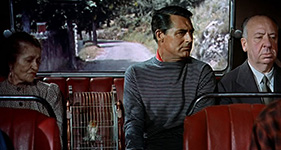
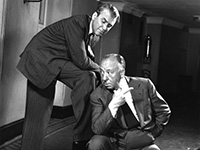
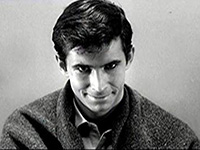
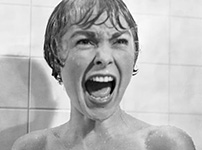
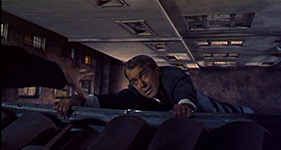
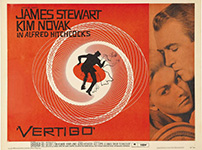
Amelia Earhart
Amelia Earhart: Soaring High on Wings of Success
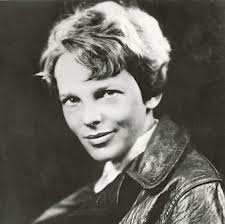 Amelia Earhart set many flying records. She was the first woman to fly across the Atlantic. She was the first person to fly from Hawaii to California, California to Mexico, and from Mexico to New Jersey. Amelia was also the first women to receive both the National Geographic Society’s Special Gold Medal and the United States Distinguished Flying Cross from President Herbert Hoover. She was a friend of both President Franklin Roosevelt and Eleanor Roosevelt. Acclaimed by royalty in England and euphoric ticker-tape parades in the United States, Amelia was America’s foremost woman flier. She was heralded as America’s expert flyer everywhere she went.
Amelia Earhart set many flying records. She was the first woman to fly across the Atlantic. She was the first person to fly from Hawaii to California, California to Mexico, and from Mexico to New Jersey. Amelia was also the first women to receive both the National Geographic Society’s Special Gold Medal and the United States Distinguished Flying Cross from President Herbert Hoover. She was a friend of both President Franklin Roosevelt and Eleanor Roosevelt. Acclaimed by royalty in England and euphoric ticker-tape parades in the United States, Amelia was America’s foremost woman flier. She was heralded as America’s expert flyer everywhere she went.
And yet she disappeared without a trace on July 2, 1937 while attempting to be the first person to fly around the world at the Equator.
“Please know I am quite aware of the hazards. I want to do it because I want to do it. Women must try to do things as men have tried. When they fail their failure must be a challenge to others.” ~ Amelia Earhart.
This letter was left behind for her husband, George Putnam, the day she began her final flight.
Historian, Jim Gibbons, will present the life of the woman known as “Lady Lindy” -- an American Aviation legend that on her final flight simply vanished. Did she drown at sea, or land on an island to live out the rest of her life? Was she taken captive by the Japanese and imprisoned as some claim or was she a spy for the United States Government? Gibbons will present the life and death, and the facts and theories of America’s legendary first woman aviator, Amelia Earhart!
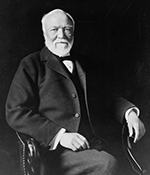
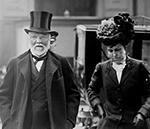

A “Rags to Riches” Story: The Life of Andrew Carnegie
Andrew Carnegie made a name for himself in the United States steel industry and in history with a true “Rags to Riches” story. Carnegie, born to impoverished parents in Scotland, traveled to the U.S. with his family at the age of 13 in 1848. He worked as a telegraph messenger and bobbin boy until he started work in the railroad industry at the age of 18. By the 1860’s, he made investments in the railroad industry and furthered his wealth as a bond salesman. He eventually built Pittsburgh’s Carnegie Steel Company which later became U.S. Steel Company. Carnegie became a leading philanthropist in the U.S. and at one point, surpassed John D. Rockefeller as the richest man in America. At the end of his life, Carnegie donated approximately 90 percent of his fortune, $350 million, to charities, universities and foundations.
Historian Jim Gibbons will discuss the life of Carnegie, one of the wealthiest self-made billionaires during the Gilded ages, his mark on the U.S. steel industry, and his close business relationship and friendship with Gibbons’ Great Uncle, Charles Schwab, President of U.S. Steel Company.
Andy Griffith
Back to Mayberry: The Life of Andy Griffith

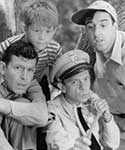
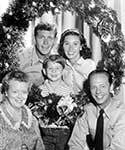
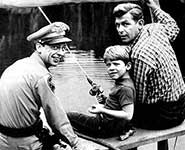
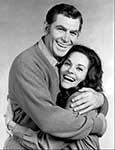

Often times when walking into a small, quaint town where everyone knows each other, one might say, “this reminds me of Mayberry.” For actor Andy Griffith, it was a town he called “home” for several years.
Actor Andy Griffith was known for his down-to-earth and likeable personality through the characters he portrayed. Griffith was most noted for his role as Andy Taylor in The Andy Griffith Show from 1960-1968 and Ben Matlock in the legal show Matlock from 1986-1995. He began his prominent career with the movie, A Face in the Crowd in 1957 and received two Tony Awards throughout his career. Born on June 1, 1926 to a blue collar family in North Carolina, Griffith’s parents saved up money until he turned three, living with relatives until they could afford a home. Without a bassinet or a crib, baby Andy slept in the dresser drawers. Growing up, Griffith was a shy child. But falling in love with the arts, music and drama, he broke out of his shell and landed a role in his high school play. He also performed in the high school band playing the trombone.
Historian Jim Gibbons will discuss the life and career of Griffith. Gibbons will explain how after graduating from the University of North Carolina, Griffith began his rise to fame as a film star. He will discuss his great friendships with costars Don Knotts and Jim Nabors of The Andy Griffith Show and how Griffith was and still is known for being a role model to many today.
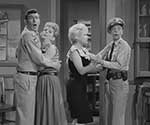
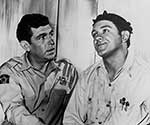
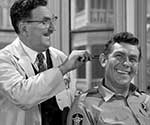
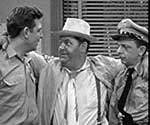

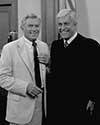
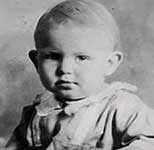
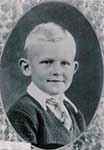
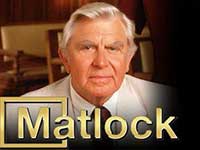

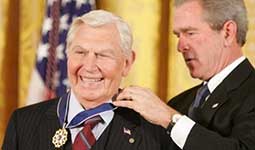


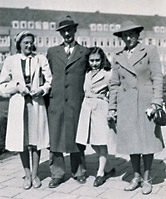

The Life Story of Anne Frank
Anne Frank was a young girl trying to grow up in Germany during the turbulent times of World War II. In the late 1920’s and early 1930’s, Adolph Hitler and the Anti-Semitic Nazi Party became a political power in Germany, winning control of the government in 1933. Being Jewish, Anne’s family was forced to move to Amsterdam in the Netherlands. In May of 1940, the Netherlands fell under Nazi rule. Eventually, Anne’s family had to go into hiding. For two years they hid in a Secret Annex above her father’s office building. Anne wrote her famous diary in the annex, only to be captured by the Nazis’ in August 1944. Forced to live in three concentration camps, she first lost her mother then her sister. Eventually, she lost her own life at the age of fifteen. Anne passed away at the Bergen-Belsen Concentration Camp in Germany just weeks before British Soldiers arrived and liberated the camp.
Historian, Jim Gibbons, will present the Life Story of Anne Frank-- a young girl of faith, hope, relentless spirit, and wisdom beyond her years. Her story, “The Diary of Anne Frank,” has been read by millions throughout the world and transcribed into 67 different languages. Anne’s diary was turned into major stage productions, won the 1956 Pulitzer Prize for Drama, and became a 1950’s movie that won three Academy Awards.
Despite all the tragedy she saw, Anne kept an extremely positive attitude proclaiming that,
“In spite of everything, I believe that people are really good at heart.”
Apollo 11
The 1969 Apollo 11 Moon Landing
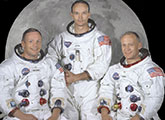

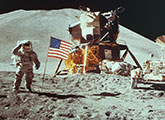
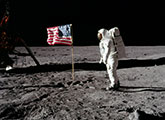
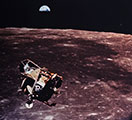
On July 20, 1969, NASA’s astronauts, Mission Commander Neil Armstrong and Pilot Buzz Aldrin, became the first Americans to land on the moon in the Apollo 11 space journey. This was, as Neil Armstrong said, “One small step for man, one giant leap for mankind,” as it ended America’s Space Race with its Cold War rival, the Soviet Union.
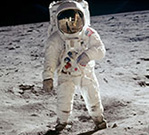 Historian Jim Gibbons will discuss the space goal proposed by President John F. Kennedy in 1961 and how it was fulfilled for the U.S. in 1969. Gibbons will explain how Armstrong became the first man to walk on the moon with Aldrin following behind 20 minutes later. He will discuss how both men spent almost a full day on the surface of the moon, bringing back many lunar items with them, and how this launched an important part of American history.
Historian Jim Gibbons will discuss the space goal proposed by President John F. Kennedy in 1961 and how it was fulfilled for the U.S. in 1969. Gibbons will explain how Armstrong became the first man to walk on the moon with Aldrin following behind 20 minutes later. He will discuss how both men spent almost a full day on the surface of the moon, bringing back many lunar items with them, and how this launched an important part of American history.
Battle of the Bulge
The Battle of the Bulge
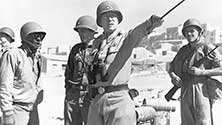
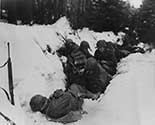
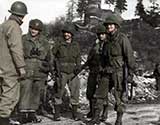
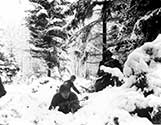

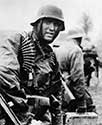
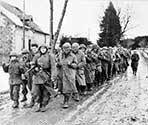
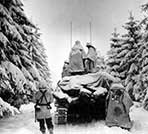
When the Germans launched a surprise attack in World War II on the morning of December 16, 1944, this would take the Americans completely off guard and would become a great loss for American troops. The attack was one of the last of the German offensive campaigns on the Western Front, spanning from eastern Belgium, northeast France and Luxemburg from December 1944 to January 1945. This would become one of the largest and bloodiest single battles fought during World War II by the United States Armed Forces. It became known as The Battle of the Bulge.
Also known as the Ardennes Counteroffensive, the intention of the battle was to split Allied lines, allow the Germans to take control and force the Western Allies to sign a Peace Treaty that would benefit the Axis Powers. American casualties were over 75,000 and German casualties were over 100,000.
Historian Jim Gibbons will discuss the events that took place before, during and after The Battle of the Bulge and will discuss the major commanders, strategies and turning points in the battle. Gibbons will explain why the battle was significant to American history, and why to this day, it is seen as one of the most brutal battles and second deadliest.
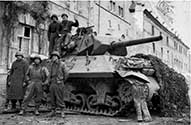
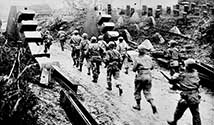
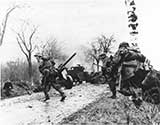

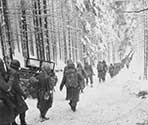
Battle of Iwo Jima
The War in the South Pacific: The Battle of Iwo Jima

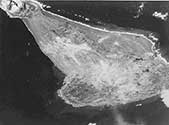
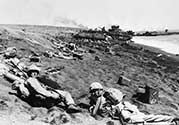
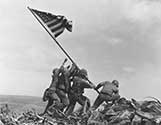
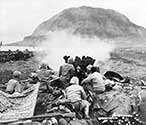

When the United States Navy and Marine Corps landed on the island of Iwo Jima in February 1945, the goal was to capture all of the island, including the Japanese airfields. During World War II, Americans would attack the Japanese mainland, capturing the island from the Imperial Japanese Army. This was known as The Battle of Iwo Jima.
The Battle of Iwo Jima, which was part of the War in the South Pacific, took place from February to March 1945. After the battle ended, it resulted in the heavy loss of life for both Japanese and American forces. The number of Japanese lives lost in combat tripled compared to American lives lost. This resulted in American victory as the strength in arms, air force, supplies and more outweighed that of the Japanese army.
Historian Jim Gibbons will discuss the events that took place before, during and after the Battle of Iwo Jima, as well as details of The War in the South Pacific. Gibbons will explain why the battle was significant to American history, and why it was the first major battle to take place on Japanese homeland.
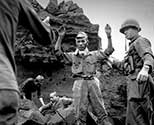
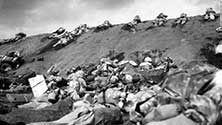
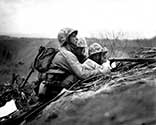
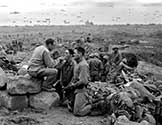
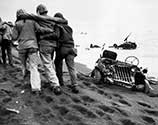
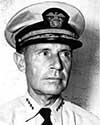
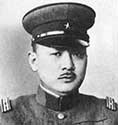
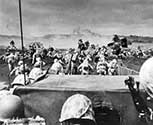
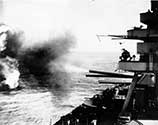
Battle of Okinawa
The War in the South Pacific: The Battle of Okinawa
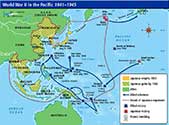
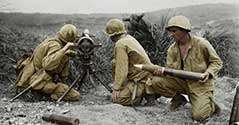
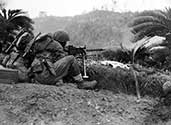


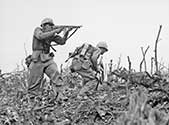 When the United States Marine and Army forces landed on the island of Okinawa in 1945, after movement from island to island, the goal was to institute Operation Downfall and invade the Japanese home islands. As the last major battle of World War II, the battle was known to be ferocious. It included Kamikaze attacks from Japanese and involved a massive number of allied ships and vehicles that occupied the island. This was known as The Battle of Okinawa, which was part of Operation Iceberg.
When the United States Marine and Army forces landed on the island of Okinawa in 1945, after movement from island to island, the goal was to institute Operation Downfall and invade the Japanese home islands. As the last major battle of World War II, the battle was known to be ferocious. It included Kamikaze attacks from Japanese and involved a massive number of allied ships and vehicles that occupied the island. This was known as The Battle of Okinawa, which was part of Operation Iceberg.
The Battle of Okinawa, one of the most intense battle of the War in the South Pacific, took place from April to June 1945. After the 82-day battle ended, it resulted in the heavy loss of life for Japanese and American forces as well as Okinawans. Drafted and wearing Japanese uniforms, over 140,000 Okinawans were either killed in battle, commit suicide or went missing. Both sides also lost a considerable number of battleships and aircrafts during the battle.
Historian Jim Gibbons will discuss the events that took place before, during and after the Battle of Okinawa, as well as details of The War in the South Pacific. Gibbons will explain why the battle was significant to American history, and why it was considered the bloodiest battle of the War in the South Pacific.

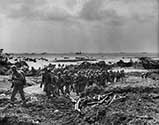
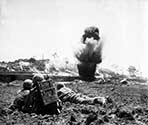
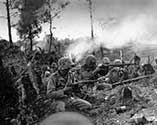
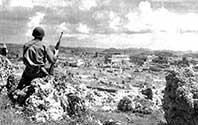
Berlin Wall
The Berlin Wall: A Curtain of Iron
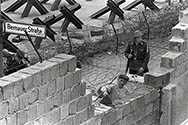

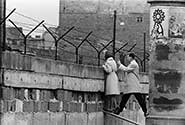
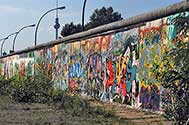

On March 5, 1946, Winston Churchill spoke at Westminster College in Fulton, Missouri. Churchill will state the following: “From Stettin to the Baltic to Trieste in the Adriatic, an iron curtain has descended across the continent. Behind that lie all the capitals of the ancient states of Central and Eastern Europe.” Churchill was speaking about Russian aggression immediately following WWII. Part of that aggression was the German capital of Berlin, a city now divided due to German tactics causing WWII. The Allies: United States, Great Britain and France controlled West Berlin; Russia controlled East Berlin. The Allies believed a strong German democracy would help Europe to prosper after the war. Russia wanted to keep Germany poor so they would never to have the power to attack Russia again. A stalemate occurs, and due to the opposing views, Berlin, a major city and its people, are now divided.
Historian Jim Gibbons will present the story of The Berlin Wall. Gibbons will show how the ravaging of WWII will soon cause great mistrust amongst the nations that brought an end to that war. It will be labeled, “The Cold War.” Nations which were once free are now under Russian control. Russia, to keep that control, must control Germany at all costs. One will be the division of Berlin, Germany’s capitol city. On June 24, 1948 Russia will divide Berlin with a blockade. On August 12-13, 1961 in a surprise move without warning, a wall will suddenly appear in Berlin, dividing not just the city but the families commuting back and forth within it. Now whole families are cut off from communicating with or seeing each other. Gibbons will show how the struggles of time affected not only the people of Berlin but the world as well. With time, events will take root. The outcome will be that after 30 years of the wall and its separation of a city, a divided city will finally unite and the wall will officially be torn down.

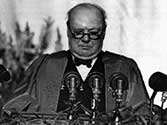




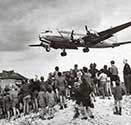
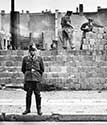

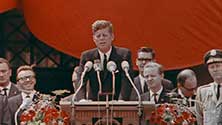
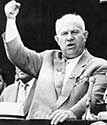
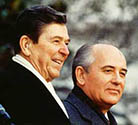

Bobby Kennedy
The Life of Robert "Bobby" Kennedy
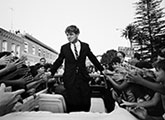
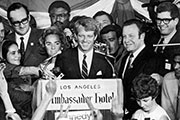
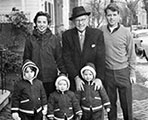
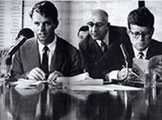
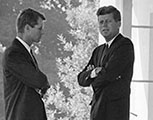
Robert Francis “Bobby” Kennedy (also known as RFK), was one of seven children in the Kennedy family. As brother of President John F. Kennedy, he served as John’s campaign manager in the election of 1960. As Attorney General from 1961 to 1963, he advocated against organized crime, the Mafia, United States foreign policy with Cuba, and was an ally in the Civil Rights Movement. He served as the United States Junior Senator from New York until his death. In his earlier life, Bobby graduated from Harvard University and the University of Virginia. He served in the United States Naval Reserve from 1944 to 1946 and worked as a correspondent for the Boston Post.
Historian Jim Gibbons will discuss the life of Bobby Kennedy and his tragic death in 1968. He will explain RFK’s strong political presence, and how he, like his brother John, could have also been the President of the United States but was denied that chance due to an assassin’s bullet.

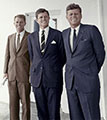
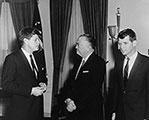
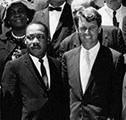


Brothers Grimm
The Fantastical Workings of The Brothers Grimm
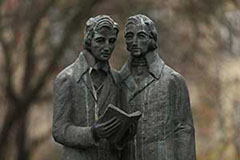
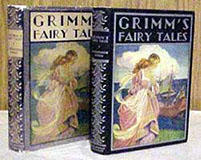
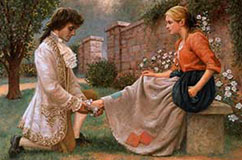
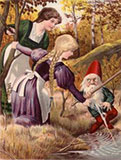
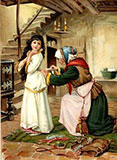
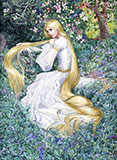
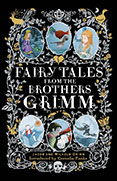
Many children have grown up spellbound by adaptations of the enchanting children’s stories of Cinderella, Hansel and Gretel, Rapunzel, Snow White, and Rumpelstiltskin. Called “fairy tales,” these will become children’s classics written by two brothers named Grimm. However, growing up in poverty and devastation after the death of their father in 1796, brothers Jacob and Wilhelm Grimm’s early lives were anything but magical. But pushing forward, the brothers later attended the University of Marburg where fantasy became reality. With a strong interest in German folklore, the brothers collected and revised over 200 German and Scandinavian folk tales which eventually were re-adapted into famous movies, books, and theater performances available in over 100 languages today.
Historian Jim Gibbons will discuss the lives and works of The Brothers Grimm. Gibbons will explain how two brothers’ 19th Century fairy tales still live years after their lifetime, setting a precedent for the fairy tales of today.
The Candy Industry
The Sweetest Job Ever: My Time in the Candy Industry


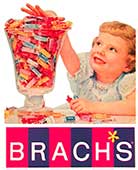

 Historical Presenter, Jim Gibbons, will discuss his years as a sales representative for the E.J. Brach & Sons Candy Company. From the enticing chocolate smell of the plant, to the eye-twinkling displays in the stores, Gibbons will present all the tricks of the trade that help you, the buyer, select your treats. Whether it be the candy corn for Halloween, the chocolate bunnies during Easter, or the peppermints during the Holidays, Gibbons will take you back to a time when life was sweet. He will explain the competitiveness, advertising, aisle appeal and psychological warfare used by candy companies to attract buyers’ attention and make you feel like a kid in a candy store.
Historical Presenter, Jim Gibbons, will discuss his years as a sales representative for the E.J. Brach & Sons Candy Company. From the enticing chocolate smell of the plant, to the eye-twinkling displays in the stores, Gibbons will present all the tricks of the trade that help you, the buyer, select your treats. Whether it be the candy corn for Halloween, the chocolate bunnies during Easter, or the peppermints during the Holidays, Gibbons will take you back to a time when life was sweet. He will explain the competitiveness, advertising, aisle appeal and psychological warfare used by candy companies to attract buyers’ attention and make you feel like a kid in a candy store.
Cary Grant
Charisma and Character: The Life of Cary Grant
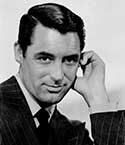
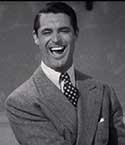
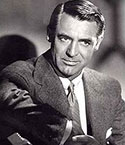
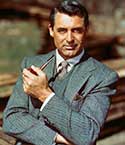
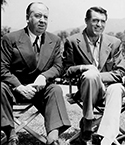
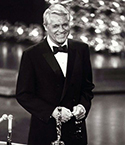
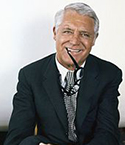
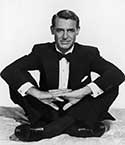 To many, Cary Grant seemed to have it made. With his charming character, handsome looks, impeccable sense of style, lavish lifestyle, and fame and stardom, he seemed to have the life of luxury. But Grant’s initial road to success was not an easy journey.
To many, Cary Grant seemed to have it made. With his charming character, handsome looks, impeccable sense of style, lavish lifestyle, and fame and stardom, he seemed to have the life of luxury. But Grant’s initial road to success was not an easy journey.
Born on January 18, 1904 in Northern Bristol as Archibald Alec Leach, Grant’s childhood was stricken with tragedy. After his oldest brother William died of tuberculosis meningitis, Grant’s mother began to suffer from extreme clinical depression. Grant’s father, an alcoholic, had his wife committed to a mental institution where she remained until Grant was in his thirties. At age 9, Grant was told by his father that his mother had decided to go on a long holiday and eventually died. However, at age 31, Grant discovered she was very much alive and was living at a mental institution. His father had lied to him. This forever impacted his life, personality and his future relationships with women.
Historian Jim Gibbons will discuss Grant’s unstable childhood, his years attending boarding schools, his early years in vaudeville troops and his pursuit of fame and acting. Gibbons will explain how Grant achieved fame in many of his romantic comedies and Alfred Hitchcock films, including The Awful Truth; Bringing Up Baby; His Girl Friday; Arsenic and Old Lace; Penny Serenade; Suspicion; To Catch a Thief; Indiscreet; and many others. He received many awards including an honorary Oscar, the Kennedy Center Oscars, and was named by the American Film Institute as the second greatest male star of the Golden Age of Hollywood after Humphrey Bogart. Gibbons will also explain how at the end of his life, Grant remained humble. As a devoted father, he often referred to his beloved daughter, Jennifer as his, “greatest production ever.”

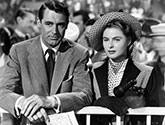

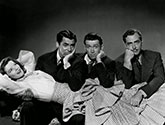
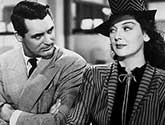
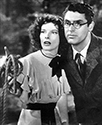

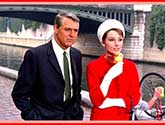

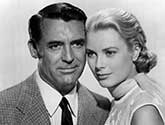
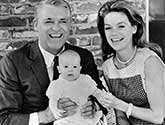
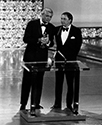
Charles Dickens
A Novelist’s Christmas Carol: The Life of Charles Dickens

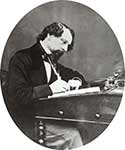

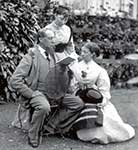


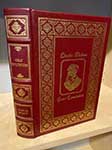
During the holiday season, one can make the choice to either embrace the holiday spirit of kindness and giving or to say “bah humbug” and be what others call, “a Scrooge.” The greedy Ebenezer Scrooge and the kindhearted Bob Cratchit and Tiny Tim, all prove as life lessons during the holiday season. These lessons, originated in the novella, “The Christmas Carol,” by Charles Dickens, have been passed down from generation to generation. Dickens has been said by many to be one of the greatest writers of the Victorian Era. In addition to The Christmas Carol, Dickens is most well-known for his fiction novels, Oliver Twist; A Tale of Two Cities; Great Expectations and more.
Historian Jim Gibbons will discuss the life of Charles Dickens and his great influence on Victorian age writing and on the tradition of holiday spirit. Gibbons will discuss Dickens’ role as a writer, his background, life and his many famous works. He will explain how Dickens, who was widely praised during his time and still continues to be for his works, was also an advocate for children’s rights and social reform.


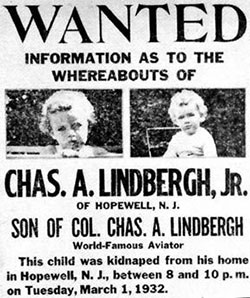
The Life of Charles Lindbergh
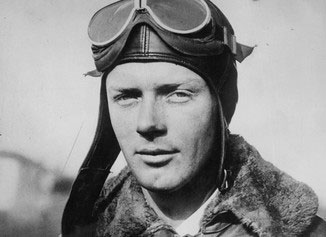
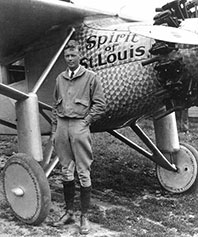
America was up in the air and Charles Lindbergh was in the center of it all. The 25 year-old Lindbergh received world recognition for his flight from Roosevelt Field on Long Island, New York to Le Bourget Field in Paris, France. The former United States Air Mail pilot was awarded the Orteig-Prize for aviation and the military Medal of Honor for his non-stop solo flight achievement. He was the 19th person to make a transatlantic flight by flying the Spirit of St. Louis. Lindbergh was credited as being the only person to double the distance taking 33 ½ hours.
He received several awards and honors throughout his life as well as the nickname, “Lucky Lindy.” However, Lindbergh endured a hardship that was anything but lucky. Married to Anne Morrow Lindbergh in 1929, the couple had 6 children. The couple’s first child, Charles Augustus Lindbergh Junior’s life would horrifically be taken short in what would later be called the “Crime of the Century.”
Historian Jim Gibbons will discuss the life of Lindbergh and his many roles throughout his life as pilot, military officer, inventor and more. Gibbons will explain how Lindbergh’s flights of success, controversial beliefs, and personal hardships earned him numerous recognitions in American history as well as his face on the United States postage stamps.
Charles M. Schulz
Snoopy, Sparky, and Peanuts: The Life of Charles M. Schulz
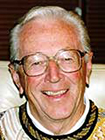
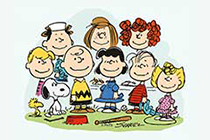
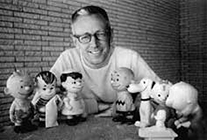
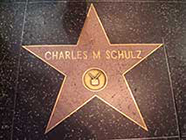
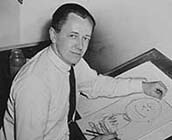
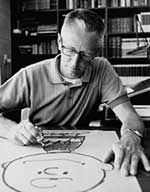
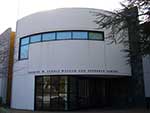
Charles M. Schulz, nicknamed, “Sparky” was the genius cartoonist famously known for his creation of the Peanuts comic strips. Schulz brought to life the beloved characters of Snoopy, Charlie Brown, Lucy and all their friends, into the hearts and homes of Americans everywhere.
Historian Jim Gibbons will discuss the life of Charles M. Schulz and his creation of the classic Peanuts’ characters and storyline that became part of American culture. After his death, Schulz’ legacy lives on. Two Apollo 10 models were named in his honor, the “Snoopy” and the “Charlie Brown.” A museum, located two blocks from Schulz’ studio, was also named in his honor called, “The Charles M. Schulz Museum & Research Center.” Schulz was honored twice by Forbes magazine as being the third and later, sixth highest-earning deceased celebrity of all time. In 2007, Schulz was also inducted into the United States Figure Skating Hall of Fame. Gibbons will explain how Schulz became widely-known as one of the most influential cartoonists of all time, and how he went on to receive many awards, including the prestigious Congressional Medal Award signed by President Bill Clinton.





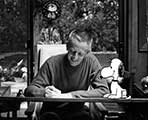
Chernobyl
The Chernobyl Disaster
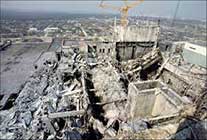
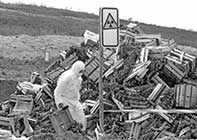

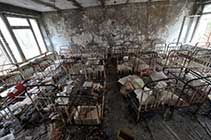
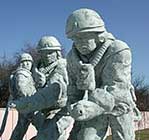
On April 26, 1986, one of the worst nuclear disasters in history took place—the Chernobyl Disaster. The nuclear and radiation disaster was one of extreme severity that at no notice, took thousands of lives and changed numerous others for decades and generations to come. It was a radiation blast of epic proportions, causing Cancer, death and numerous additional illnesses and ailments. What started as a safety test on the steam turbine in the plant, ended in an explosion that affected everyone and everything for miles and miles and years to come.
Historical Presenter, Jim Gibbons, will discuss The Chernobyl Disaster and the havoc it created. Gibbons will explain the events that took place before, after, and during the event. He will discuss the heroes of the disaster clean-up, the Chernobyl Liquidators. Gibbons will also explain how the Soviet Union and world dealt with the disaster then, and its effect on generations afterwards.

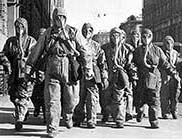
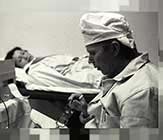
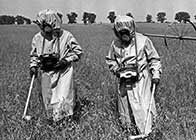
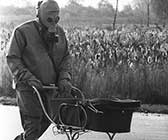
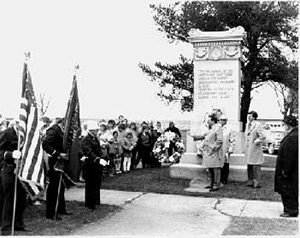

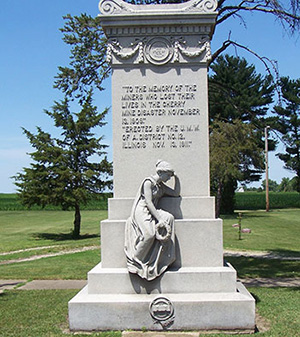
The Cherry Mine Disaster in 1909
The year is 1909. You are new to the United States and must work hard to keep your family fed. You are willing to risk the odds, working for long hours at levels from 165 feet to 500 feet below the surface of the earth mining coal to obtain your goal. The hours are long, and the work back-breaking. Working by the sweat of your brow with fellow miners, some as young as ten years-old, you must work at a fast pace. You are not paid by the hour but are paid by the ton for a flat rate of $1.08. Remember that time is money! Suddenly, you hear screams as a flash fiery inferno has just ignited the mine. Within seconds it will bear down on you, offering little possibility for you or your colleagues to escape!
Historian, Jim Gibbons, will present the November 13, 1909 Illinois Cherry Mine Disaster. Of the estimated 481 men and boys that went into the mine that day, 259 of them lost their lives. In 1910, the Illinois Legislature established stronger fire and safety regulations governing the mines. Not soon afterwards, the State of Illinois adopted a Liability Act which eventually became the Illinois Workmen’s Compensation Act. New mining safety procedures became law, strengthening the case for new members by the United Mine Workers.
The Cherry Mine Disaster is ranked among the top three mining disasters in our nation’s history due to loss of life and ranked number one by the United States Department of Labor due to fire!
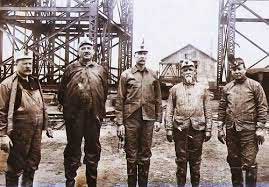

Chicago Fire
The Great Chicago Fire
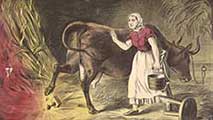
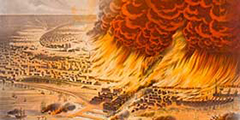

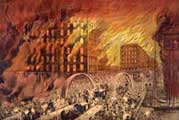
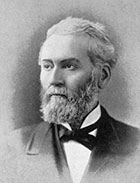

The Anniversary of The Great Chicago Fire of 1871 will take place on October 8-10, 2021 in remembrance of the widespread fire that erupted over Chicago in 1871. The Great Chicago Fire, is often presumed to have started accidentally when Mrs. O’Leary’s cow kicked over a lantern in the O’Leary barn on October 8, 1871 by DeKoven Street in Chicago. Approximately 300 people died in the fire, over 100,000 residents were left homeless and over three miles of the city were destroyed.
Historian Jim Gibbons will discuss the events that took place before, during, and after The Great Chicago Fire and how it impacted Chicago’s history. Gibbons will explain the theories on how the fire began, its impact on the area and its residents, and how fire prevention and building codes were affected and updated after the fire.
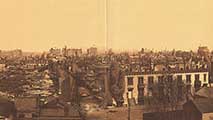
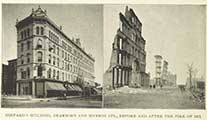

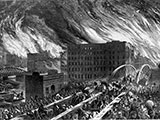

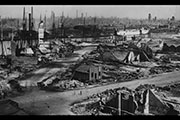
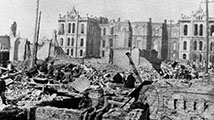
Chicago’s Ethnicities
Chicago’s Ethnicities: The Heart of the City

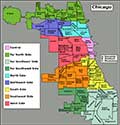
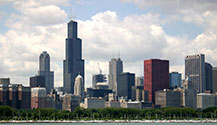
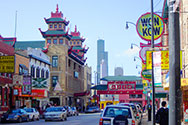
Former Mayor Richard J. Daley referred to the City of Chicago as a beautiful quilt made up of many different neighborhood nationalities sewn together. That’s Chicago. From Edison Park and Rogers Park in the North, to Riverdale and Hegewisch in the South, the City of Chicago is comprised of nine different sections, including the North, West and South Sides. Within these nine sections are 77 different community areas called “neighborhoods.” Each neighborhood has its own special ethnic group that helps to form Chicago, the third largest city in the United States.
Diverse ethnic groups came to Chicago from all different parts of the world seeking a new life and a new beginning. Many arrived as immigrants. These were hardworking people from Europe, Asia, South America and Africa. They were Lithuanian, Polish, Mexican, Puerto Rican, Italian, Irish, African, Greek, Norwegian, Chinese, German and Native American. The term used to enjoin all of these nationalities together is the “melting pot.”
More than half the population of the State of Illinois live in the Chicago metropolitan area and are made up of a variety of nationalities, races and cultures. Many of whom are distinct nationalities interacting with each other every day, forming the makeup of the City of Chicago. Proud of their ethnic backgrounds and their heritage, they are the backbone that keeps the city of Chicago moving forward to the future. Though different in nationality and culture, Chicagoans are united when it comes to events showing the city’s pride and popular strengths, such as sports.
Historian Jim Gibbons will discuss the City of Chicago, the history behind the neighborhoods and its ethnic backgrounds. He will discuss how the city became known as the melting pot of the world. Gibbons will also explain how despite differences in diversity, these ethnic groups learn, grow and prosper together as an example for all the world to see.
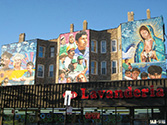
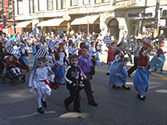
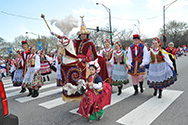


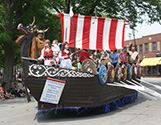
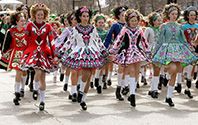

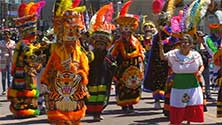
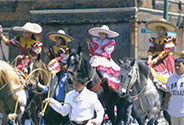

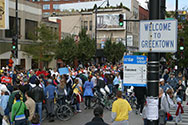
Chicago's Nationalities & Cultures
Chicago’s Foundation: Its Nationalities, Cultures and Legacies
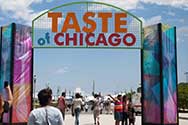
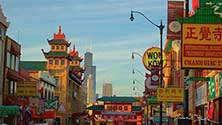



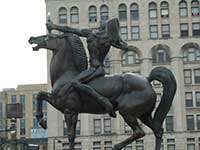 Former Mayor Richard J. Daley referred to the City of Chicago as, “a beautiful quilt made up of all the different neighborhood nationalities all sewn together.” That is Chicago. These are hardworking people of all colors, all races and all creeds. They come from Europe, Asia, South America and Africa. They are Lithuanian, Polish, Mexican, Puerto Rican, Italian, Irish, African, Greek, Norwegian, Chinese, German and Native American. They form the make-up of Uptown, Humboldt Park, Lincoln Park, Hyde Park and Bridgeport. Yes, these are the people who are Chicago! They are that kind of razz-ma-tazz, rich with warmth and style that legendary singer, Frank Sinatra, used to sing about.
Former Mayor Richard J. Daley referred to the City of Chicago as, “a beautiful quilt made up of all the different neighborhood nationalities all sewn together.” That is Chicago. These are hardworking people of all colors, all races and all creeds. They come from Europe, Asia, South America and Africa. They are Lithuanian, Polish, Mexican, Puerto Rican, Italian, Irish, African, Greek, Norwegian, Chinese, German and Native American. They form the make-up of Uptown, Humboldt Park, Lincoln Park, Hyde Park and Bridgeport. Yes, these are the people who are Chicago! They are that kind of razz-ma-tazz, rich with warmth and style that legendary singer, Frank Sinatra, used to sing about.
Historian Jim Gibbons will discuss the City of Chicago, its ethnic diversity, cultural history and its many historical contributions. From museums, to music, to art, to literature; and finally, to its culinary dishes, Gibbons will show you “A Taste of Chicago” you will not want to miss!



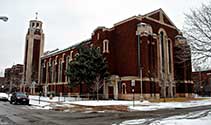
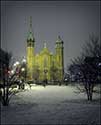

Chicago Gangsters vs. Eliot Ness
The Rivalry of the 1920’s Chicago Gangsters versus Eliot Ness
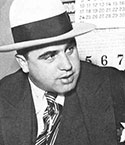

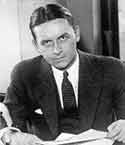
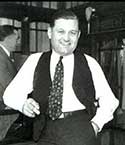


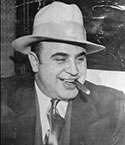
The Roaring 20’s was a time of The Volstead Act, the 18th Amendment, and the prohibition of alcohol. Yet behind the scenes, the public still wanted booze and the mob was more than happy to supply it. Due to the public’s thirst, bootlegging became big business and big business was big money. Combined with gambling, narcotics and prostitution, fortunes would be made. The only problem--it was all illegal.
In Chicago it was called, “The Outfit,” or “The Organization,” originating in the South Side of Chicago. In the 1920’s, The Organization was under the control of Al Capone. In the meantime, its rival, The North Side Gang (originally called, “The Market Street Gang”), is under the control of Bugs Moran. Turf wars began for control of profits and power. This thirst for power will soon trigger the February 14, 1929 St. Valentine’s Day Massacre by Al Capone. This attack will start a five-year gang war between Al Capone and Bugs Moran. It will then damage both Capone’s image as well as the City of Chicago’s for years to come. Now thrust into the national spotlight, the public will cry out for immediate action. This action will soon arrive in the form of the Federal Bureau of Investigation’s agent Eliot Ness.
Historian Jim Gibbons will discuss the arrival of FBI agent Eliot Ness to the City of Chicago. Ness will then search through the records of prohibition agents, and hand-pick a reliable team. Due to the swift work of Ness and his men, Al Capone will be indicted and charged with 5,000 Volstead Act violations. No matter how many times The Organization tried, Ness and his men could not be bribed nor intimidated. Charles Schwarz of the Chicago Daily News will soon nickname these federal agents, “The Untouchables.”
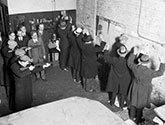
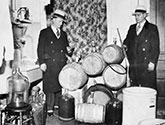
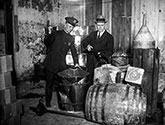


Chicago's Landmarks
Chicago’s Landmarks and the Names Behind Them
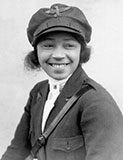
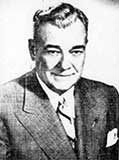
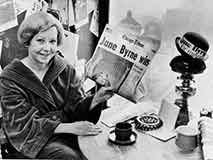

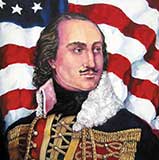
Dan Ryan, Jane Byrne, Bessie Coleman, and Casimir Pulaski—these are all names that we hear about almost every day. Yet, who were these people and why do they hold such a place of honor on Chicago’s landmarks? Historian Jim Gibbons will explain just that and more about Chicago’s most well-known landmarks and the famous names behind them.
Chicago World’s Fair
The 1893 Chicago World’s Fair
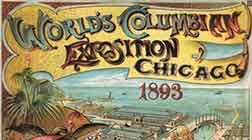


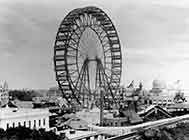
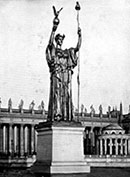
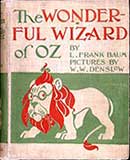
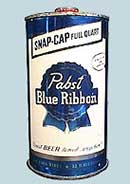
The year is 1893 and the city of Chicago is booming. Chicago is told it will be the city chosen among several others to officially hold the World’s Columbian Exposition, celebrating the 400th Anniversary of Christopher Columbus’ arrival. The fair will mark a turning point in Chicago’s history, bringing diverse cultures to the area as well as architecture, the arts, sanitation and more. It will also help bring an industrial boom to the city, bringing those from all over the world to what would become a key melting pot city in America.
Historian Jim Gibbons will discuss the turn of events that took place at the World’s Columbian Exposition, later to be called the 1893 Chicago World’s Fair. Gibbons will explain how Thomas Edison brought his new inventions to the fair. He will discuss how author L. Frank Baum wrote the book, The Wonderful Wizard of Oz based on the magic and beauty he saw in Edison’s inventions and other influences at the fair. While the fair brought to light many new inventions, cultures, and literary works, it also cast darkness among the city as America’s first well-known serial killer, Dr. Henry Howard Holmes (also known as H.H. Holmes), confessed to murdering between 27-200 people in his hotel. The book, The Devil in the White City: Murder, Magic and Madness at the Fair that Changed America, would later be written by author Erik Larson based the H.H. Holmes murders. On a lighter note, the inventions and magic can still be found in Chicago’s last-standing building of 1893, The Museum of Science and Industry, where families, adults and children can learn and explore technology, history and culture of the past and present.
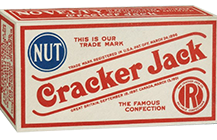
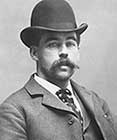

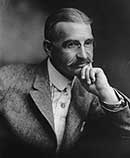

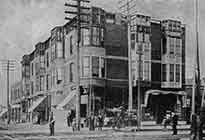

Chicago’s Yesteryear
Chicago’s Yesteryear
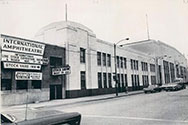
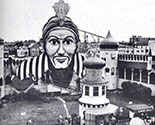

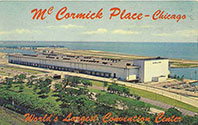
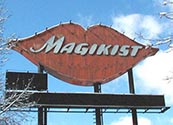

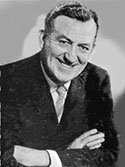
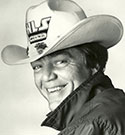
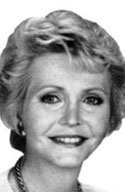
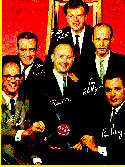
The Chicagoland area is filled with memories of the past. They were fun times-- the International Amphitheatre hosting the Sportsman’s Show; Ringling Bro. and Barnum & Baily Circus; and the greatest event of the year, the Automobile Show! You might then stop for a great steak dinner at the Stockyard Inn right next door, or travel into the city to eat at The Berghoff or Won Kow’s.
During the day, fun activities were in store for the entire family at the corner of Western and Belmont Avenues. Two Ton Baker would encourage your family to: “Come out today and laugh your troubles away at RIVERVIEW!” You would ride The Bobs, visit Aladdin’s Castle, Shoot the Chutes, or have the floor drop right out from under you, being held up by centrifugal force riding The Rotor.
You might decide to take the family to a first-run movie at the Woods, McVicker’s, or Michael Todd Theatre. Returning home, you turn on your television to the 10:00 news. You would first hear, “How do you do ladies and gentleman? I’m Fahey Flynn.” Into the broadcast, Flynn would turn to weatherman P.J. Hoff and ask him, “So what’s the outlook P.J?” P.J. would then show us the forecast and sketch a picture as well! Mayor Richard J. Daley respected Flynn so much that he often referred to him as, “Da Fahey!”
You may also take a nice, relaxing vacation for the family and stay at the beautiful Edgewater Beach; The Drake; Blackstone; Conrad Hilton; or the Albert Pick Congress Hotel.
And last but not least, you may choose to visit Chicago’s showplace on the lake front, the new and totally fireproof, McCormick Place Convention Center and Arie Crown Theater.
Historian, Jim Gibbons, will bring back all the fun and excitement of the Chicagoland area past-- the theatres, museums, amusement parks, restaurants, local celebrities, television shows and much, much more! Gibbons will show you that Frank Sinatra was right when he stated, “My kind of town, Chicago is!”
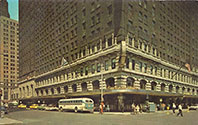
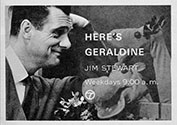


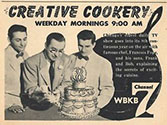
Civil War
The American Civil War


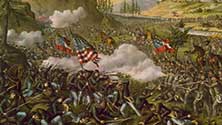
The American Civil War is said to be one of the bloodiest wars in American history. The war, which lasted from 1861 to 1865, was between the Confederate States of America and the remaining states of the Union. In 1861, seven of the slave states in the South decided to secede from the United States and form the Confederate States. They attacked Fort Sumter and the confederacy grew to 11 of the 34 states.
Historian Jim Gibbons will discuss the events that took place before, during, and after the Civil War and how it claimed the lives of over 700,000 American soldiers. Gibbons will explain how after the war, slavery was abolished in the country and national unity was restored. He will also discuss the importance of Juneteenth and how it commemorates the emancipation of African American slaves. Gibbons will explain the Juneteenth National Independence Day Act, signed by President Joe Biden in 2021, to officially make June 19th a National Holiday of Freedom.
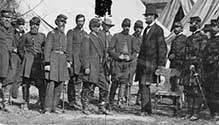

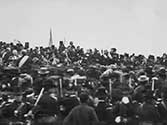
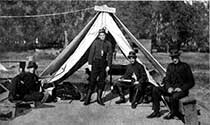
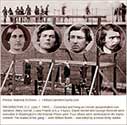


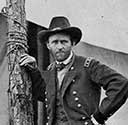



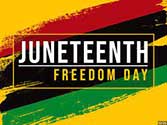
Colin Powell
The Life of General Colin Powell
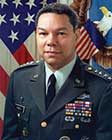
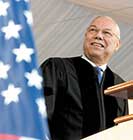
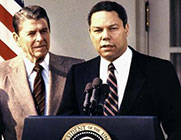
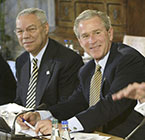
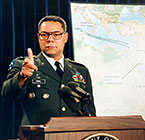
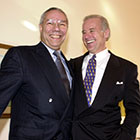
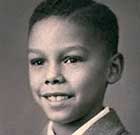
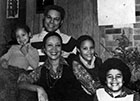
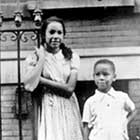
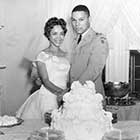
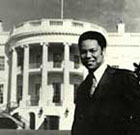
Colin Powell, a four-star decorated general has made a strong name for himself in American politics. Receiving numerous United States and foreign awards and honors, Powell was the first African American to hold the position of Secretary of State. Before Barack Obama’s presidency, Powell was also the highest-ranking African American in the history of the Federal Executive Branch, along with Condoleeza Rice. From 1987 to 1989, he also served as the United States Security Advisor as well as the Chairman of the Joint Chiefs of Staff from 1989 to 1993.
Historian Jim Gibbons will discuss the life of Powell and his extensive career in the military and politics. Gibbons will explain how Powell oversaw over 28 crisis’s, including the invasion of Panama in 1989 and Operation Desert Storm in the Persian Golf War in 1990 and 1991 against Iraq. He will also explain how many hope that Powell, who received the Presidential Medal of Freedom twice, the Congressional Gold Medal and many more prestigious awards, might consider a run for the office of President of the United States!
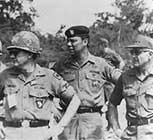
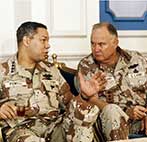
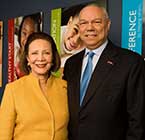
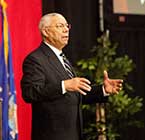
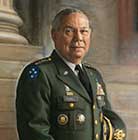
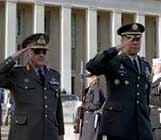
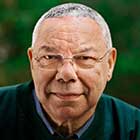
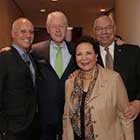
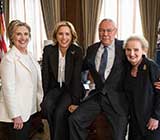
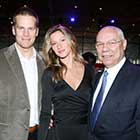
D-Day
D-Day: The Invasion of Normandy

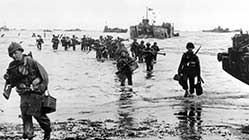
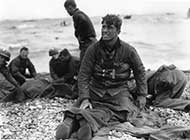
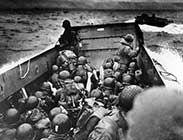
D-Day, the invasion of Normandy, France on June 6, 1944, is the beginning of Operation Overlord. The Western Allies will launch the largest amphibious invasion in history. This is an effort to liberate mainland Europe from Hitler’s Nazi occupation during World War II. Hitler already took the Rhineland, Austria, Czechoslovakia, Poland, the Netherlands, Belgium, and France. He has his eye set to conquer Britain as well as Russia, gaining strength by the day. Nazi Hitlerism must be stopped at all cost. The fate of the World lies in the balance.
Historian Jim Gibbons will present the story of D-Day: The Invasion of Normandy. On June 6, 1944, Western Allies, under the leadership of the Supreme Allied Commander, United States General Dwight D. Eisenhower, will suddenly turn the tide of Hitler’s advances and strategy. The Allied Forces, the United States, Britain, Canada, and Free French forces, will establish a beachhead that deliberately occupies Normandy, the northern coast of France. Gibbons will show you the beginnings of what led up to this invasion and how Allied timing had to be precise on everything, including the month, moon, tides of the ocean, and weather. Finally, Gibbons will show the tremendous pressure that rested on the shoulders of General Dwight D. Eisenhower, a man nicknamed “Ike.” He will have the responsibility of giving the signal to move nearly three million men, sixteen million tons of arms, munitions, and supplies to break the movement of Hitler’s rush to power. Eisenhower knew that the time was now. If timing is perfect, Allied victory is in sight; if not, he will take full responsibility for its failure.



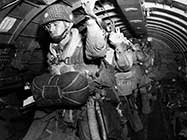
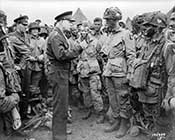
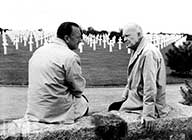
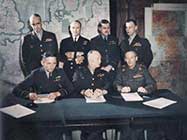
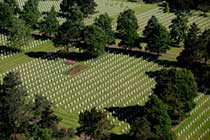
Dr. David Livingstone
The Life of Dr. David Livingstone, African Explorer
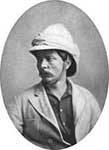
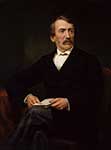

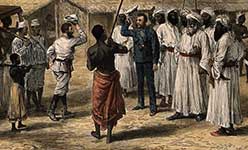
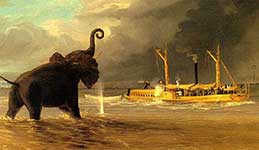
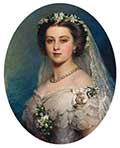

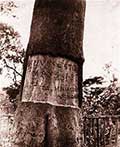
Throughout most of his life, Dr. David Livingstone was on a quest. With a quest to explore Africa and bring Christianity to the people there, his involvement would eventually lead to the end of the East African Arab-Swahili slave trade. With a focus on enriching industry for the tribes in Africa and ending slavery, Livingstone, a studious and hard-working Christian Missionary, set his quest on making tributaries around the Nile River. His hope was to bring prosperity to those in Africa, making the country’s industry bloom. In turn, he also wanted to make Britain’s industry and trading with Africa boom. Backed by Queen Victoria, and with the support of his wife and many children, Livingstone spent most of his life pursuing African missionary travels. He would cross the continent from west to east—a feat no European had every accomplished before, and would discover Victoria Falls! Victoria Falls received its name by Livingstone in honor of the queen.
Historian Jim Gibbons will discuss the adventurous life and travels of Dr. David Livingstone—an explorer, Scottish physician, Protestant missionary, and as many have stated, an inspiration and hero of the Victorian Age.

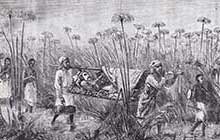

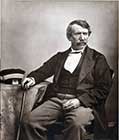

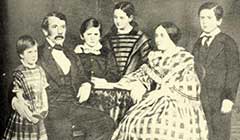

Dr. Seuss
Dr. Seuss is on the Loose: The Life of Theodor Seuss Geisel




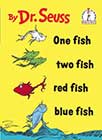
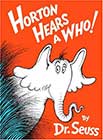
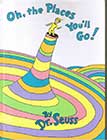



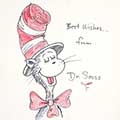
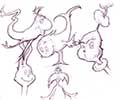

Theodor Seuss Geisel was his name, and as “Dr. Seuss” he will claim his fame. Learning words that rhymed at his mother’s knee, he will put it to good use for you and for me! He will start to write books about Mulberry Street, which will change reading forever and was really quite a feat! Creating new words, just so long as they rhymed, he made reading fun, not a bore nor a grind!
Then, Random House Publisher, Bennett Cerf will read one. He loved all the wording, the artwork, the fun! And said, “I will publish as many, as Seuss can get done!”
From Green Eggs and Ham to Horton Hears a Who!; The Cat in the Hat, and McElligot’s Pool--over 60 books in all, oh the works he shall do! Oh the places he’ll go, all the things he shall see, from book signings, to lectures, and even T.V.! Over 600 million copies, 20 languages and more, now animation and filmmaking, and lots more in store! Dr. Seuss is so popular, so famous in size, he won 2 Academy Awards, 2 Emmy’s, and a Pulitzer Prize!
Historian, Jim Gibbons, will present the life of Theodor Seuss Geisel, whose life was not boring, not even a trifle. You’ll hear about One Fish, Two Fish, Red Fish, Blue Fish; How the Grinch Stole Christmas; and If I ran the Zoo; Ten Apples up on Top; and The Lorax too! Oh, the things you shall learn, no time will you waste, we’d tell you more still, but we’ve run out of space!

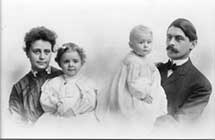
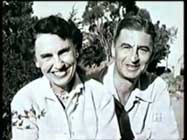


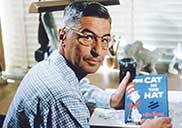
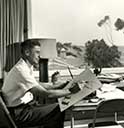
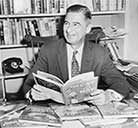
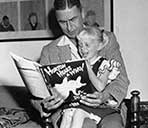
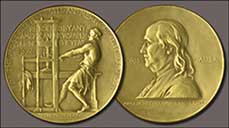
Dwight D. Eisenhower
Duty, Honor, Country: The Life of Dwight D. Eisenhower
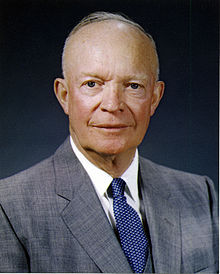 Duty, Honor, Country. This is the West Point motto - a motto that graduate, Dwight D. Eisenhower, lived his entire life. From growing up in the small town of Abilene, Kansas, he became a soldier at West Point, a Five Star General, Columbia University President, and finally, our 34th President of the United States. Eisenhower lived and died by this motto. He was a man who could charm you one minute with his warm, down-home attitude, and broad grin, but in an instant could become a man of steel. He led nations to absolute victory on Normandy Beach and the eventual ending of World War II.
Duty, Honor, Country. This is the West Point motto - a motto that graduate, Dwight D. Eisenhower, lived his entire life. From growing up in the small town of Abilene, Kansas, he became a soldier at West Point, a Five Star General, Columbia University President, and finally, our 34th President of the United States. Eisenhower lived and died by this motto. He was a man who could charm you one minute with his warm, down-home attitude, and broad grin, but in an instant could become a man of steel. He led nations to absolute victory on Normandy Beach and the eventual ending of World War II.
Historian, Jim Gibbons, will present the life of the man known as “Ike”, a man of wisdom, courage, and vision. Through his legacy, we learn to guard against the ever-present dangers that our country faces today. Finally, you will see why the slogan, “You like Ike, I like Ike, everybody likes Ike,” not only applied to the Republicans but to Democrats alike! Everyone respected Ike!
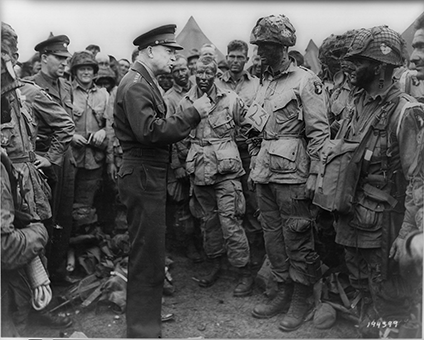
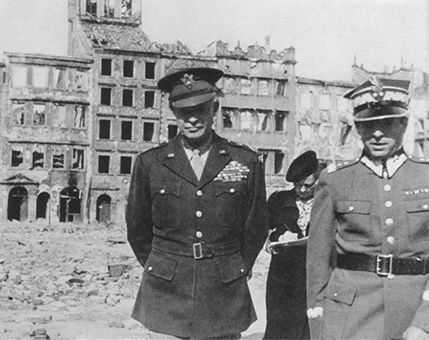
Edith Head
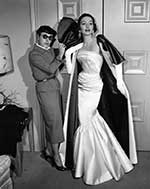
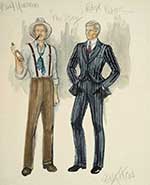
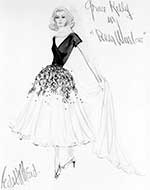
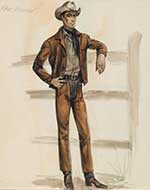
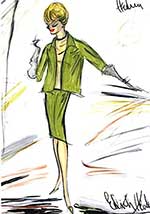
Fashionable: The Life and Fame of Edith Head
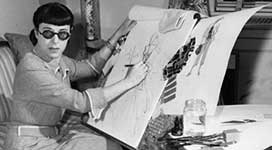

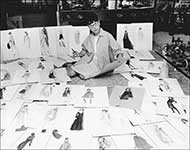
Before Brandon Maxwell’s designs for Lady Gaga, there were Edith Head’s designs for Grace Kelly. With just a sketch and her passion for fashion, Head pursued her talent and transformed the entire Hollywood fashion industry into what it is today.
Starting as a sketch artist for Paramount Pictures, she was first recognized for the sarong dress she designed for Dorothy Lamour, an American actress and singer. She later rose to fame in 1948 in the fashion industry after the Academy Awards created the category of Costume Designer. Head received eight Academy Awards for costumes designed for top Hollywood actresses and actors from 1949 through 1973, including for the movie The Sting. She was known for working very closely with actresses and actors to tailor make each costume. Later, her designs became featured regularly in Alfred Hitchcock’s television shows and movies.
Historian Jim Gibbons will discuss the life and fame of Edith Head and the famous Hollywood stars she worked with, such as Grace Kelly, Audrey Hepburn, Kim Novak, Ginger Rogers, Ingrid Bergman, Cary Grant, Gene Barry, Charlton Heston, Robert Redford and more. Gibbons will explain how Head set a trend in the fashion industry, transforming it into the iconic presence it holds today. As Head said, “Fashion is a language. Some know it, some learn it, some never will—like an instinct.”

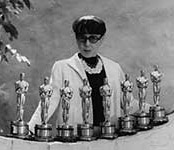
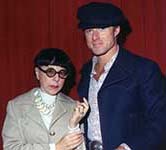
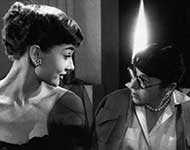
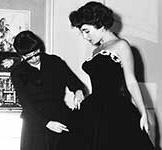
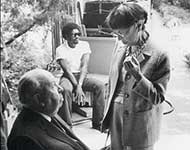
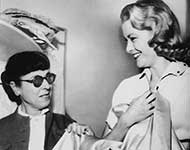
Eleanor Roosevelt
Eleanor Roosevelt: Overcoming Odds, Achieving Greatness

To this day, Eleanor Roosevelt is considered one of the most powerful and controversial women in America. Every first lady since, for better or for worse, has been compared to the actions of Eleanor Roosevelt. As the wife of President Franklin D. Roosevelt and the niece of President Theodore Roosevelt, her life was surrounded, shaped, and finally, driven full throttle into politics.
She is one of the most admired, skilled, and controversial politicians of the 20th Century. Though she never ran for public office, she wielded tremendous power by influencing those that governed. The poor, the down trodden, and the oppressed, had a strong ally in Eleanor.
Though extremely lady-like in manner, she was inflexible as steel when she stood up for the causes she believed in. Eleanor was warm and tender with close friends, but was never taught the mothering skills to get close to her own children. She enjoyed being in the public spotlight, but was least comfortable within her own family. While overcoming the odds to achieve her greatness, Eleanor Roosevelt became one of the most admired women in American history.
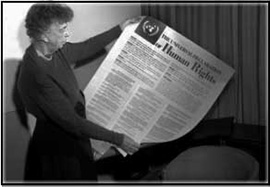

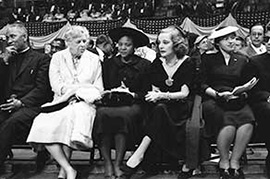
Eleanor Roosevelt and The Civil Rights Movement
As the First Lady of the United States, the head of the NAACP, and the first woman Ambassador to the United Nations to become chair of the UN Human Rights Commission, Eleanor Roosevelt became one of the most admired women in American history!
She is one of the most skilled, admired, and controversial politicians of the 20th Century, a major advocate against social injustice and an unrelenting advocate for human rights. Though she never ran for public office, she wielded tremendous power by influencing those that governed, particularly her husband. In the 1930’s she joined the NAACP, and following her husband’s death, she became a member on the Board of Directors of the NAACP and the Congress of Racial Equality. She was an advocate for civil rights and a fervent supporter of Dr. Martin Luther King Jr.
Though extremely lady-like in manner, she was inflexible as steel when she stood up for the causes she believed in. Dr. Martin Luther King Jr. called Mrs. Roosevelt, “perhaps the greatest woman of our time.” He praised, “the courage she displayed in taking sides on matters considered controversial,” and her “unswerving dedication to high principle and purpose.”
Franklin D. Roosevelt
A Rendezvous with Destiny - The Life of Franklin D. Roosevelt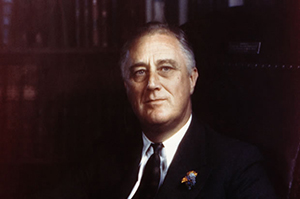
Born into a life of extreme wealth and privilege, Franklin D. Roosevelt could have spent his entire life as a country gentleman. Instead, Franklin Roosevelt had a vision and a mentor. He instead followed in the footsteps of his fifth cousin, President Theodore Roosevelt. Marrying Teddy Roosevelt’s favorite niece and Godchild, Eleanor Roosevelt, he then proceeded to follow Teddy’s political path becoming Assistant Secretary of the Navy, Governor of New York, and finally ascending to the presidency of the United States. He became the only president to be elected for four terms. Known to the world by his initials F.D.R., Roosevelt has been ranked high in history, placing him in the number three position of our top ten presidents. Per former President Richard M. Nixon’s words, “F.D.R. had the opportunity because of events to be great.”
Historian, Jim Gibbons, will present the life of our 32nd President of the United States, a man known to the world as “F.D.R.” He was a man of great adversity who, though stricken with Polio at a young age and confined to a wheelchair for the rest of his life, never gave up! With his infectious broad grin, positive attitude, and extreme confidence, he turned a nation’s spirit around during the greatest depression in our nation’s history. He stated these words, “The only thing we have to fear is fear itself!” When attacked at Pearl Harbor on December 7, 1941, Roosevelt said, “No matter how long it may take us to overcome this premeditated invasion, the American people in its righteous might will win through to absolute victory!” F.D.R. knew how to face a challenge and present it head on to the people of the United States to gear up for World War II. Roosevelt felt that America must and will continue moving forward, and that we must be free to live, love, and laugh, as he stated, “This generation of Americans has a rendezvous with destiny!”
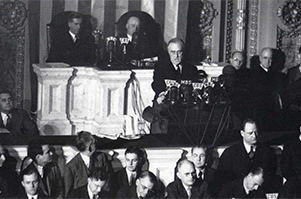
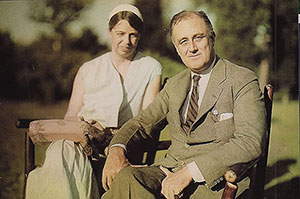
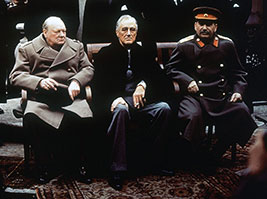
Gandhi
The Life of Mohandas Karamchand Gandhi
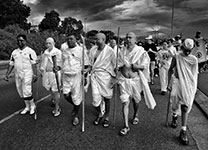
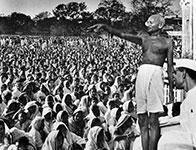
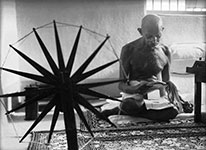
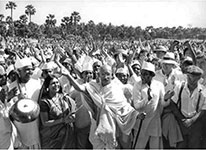
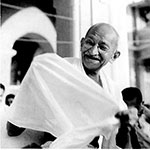
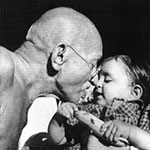
Mohandas Karamchand Gandhi lived and died by his words, “You must be the change you wish to see in the world.”
Gandhi, a lawyer and prominent figure in the Indian Independence Movement, rallied through non-violent civil rights protests in British-ruled India. He organized peasants, farmers, and urban laborers to protest against excessive land-tax and discrimination, poverty, and injustice towards women. He was later given the respectable title, “Mahatma Gandhi” in South Africa and was known to partake in fasts for extended periods of time as a form of non-violent social change. Dr. Martin Luther King Jr., Albert Einstein, Nelson Mandela, Pearl S. Buck, Cesar Chavez, George Bernard Shaw, Al Gore, and President Barack Obama, were all inspired by his teachings.
Historian Jim Gibbons will describe how Gandhi promoted freedom, simple living, self-purification and social change. To many in India, he is referred to today as the “Father of the Nation.” Gibbons will explain how Gandhi courageously lived and died by his belief of promoting peace, change, and justice through nationwide campaigns and non-violent protests.
Gerald R. Ford
A Change for the Better: The Life of Gerald R. Ford
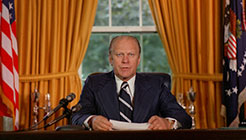
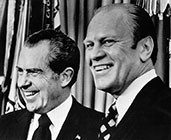

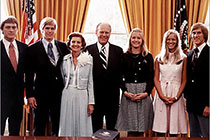
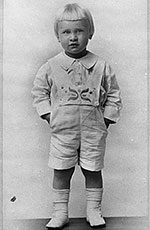
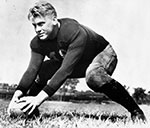

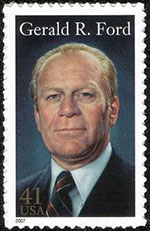
Gerald R. Ford is the only President and Vice President to serve both positions by appointment. After former President Richard Nixon resigned due to the Watergate Scandal, Ford was appointed to the position of 38th President of the United States from August 1974 to January 1977 after Nixon’s resignation. Ford was also the first person appointed to the position of Vice President after the resignation of former Vice President Spiro Agnew in December 1973.
Born as Leslie Lynch King Jr. in Nebraska in July 1913, he was named after his biological father. Sixteen days after he was born, his father threatened to kill him, his mother, and the nursemaid with a butcher knife. His mother left and divorced his father and married another man, Gerald R. Ford Sr., who became his stepfather. Receiving a second start to a loving family, he legally changed his name to Gerald R. Ford to similarly match his stepfather, whom he loved and respected. Ford went on to study at the University of Michigan and Yale Law School and enlisted in the U.S. Naval Reserve from 1942 to 1946 with the position of Lieutenant Commander. He later served in politics for 25 years, including the position of House Minority Leader and later as Vice President.
Historian Jim Gibbons will discuss Ford’s signing of the Helsinki Accords and its affect on the Cold War. Gibbons will explain Ford’s struggle with a declining economy and how he later went on to defeat Ronald Reagan and lost to Jimmy Carter. He will discuss the president’s great love for his wife, Betty Ford. Gibbons will also explain how Ford, who believed in second chances, controversially pardoned former President Richard Nixon after the Watergate Scandal because he felt he had suffered enough. From almost being murdered at birth, to being on the Warren Commission, to healing a nation after Watergate and finally, after two assignation attempts, from birth to his presidency, Ford was constantly overcoming conflict.
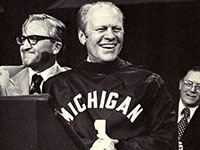



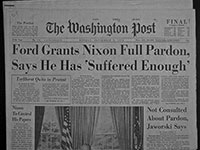
Goebbels' and Hitler's Propaganda
Goebbels’ Propaganda Machine: The Rise to Power of Adolph Hitler
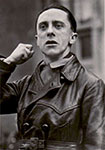
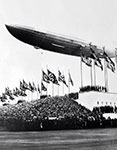
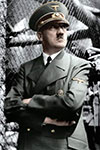


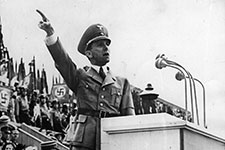
Joseph Goebbels, Reich Minister of Propaganda of Nazi Germany, was the epitome of propaganda. Goebbels stated that, “If you repeat a lie often enough, people will believe it, and you will come to believe it yourself.” Through propaganda, Goebbels would build on this lie, spreading it over the German population and infiltrating the minds of innocent children. He would make the lie become his own version of the truth. This lie would not cease even as millions are tragically murdered. And to build on this lie, he would show his undying devotion and loyalty to his leader—Adolph Hitler.
Goebbels unleased all forms of propaganda to promote Nazi leader Adolf Hitler. Everything was to show strength and power from parades, to Hitler’s massive crowd gatherings, from youth groups, to art and music; and finally, to gain total control of the media, via newspapers, radio, books and magazines. The Graf Zeppelin, The Hindenburg and the 1936 Olympic Games were all used as massive examples of Hitler’s strength, the Nazi Party and Germany’s future.
Goebbels will use propaganda as his form to strengthen Hitler and the Nazi causes, thus repressing dissent. Propaganda can be defined as, “information, especially of a biased or misleading nature, used to promote or publicize a particular political cause or point of view.”
Historian Jim Gibbons, will present Joseph Goebbels’ propaganda machine. Gibbons will discuss Goebbels’ and Hitler’s methods, madness, and relentless drive. He will explain their drive to stop at nothing in the pursuit of rebuilding what they thought to be a greater German fatherland through the leadership of Adolf Hitler and the Nazi Party.
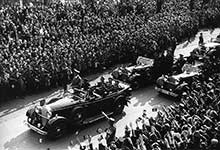
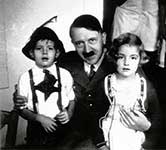
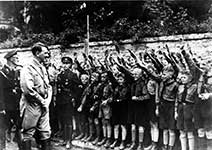
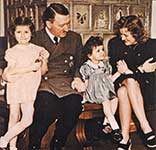

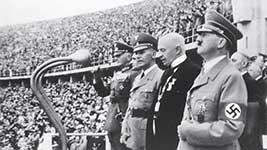
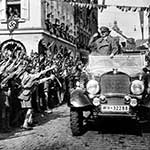
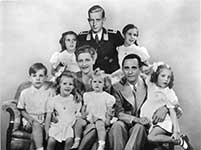
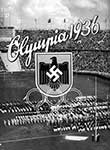
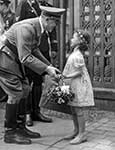
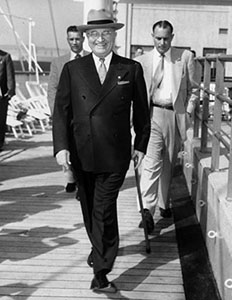
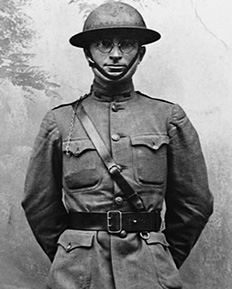
“The Buck Stops Here” - The Life Story Harry S. Truman
Harry S. Truman met his responsibilities and never turned his back on the uphill challenges of life. Truman was a Missouri farmer, revered Captain of Battery D, a failed haberdasher, presiding Judge of Missouri’s Jackson County, a two term U.S. Senator, and a Vice President of the United States for only 82 days. Then suddenly, on the death of President Franklin D. Roosevelt, Truman was thrust into office to become our 33rd President of the United States.
On the day after Truman took office he stated these words, “Boys, if you ever pray, pray for me now. I don’t know if you fellows ever had a load of hay fall on you, but when they told me yesterday what had happened, I felt like the moon, the stars, and all the planets had fallen on me.”
Historian, Jim Gibbons, will present the life of the Missouri farmer, Harry S. Truman, who became our 33rd President of the United States. Determination and persistence were the keys to Truman’s success. This includes the gaining of his wife’s hand in marriage, the dropping of the Atomic Bomb, the firing of General Douglas McArthur, and the “whistle-stop, give ‘em hell speech campaign.”
When all the press, the pollsters, and even his mother-in-law felt that he had no chance, Truman overcame all odds to achieve the presidency in his own right. Gibbons will show that even though unanimously the politicians, the press, and the pollsters acclaimed Thomas E. Dewy was the sure presidential winner, the voters were wild about Harry!
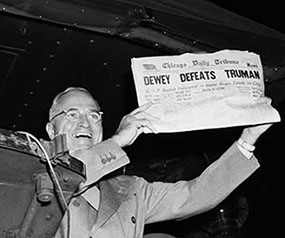
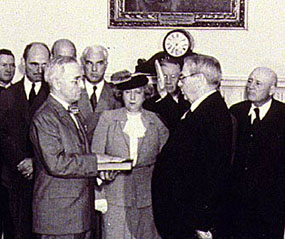
Helen Keller
The Life of Helen Keller

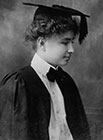




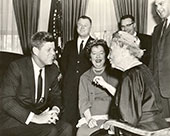
Helen Keller lived a life of determination, persistence, and encouragement. After being stricken by illness as a baby, she was left legally blind and deaf. Through the help of teacher Anne Sullivan, she learned to not only overcome her disabilities, but to far exceed her limitations. As a young child, Keller was taught by Sullivan that her disability was not an excuse to do nothing. Keller transformed from an almost feral state of existence into one of extreme achievements. As the first blind and deaf person to receive her Bachelors of Arts Degree, she became an author and a political activist, voicing her opinion on political issues.
Historian Jim Gibbons will describe Keller’s childhood and how it transformed her into the role model she became. He will explain how Keller was awarded several honors before and after her death, had a movie made about her life, and became an inspiration to many.
Hindenburg Disaster
The Hindenburg Disaster
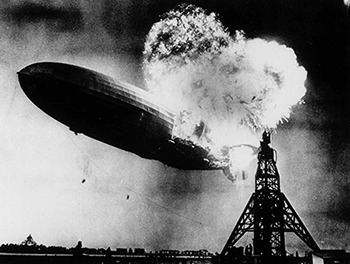 It’s 7p.m. on May 6, 1937 and you are waiting outside in the evening air for the much discussed arrival of The Hindenburg, the largest airship in history! Noted for its speed, comfort, and elegance, The Hindenburg is a strong, competitive alternative to traveling by ocean liner. Speed is its’ advantage, cutting ocean travel in half by making the entire crossing in only three days! You are excited as you wait to see this technological marvel now arriving at the Naval Air Station Lakehurst in Manchester Township, New Jersey. Along with you, many news crews are on the ground awaiting the arrival, as well as friends and family of the 97 people on board. Then at 7:25p.m., disaster occurs.
It’s 7p.m. on May 6, 1937 and you are waiting outside in the evening air for the much discussed arrival of The Hindenburg, the largest airship in history! Noted for its speed, comfort, and elegance, The Hindenburg is a strong, competitive alternative to traveling by ocean liner. Speed is its’ advantage, cutting ocean travel in half by making the entire crossing in only three days! You are excited as you wait to see this technological marvel now arriving at the Naval Air Station Lakehurst in Manchester Township, New Jersey. Along with you, many news crews are on the ground awaiting the arrival, as well as friends and family of the 97 people on board. Then at 7:25p.m., disaster occurs.
Suddenly, you watch in horror as flames ignite, engulfing the German passenger airship, turning the famous zeppelin into a gigantic fireball as it is trying to land. Everyone on the ground scatters, running for their lives. You hear the tragic screams of the passengers and crew members and their friends and family. You see several news photographers making history by quickly capturing the event in real-time on film and snapping photos. Herbert Morrison’s voice and his infamous radio recording will resound in your mind forever, “Oh the humanity! And all the passengers screaming around here…. I can't even talk to people, their friends are on there! I can hardly breathe….This is the worst thing I've ever witnessed.”
Historian Jim Gibbons will discuss the famous Hindenburg Disaster, a horrific day in our nation’s history that killed 13 passengers, 22 crewmen, and 1 ground crewman. Gibbons will explain the various theories on how the tragedy struck and how the disaster marked the end of airship travel as we knew it!
Iroquois Theatre Fire
The Chicago Iroquois Theatre Fire
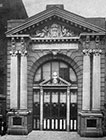
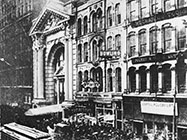

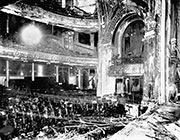
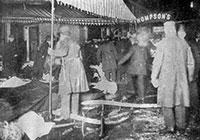
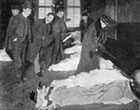

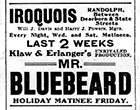
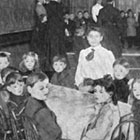
It’s December 30, 1903 and you’re excited! Today you are enjoying your day trip out of town. You are seated in the gorgeous Iroquois Theatre in Chicago. With its spacious three-level seating, high balcony, and hidden all-level staircase, the picturesque theatre is a site to see! The bottom orchestra level alone can seat up to 700 in the audience. You’ve heard how luxurious the backstage is as well! With its five levels, elevators are used to transport the actors and actresses from one level to the next. Not only are you comfortable in your seating, but you feel completely safe knowing that the theatre building, located near the Chicago Loop Shopping District, is completely fireproof and police-patrolled as advertised in the playbill. You feel so lucky to be able to have purchased a ticket! With over 2,200 people attending, all floors of the theatre including the standing room areas, are full of men, women and many children of all ages. Then, the Drury Lane musical, Mr. Blue Beard begins! Oh how you are enjoying the program! And what a gorgeous light show!
Then around 3:15p.m. disaster hits. You see fire! Flames are everywhere! People on all levels are running towards the exists, trampling each other, jumping out windows, trying to open tightly-sealed doors. Everyone is acting like trapped animals gasping and running for their lives in chaos! You are terrified! How will you escape?!
Historian Jim Gibbons will discuss the tragedy of the Iroquois Theatre Fire. Gibbons will explain how through mass panic, ignoring fire safety codes, and blocked exists, over 600 people will die. Gibbons will discuss the structure of the theatre building and events that took place before, during and after the deadliest theatre fire and single building fire in Chicago and United States’ history.
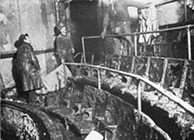
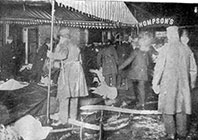

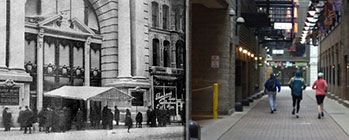

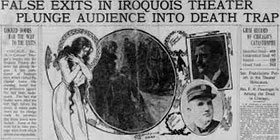
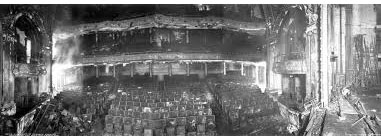
Jacqueline Kennedy Onassis
The Life of Jacqueline Kennedy Onassis




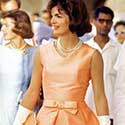

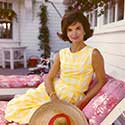
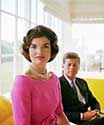 Jacqueline Kennedy Onassis is known to be one of the most stylish, charming, beautiful and classy first ladies of all time. However, though life may have seemed picture-perfect on the outside, Jacqueline, also known as “Jackie,” endured a lot of tragedies that affected her--primarily the assassination of her husband President John F. Kennedy. Jackie’s outfits and hairstyles became a popular icon among women of the time, as many embraced her style. One of her most famous outfits was the pink Channel suit and pillbox hat worn on the day her husband was assassinated.
Jacqueline Kennedy Onassis is known to be one of the most stylish, charming, beautiful and classy first ladies of all time. However, though life may have seemed picture-perfect on the outside, Jacqueline, also known as “Jackie,” endured a lot of tragedies that affected her--primarily the assassination of her husband President John F. Kennedy. Jackie’s outfits and hairstyles became a popular icon among women of the time, as many embraced her style. One of her most famous outfits was the pink Channel suit and pillbox hat worn on the day her husband was assassinated.
Jackie was born in 1929 in New York to a Wall Street stockbroker John Vernou Bouvier III and his wife, Janet Lee Bouvier. She graduated from George Washington University with a Bachelors of Arts Degree in French Literature in 1951. Later, she worked as a photographer for the Washington Times-Herald. In 1952, she met Congressman John F. Kennedy, where her life suddenly changed forever.
Historian Jim Gibbons will discuss the life of Jacqueline Kennedy Onassis. Gibbons will explain her love and devotion to her husband, John F. Kennedy and their children; her life before and after John; how the assassination affected her; her marriage to Aristotle Onassis, and more.

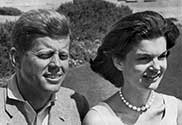




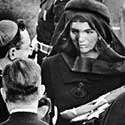

James Stewart
The Wonderful Life of James Stewart
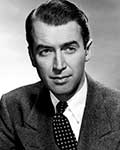
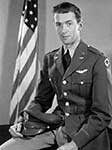
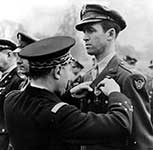
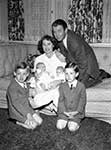
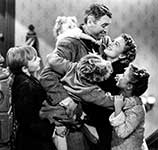


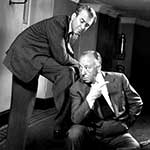

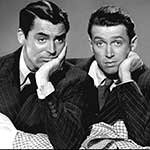
During the Holiday season, many American families enjoy traditions of twinkling holiday lights, hot cocoa by the fireplace, and watching the classic, “It’s a Wonderful Life,” featuring actor James Stewart. In the movie, Stewart’s character, George Bailey learns through miracles just how many lives he has impacted and changed for the better. Like Bailey, many can say the same about Stewart. Through his strong acting skills, heartfelt performances, dedicated service to our country and strong family values, Stewart was seen as a role model, idolized by many other actresses and actors, especially Carol Burnett.
Historian Jim Gibbons will discuss the life and career of Stewart. Gibbons will explain the movies Stewart stared in, including Harvey, Rear Window, Vertigo, and over 80 more. He will discuss Stewart’s time spent working with actors and actresses Clark Gable, John Wayne, Spencer Tracey, Donna Reed, Ginger Rogers, Katharine Hepburn, Kim Novak and many others. Gibbons will explain how Stewart received many awards throughout his lifetime and was named the third-greatest male screen legend behind Humphrey Bogart and Cary Grant by the American Film Institute. He will discuss how Stewart was honored by President Ronald Reagan and the United States Air Force for his service to our country. Not only was Stewart a World War II veteran, but he also temporary left his booming acting career to serve our country. Stewart later flew as a non-duty observer in a bombing mission in the Vietnam War. He later became the highest ranking actor in military history, advancing to the rank of Brigadier General in the United States Air Force Reserve.
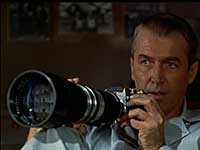

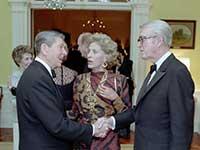
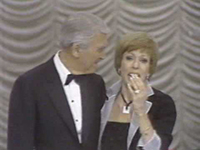
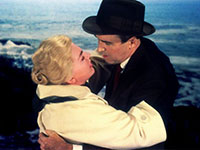
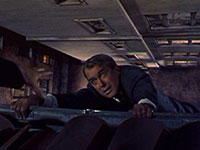
Jane Byrne
The Life and Legacy of Chicago’s Jane Byrne

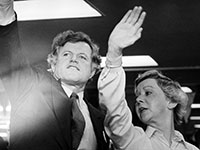
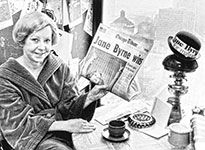
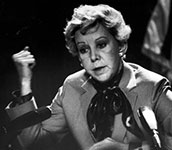


Jane Byrne impacted the city of Chicago in more ways than one. Serving as the 40th Mayor of Chicago from April 1979 to April 1983, Byrne made history as the first female ever to be the Mayor of Chicago and the first female to hold the position of Mayor in the second largest city in the United States. Before becoming Mayor, she was also the first woman to be part of former Chicago Mayor, Richard J. Daley’s, cabinet as the Commissioner of Sales, Weights, and Measures from 1968 to 1977.
Historian Jim Gibbons will discuss the life of Jane Byrne, the impact she had on the City of Chicago and Navy Pier then and how it affects us today. Gibbons will explain how Byrne with her spunky, educated, and often bold personality, did not just act as Mayor, but was greatly involved with the city’s citizens and much needed causes. Under Byrne’s guidance, the Taste of Chicago began in the summer of 1980. She also met with actor John Belushi to discuss the filming of “The Blues Brothers” in Chicago. Also, to bring attention to the issues affecting the area of Cabrini-Green, Byrne and her husband moved into apartments in Cabrini-Green for 25 days. Byrne not only left a legacy for the city, she was an inspiration to many for years to come. In her honor, Chicago named one of its interchanges, the Jane Byrne Interchange.
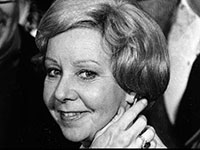


John F. Kennedy Jr.
Fame and Turbulence: The Life of John F. Kennedy Jr.
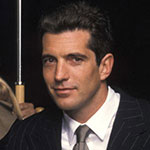
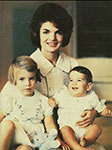
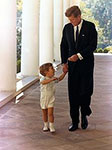
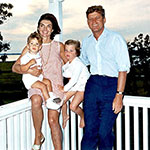
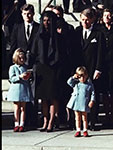

While John F. Kennedy Jr. appeared to have everything an American could dream of-- fame, charm, the famous Kennedy name, a strong career, good looks, and a beautiful wife, his Camelot life began in tragedy and devastatingly ended in tragedy.
Born in November 1960 to parents President John F. Kennedy and First Lady, Jacqueline Kennedy, he was also the brother of Caroline Kennedy. He received the nickname by the public “John-John” after a reporter’s misprinted error. He lived in the White House with his family until age three, when tragically his father was assassinated. John Jr. went on to become a journalist, lawyer and a magazine publisher. In 1995 he co-founded George, a magazine he was very dedicated to, using his journalism background and political status. In 1996, he married Carolyn Bessette, who worked in the fashion industry, in a private ceremony.
Historian Jim Gibbons will discuss the life of John F. Kennedy Jr., his relationship with his parents and his wife, his business endeavors and celebrity status, and the tragic plane crash in 1999 that resulted in his death as well as the deaths of his wife and sister-in-law.
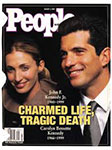
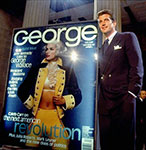
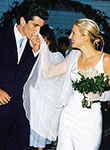
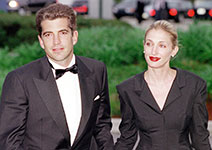
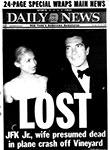
John Wayne
Cowboy and Hero: The Life of John Wayne
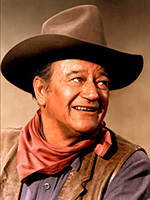
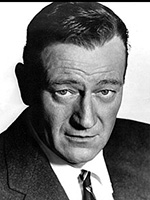
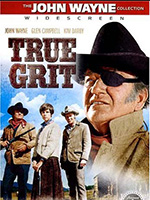
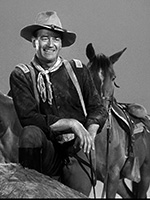
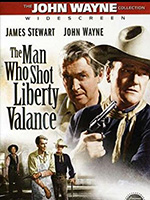

From Stagecoach to The Shootist, John Wayne was America’s favorite cowboy and hero for three decades.
Born as Marion Mitchell Morrison in May 1907, he became an actor and filmmaker, under the stage name, John Wayne and nicknamed Duke. After losing his football scholarship to the University of Southern California in a bodysurfing accident, Wayne appeared in small acting gigs and several B rate movies that were mostly Westerns. When Wayne appeared in the movie Stagecoach in 1939, his fame skyrocketed into stardom. From there, Wayne went on to star in over 140 movies and took on a powerful screen presence.
Historian Jim Gibbons will discuss Wayne’s life, rise to fame, Western roles and devastating death. Gibbons will discuss how The Man Who Shot Liberty Valence and fought for a woman’s hand in marriage also became a one-eyed marshal in True Grit. He will discuss how Wayne acted alongside many other famous stars of the era, such as James Stewart, Dean Martin, Kirk Douglas, Lee Marvin, and many more.


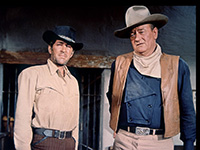


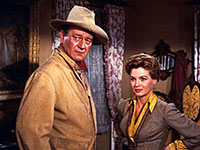
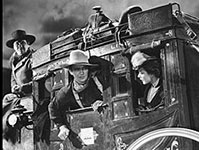
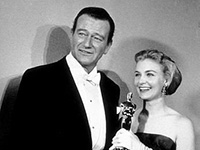

Johnny Cash
The Life of Johnny Cash: “The Man in Black”

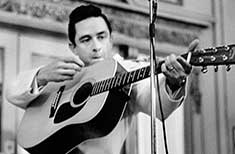
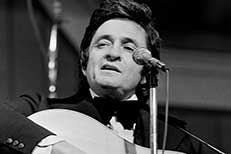


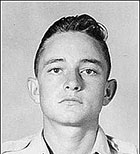 Johnny Cash received worldwide fame for being America’s beloved musician and outlaw. With his deep, baritone voice and songs of genuine folkloric poetry, he inspired a new style of music. Cash’s music intertwined country, rock and roll, rockabilly, blues, gospel, and folk music, inspiring future musicians for years to come. Born as John (J.R.) Cash to a poor cotton-farming family in Arkansas, he would strive for a deeper meaning in his music throughout his life—bringing to light the injustices, pain, and strife in the world. He received his trademarked nickname, “The Man in Black,” due to his somber attire of all black during his concerts.
Johnny Cash received worldwide fame for being America’s beloved musician and outlaw. With his deep, baritone voice and songs of genuine folkloric poetry, he inspired a new style of music. Cash’s music intertwined country, rock and roll, rockabilly, blues, gospel, and folk music, inspiring future musicians for years to come. Born as John (J.R.) Cash to a poor cotton-farming family in Arkansas, he would strive for a deeper meaning in his music throughout his life—bringing to light the injustices, pain, and strife in the world. He received his trademarked nickname, “The Man in Black,” due to his somber attire of all black during his concerts.
Historical Presenter, Michelle Gibbons, will take you into the life, love, struggles and stardom of Johnny Cash. Gibbons will discuss Cash’s famous albums and songs, including: “Folsom Prison Blues;” “I Walk the Line;” “Ring of Fire;” “Get Rhythm;” “Man in Black;” and more. She will also discuss Cash’s unconditional love for his wife, June Carter, and how their romantic undying love for each other and inspired the 2005 movie, Walk the Line.
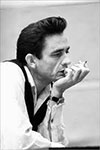
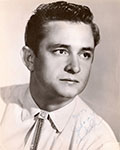
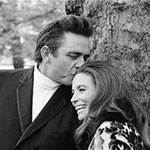

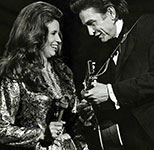



The Johnstown Flood
Spring is here! It has been raining quite heavy. As usual, your yard is flooding and you know that sooner or later you are going to have to move your belongings to the second story of your home. This has become the yearly custom for both you and your neighbors. Your town has two rivers and either one or both river banks overflow yearly. With that, residents must once again move quickly to save their properties.
Today however is different. It is late afternoon on May 31, 1889 in your valley town of Johnstown, Pennsylvania. Worried already about having to retrieve your goods from the flood waters, you take little notice of a much larger fate. It is a sound--a faint sound at first, then a roaring sound, becoming earsplitting within seconds! Unbeknownst to you, in the hills above just 14 miles away, the great dam has suddenly given way sending waters as if coming from Niagara Falls heading in your direction! The waters show no mercy grabbing automobiles, railroad trains, buildings, homes, as well as human beings, all roaring down on you from every direction, giving you no physical means of escape!
Historian, Jim Gibbons, will present The Johnstown Flood which was rated as one of the top ten historic floods of all time in the United States. You will hear how in less than one hour after the dam gave way, the town of Johnstown, Pennsylvania’s nightmare began. Spilling over 20 million tons of water at speeds clocked between 20 and 40 miles per hour, it took the lives of 2,209 unsuspecting people and washed away hundreds more, never to be found!
Judy Garland
Following the Yellow Brick Road: The Life of Judy Garland


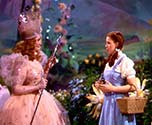
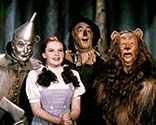
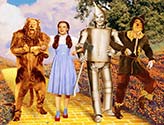



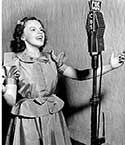
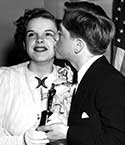

For Judy Garland, her life consisted of many steps. Just as her character Dorothy did, in real life Garland followed the ups and downs of the yellow brick road in her rise to fame. While Dorothy battled monkeys and a wicked witch to finally reach her heart’s desire of returning home, Garland would battle life struggles and stardom in her desire to balance the approval of Hollywood fame with her own everyday life, hopes and dreams.
Born on June 10, 1922 in Grand Rapids Minnesota, Frances Ethel Gumm (whose name was later changed to “Judy Garland”), was lovingly nicknamed “Baby” by her vaudevillian parents and siblings. She began performing at age 2 ½ singing “Jingle Bells” alongside her sisters. The three girls were known as the “Gumm Sisters” and later, the “Garland Sisters,” appearing in various movies, television and vaudeville shows. At age 13 in September 1935, Judy Garland signed with Metro-Goldwyn-Mayer (MGM) which began her rise to fame. However, it was not an easy road ahead of her as she was constantly criticized for her looks. Garland was told she needed to be more glamorous like the other famous female stars she went to school with such as Ava Gardner and Elizabeth Taylor. Even in the peak of Garland’s stardom, the pressure from others to be more and do more was intense until the day she died.
Historian Jim Gibbons will discuss the beautiful yet tragic life of Judy Garland. Gibbons will explain how Garland would receive worldwide fame for her role as Dorothy Gale in The Wizard of Oz. He will explain how she went on to star in other notable movies such as Meet Me in St. Louis; The Harvey Girls; Easter Parade; and Summer Stock. Gibbons will discuss how Garland was let go from MGM in 1950 for personal struggles, yet went on to star in the Emmy-nominated television show, The Judy Garland Show and was the first female to receive the Cecil B. DeMille Award for lifetime achievement. She was also awarded the Grammy Lifetime Achievement Award after her death, was inducted into the Grammy Hall of Fame and was placed on the Top 10 Greatest Female Stars of the American Cinemas list by the American Institute.
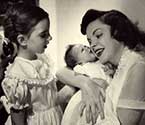
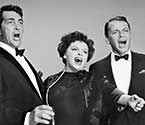
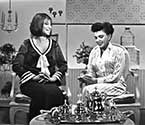
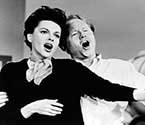


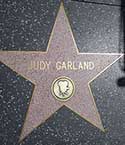
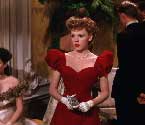
Katharine Graham
Breaking News: The Life of Katharine Graham of The Washington Post
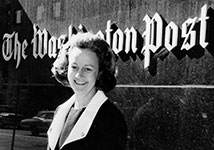
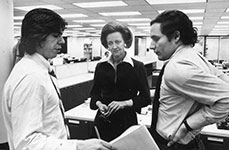

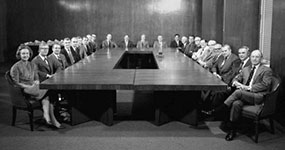
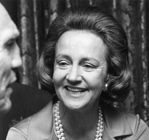 When Phil Graham, Publisher and Co-Owner of The Washington Post suddenly passed away in the 1960’s, his wife, Katharine Graham, a dedicated mother and housewife, was left with the decision of what to do with the newspaper. She decided to run it. This was one of the smartest decisions she could make. Being ahead of her time, Katharine Graham became the leader and head of the newsroom, directing her staff of predominately males. Through her determination, motivation and intelligence she transformed The Washington Post into a notable established newspaper and became one of the top journalists of all time.
When Phil Graham, Publisher and Co-Owner of The Washington Post suddenly passed away in the 1960’s, his wife, Katharine Graham, a dedicated mother and housewife, was left with the decision of what to do with the newspaper. She decided to run it. This was one of the smartest decisions she could make. Being ahead of her time, Katharine Graham became the leader and head of the newsroom, directing her staff of predominately males. Through her determination, motivation and intelligence she transformed The Washington Post into a notable established newspaper and became one of the top journalists of all time.
Historian Jim Gibbons will discuss Katharine Graham’s leadership of the newspaper, her husband and father’s journalism backgrounds, her rise to fame in the breaking news stories of the Watergate Scandal, and her decision to release the Pentagon Papers in 1971. Gibbons will discuss how The Washington Post grew into an accomplished news source during her three decades of leadership, how she became the first woman to head a Fortune 500 Company, and how she became the first woman to serve as a director for the Associated Press.
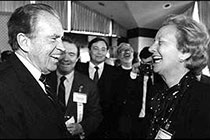

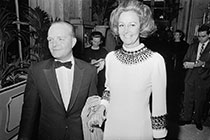

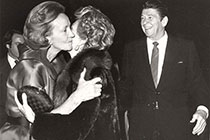
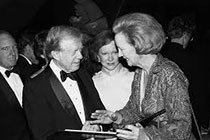
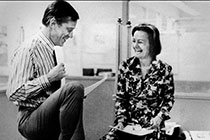

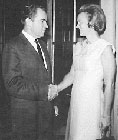
Kennedy and Lincoln Similarities
The Eerie Similarities between John F. Kennedy and Abraham Lincoln
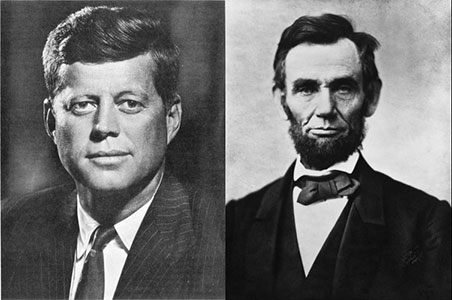 John F. Kennedy and Abraham Lincoln held two presidencies, both one hundred years apart. Though different moments in time, both men’s lives which included their wives, their children, and the times they lived in, ran directly parallel in time to each other.
John F. Kennedy and Abraham Lincoln held two presidencies, both one hundred years apart. Though different moments in time, both men’s lives which included their wives, their children, and the times they lived in, ran directly parallel in time to each other.
Historian, Jim Gibbons, will present the similarities between our 35th and 16th Presidents of the United States from the number of children each had, to the letters in their last names, and to the places where they were to die. Gibbons will present to you many of the similarities that repeatedly and eerily mapped these presidents’ paths which headed both men straight towards their tragic rendezvous with destiny!
Korean War
The Korean War
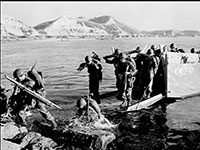
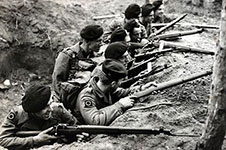
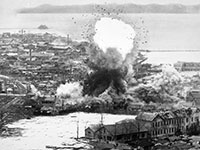
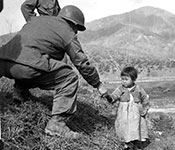
When North Korea invaded South Korea in 1950, the United States and the United Nations backed South Korea. North Korea had the support of the Soviet Union and China. The Korean War began.
Korea had been ruled by Japan until the end of World War II. However in 1948, due to the Cold War, Korea was split into North Korea and South Korea with neither government of either side wanting to work together. In 1950, North Korea had tried moving into the South to bring both sides together. The United Nations saw this attempt as an invasion and 21 countries were on the defense of South Korea.
Historian Jim Gibbons will discuss the events that took place before, during and after the Korean War and the many airplane bombings and combat that occurred. Gibbons will explain how although an armistice to end the war was signed in 1953, no peace treaty was signed, causing both sides to technically still be at war today.
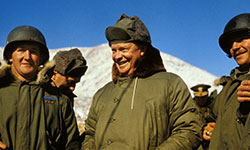


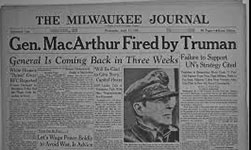
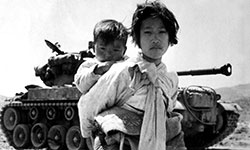
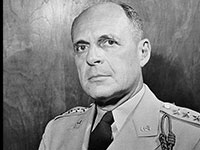
Larry King
On the Record: The Life of Larry King
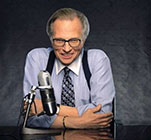
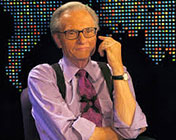
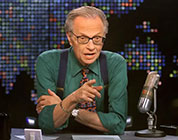
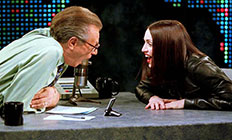
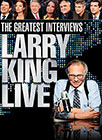
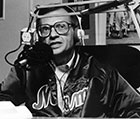
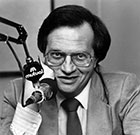
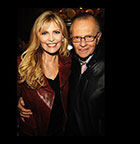
With his signature suspenders and horn-rimmed glasses, Larry King became an icon and legend. Interviewing over 50,000 celebrities and notables, King became known for his hard-hitting interviewing skills and factual, likeable personality. Tilting his glasses as he interviewed guests around a table, he made a name for himself in television and radio, later receiving two Peabodys, an Emmy Award and 10 Cable Ace Awards. King began his career in the 1950’s and 1960’s as a host for WMBM Radio. Later, he would become well-known for hosting The Larry King Show. From 1985 to 2010, he also hosted Larry King Live on CNN. King also hosted Larry King Live and Politicking with Larry King until 2020 and also appeared in several movies and television shows as himself.
Historian Jim Gibbons will discuss the amazing and influential life of the famous Larry King. Gibbons will explain King’s life before and during fame, his interviews, and his impact on television and journalism. He will discuss some of King’s most famous interviews, including: Frank Sinatra, Elizabeth Taylor, Marlon Brando, Jerry Seinfeld, Paris Hilton, and consistent coverage of the OJ Simpson chase, and more. Gibbons will explain how although King passed away at age 87 on January 23, 2021, his successful and impactful interviews live on.
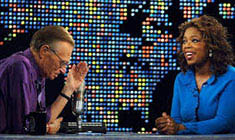

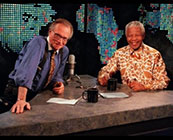

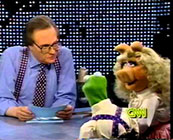
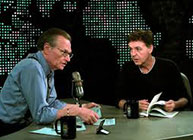
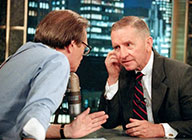
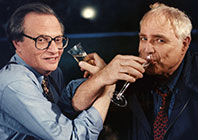
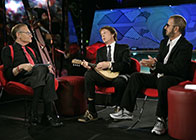

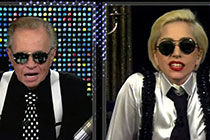
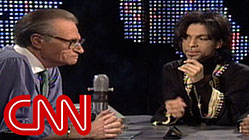
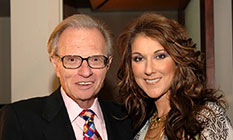
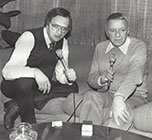
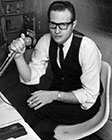
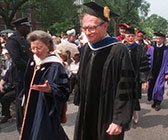

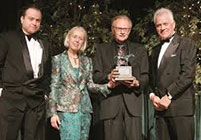
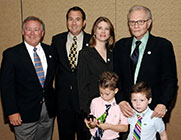
Life of Abraham Lincoln
The Life of Abraham Lincoln
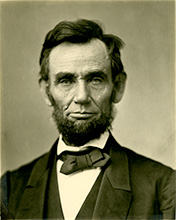

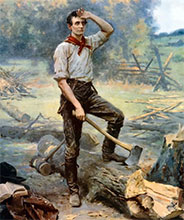
Abraham Lincoln is often referred to as a national folk hero, known as “Honest Abe,” and is thought to be one of our most beloved and revered Presidents of the United States. Though during his time, Lincoln was often despised for his extreme radical viewpoints. But by the stroke of his pen, he executed his viewpoints, forever changing the lives of millions of people from that day forward.
Born in 1809, Lincoln lived in a one-room log cabin on a farm in Kentucky with his parents and sibling. Having less than a year of formal education, Lincoln moved his life forward by continuously reading and eventually became a lawyer and political legend in Illinois. Through learning, he developed a political skill so powerful that he successfully moved Illinois’ capital to Springfield where it resides today. He married Mary Todd in 1842 and the couple had four children. Tragically, sadness and great despair would forever haunt his family. Of his four children, three would pass away at early ages with only one surviving into adulthood.
Historian Jim Gibbons will discuss Lincoln’s personal life as a father, husband, and son, his life as a politician in Illinois, as well as his controversial presidency and untimely assassination in 1865. Gibbons will explain how as the 16th President of the United States, Lincoln led the nation through one of the bloodiest wars in United States’ history, The Civil War. He abolished slavery, and held the union together. He did what his conscience told him was right. Though due to these strong convictions, he lost his life to establish the freedoms of life, liberty, and the pursuit of happiness for all Americans.

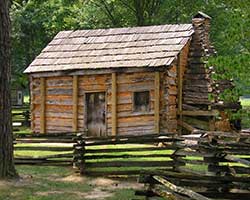

Life of John F. Kennedy
The Life of President John F. Kennedy

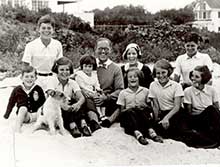
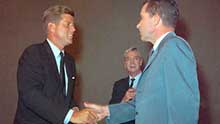
Born in Brookline, Massachusetts, John Fitzgerald Kennedy was born a child of extreme wealth and privilege. Though he could have led a life of great ease, he felt that it was his duty to make the most of his life.
Kennedy was the second son of his father, Joseph P. Kennedy who was a former United States Ambassador to Great Britain. John Kennedy was taught that he needed to achieve great things in life. He graduated from Harvard University, and then enlisted in the Navy to eventually become Lieutenant (Junior Grade) to command patrol torpedo boat, PT- 109. The boat was rammed and then sank on August 2, 1943 in the South Pacific. He heroically tried to save his crew members and earned a Purple Heart.
Kennedy next entered politics in 1946 by winning the Democratic Primary for Massachusetts’ Eleventh Congressional District. He became both a member of the House and Senate. Then finally at the age of 42, he became our youngest elected President of the United States. He had a turbulent presidency, including the Bay of Pigs Invasion, the Cuban Missile Crisis, Civil Rights, and the loss of his newborn son in August of 1963. After losing his son, only a few months later on November 22, 1963, John Kennedy was assassinated in Dallas, Texas at the age of 46.
Historian, Jim Gibbons, will present the life of our 35th President of the United States, John Fitzgerald Kennedy. He gave us hopes, dreams, and challenges. John Kennedy stated, “the torch has been passed to a new generation” and that we must seize the movement by asking not what our country could do for us, but what we could do for our country! His was the age of youth, vigor and vitality--we were a country on the move. We could do anything and conquer all odds with visions of glory. For one brief shining moment in history we were Camelot!
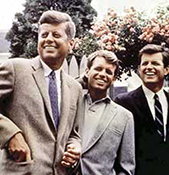

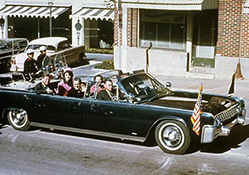
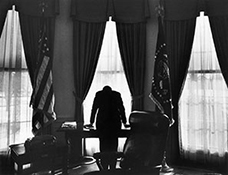
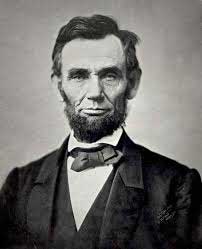
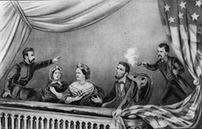
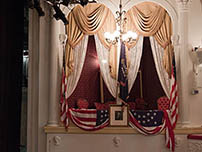
The Assassination of President Abraham Lincoln
On March 4, 1865, President Abraham Lincoln was inaugurated for a second term in office. On April 9, 1865, the Civil War ended. The bloodiest war in our nation’s history, brother against brother, a war that tore the country in two was finally over. A devastated nation moved forward to heal.
On Friday evening April 14, 1865, President Abraham Lincoln and his wife, Mary Todd, decided to attend a play “Our American Cousin” at Washington D.C’s Fords Theatre. They are joined by Major Henry Rathbone and his fiancée Clara Harris. They arrive late for the performance.
As they arrive, the performance is already underway. The president and his wife are greeted to polite ovations. The presidential party take their seats in a balcony to the right of the stage. The president is seated in a rocking chair. After acknowledging the crowds ovations, all quiets back down and the play continues.
Time passes; it is now the third act. The president’s security guard, Officer John Parker, goes to a nearby tavern for a drink. Unbeknown to the presidential party a man had just quietly entered the back of the presidential box and is creeping up to the back of the president. His name is JOHN WILKES BOOTH!
Historian Jim Gibbons will engage you back to this most tragic moment in our nation’s history, presenting “The Lincoln Assassination.” Gibbons will show the events leading before, during, and after this gripping episode in our nation’s history. After seeing Gibbons presentation, you will see why the Secretary of War, Edwin M. Stanton, summed up Lincoln’s passing by stating, “Now he belongs to the ages!”
Kennedy Assassination
The Assassination of President John F. Kennedy
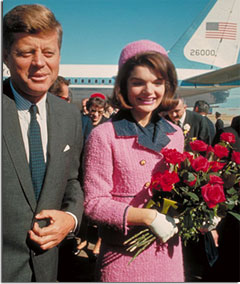 It’s November 22, 1963 and you have just arrived home for lunch and decide to watch your favorite television program. You notice that your show is not on. Instead, a news bulletin from CBS News has just flashed up on your screen. Reporter Walter Cronkite is reading information to his audience when he suddenly gets a news flash. He states:
It’s November 22, 1963 and you have just arrived home for lunch and decide to watch your favorite television program. You notice that your show is not on. Instead, a news bulletin from CBS News has just flashed up on your screen. Reporter Walter Cronkite is reading information to his audience when he suddenly gets a news flash. He states:
“From Dallas, Texas, the flash apparently official, President Kennedy died at 1p.m. Central Standard Time, 2:00 Eastern Standard Time, some thirty-eight minutes ago.”
“Vice President Lyndon Johnson has left the hospital in Dallas but we do not know to where he has proceeded; presumably he will take the oath of office shortly and become the 36th President of the United States.”
These were the words that riveted America. As soon as they were announced everything stopped. For the next four days the country was plunged into total mourning.
Historian Jim Gibbons will relook at this most tragic time in our nation’s history, presenting, “The Assassination of President John F. Kennedy.” If you were alive at that time, you may remember where you were and what you were doing that fateful day. If not, you will learn how everything came to a complete halt with just four words, “The President is dead!”
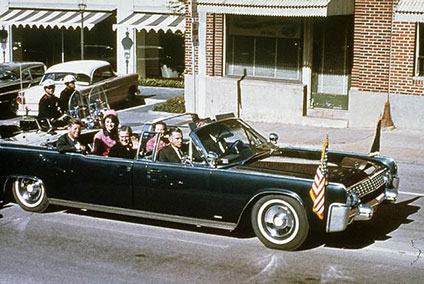
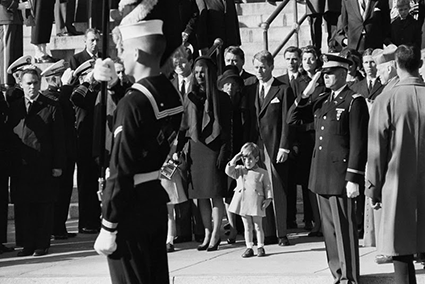
Lyndon B. Johnson
Landslide Lyndon: The Life of Lyndon B. Johnson

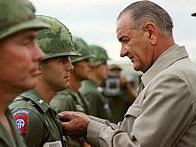
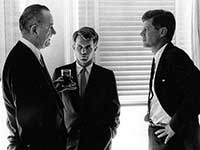
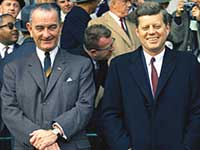
Although President Lyndon B. Johnson was often criticized for his stance on American involvement in Vietnam, he is also rated highly by many for his domestic policies and laws instituted during his presidency.
Johnson, nicknamed “LBJ” and “Landslide Lyndon,” was suddenly thrust into office in 1963 as the 36th President of the United States, with a goal to bind the nation together, after the assassination of President John F. Kennedy. During his time as president from 1963 to 1969, Johnson initiated the “Great Society,” expanding public services and civil rights, enacting the Civil Rights Bill and cracking down on poverty struggles. He helped many Americans rise above poverty and expanded Medicare, Medicaid and Social Security. However, in 1964, after the Gulf of Tonkin Resolution was passed by Congress, the number of American’s in combat roles in Southeast Asia increased greatly and American casualty numbers skyrocketed. This led to a strong anti-war movement at home with many American’s angry at LBJ for his handling of the war.
Historian Jim Gibbons will discuss the life of Johnson, his roles as president and vice president, his handling of foreign and domestic policies and his role in politics before his vice presidency. Gibbons will explain how Johnson, who won by a landslide in his reelection against Senator Barry Goldwater, was then criticized by many of his former supporters at the end of his term for his handling of the Vietnam War.
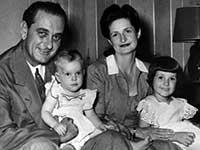
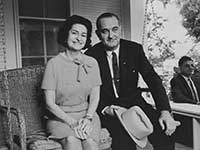
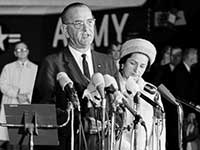
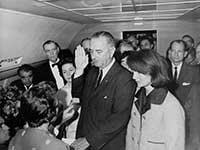
Margaret Thatcher
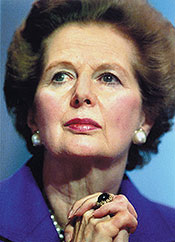
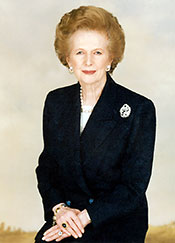
The Life of Margaret Thatcher
As the first woman to hold the office of Prime Minister, Margaret Thatcher received the nickname of “The Iron Lady,” due to her strong leadership and rigidness in politics.
Thatcher was the Prime Minister of the United Kingdom from 1979 to 1990 and was the longest to serve in the position of the 20th Century. She also served as the leader of the Conservative Party from 1975 to 1990. She became the Prime Minister after winning the general election in 1979. Prior to becoming Prime Minister, she was a research chemist and barrister.
Historian Jim Gibbons will discuss how the Iron Lady’s policies became termed “Thatcherism” and how she grew in popularity to eventually be elected for three terms. Gibbons will explain Thatcher’s struggle to prevail in a time of recession and high unemployment and how her policies and leadership still have a strong impact on today’s politics.
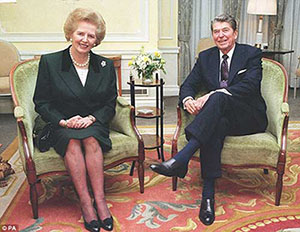
Marilyn Monroe
America’s Blonde Bombshell: The Life of Marilyn Monroe

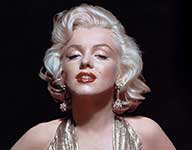
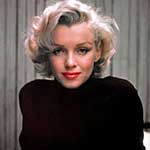
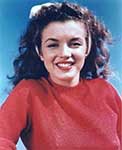
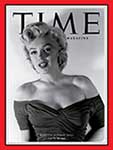

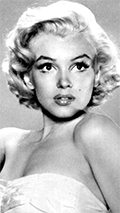
When you think of words to describe the iconic, gorgeous and famous Marilyn Monroe, what do you think of? You may think of words such as: sex symbol, blonde bombshell, young, vibrant, fun, popular or iconic. There are so many words to describe the very famous Monroe and her striking appearance. Her popularity as an actress sored in the 1950’s and 1960’s until her sudden death; but today, her fame, popularity, and beauty still live on. She is someone who both men and women still put on a pedestal for having the perfect look. But who exactly was Marilyn Monroe? Yes, she was known for her beauty, but what about the person she was on the inside?
Historical Presenter, Jim Gibbons, will take you inside the life of the iconic Marilyn Monroe. Gibbons will explain her life before, during and after fame. He will discuss her movies, the look that made her famous, her alleged relationship with President Kennedy, and her untimely death. Gibbons will describe who this lovely lady was and why she is still iconic today. He will explain why she was more than just beauty.

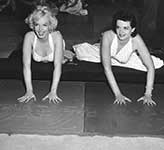

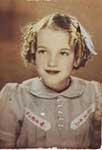

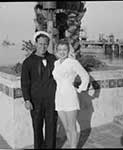
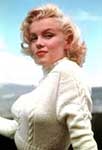
Martin Luther King Jr.
A Struggle for a Dream: The Life of Dr. Martin Luther King Jr.
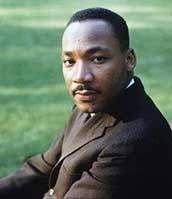

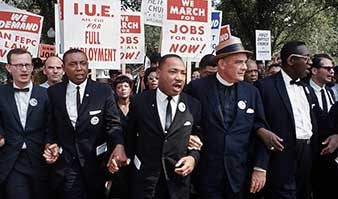
Dr. Martin Luther King Jr. famously stated in his speech, “I have a dream that my four little children will one day live in a nation where they will not be judged by the color of their skin but by the content of their character.” Today, Dr. King is not only known for his leadership in the advancement of the Civil Rights Movement but also for the vast social changes in our nation as well. A Baptist minister, inspired by the teachings of Mahatma Gandhi and tied together with his Christian faith, King stressed the use of nonviolence and civil disobedience to achieve his goals. President and founder of the Southern Christian Leadership Conference, King organized a March in Washington D.C. achieving 250,000 people in attendance. In 1964, he received the Nobel Peace Prize for combating racial inequality through nonviolent resistance. Ironically, King will fall to the same fate as his mentor Gandhi. Both men evoking change through nonviolent protest will die due to an assassin.
Historian Jim Gibbons will discuss the life of Dr. Martin Luther King Jr., his strong nonviolent beliefs, his turbulent life, tragic death and why we commemorate January 15th every year in his honor. Gibbons will show that with just four words, “I have a dream” change for a better world is entirely possible!
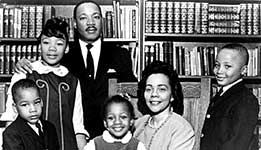
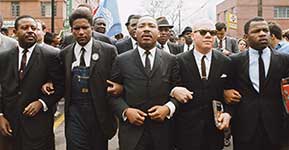
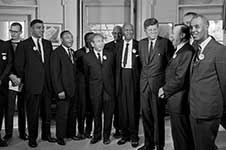
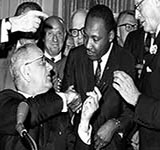
Mayor Richard J. Daley
Chicago's Mayor Richard J. Daley: The Man, His Times, and the City He Loved
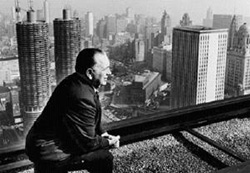

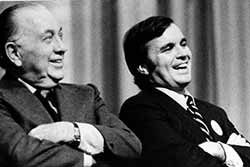
Richard J. Daley was born in Bridgeport on Chicago’s South Side in a working-class Irish neighborhood where he lived his entire life. Later, he moved into politics eventually becoming the legendary Mayor of Chicago for 21 years and the Cook County Democratic Central Committee Chairman for 23 years. He held both positions until his death on December 20, 1976. Daley played a major role in Democratic politics supporting both John F. Kennedy in the 1960 Presidential Election and Hubert Humphrey in 1968. He faced major challenges--the decline of the major cities; the 1960’s Civil Rights Movement; the 1968 rioting in the aftermath of the assassination of Dr. Martin Luther King Jr.; the 1968 Democratic National Convention; and the Vietnam War protesters.
Historian, Jim Gibbons, will present the life of the man referred to as “Hizzoner,” Mayor Richard J. Daley--a man of vision, courage, and dreams for a great city. Through his legacy today, Chicago has an extensive expressway system; one of the world’s busiest airports, O’Hare International Airport; a major convention center, McCormick Place; and legendary buildings such as the Hancock Center, Willis Tower (formerly The Sears Tower), and Marina City. Chicago, under his administration, was called “The City that Works!” For better or for worse, Mayor Richard J. Daley set the measuring stick. To this day, people are still remarking, “You know this never would have happened when Richard J. Daley was alive!”
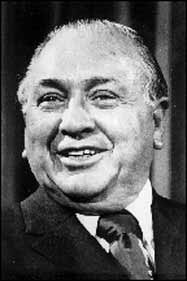
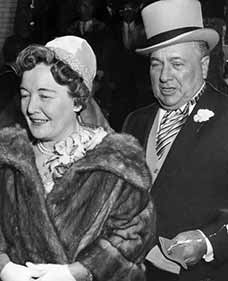
Mississippi River
Ally and Enemy: The Mighty Mississippi River
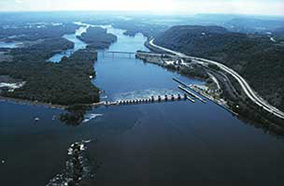

The largest river in the United States, approximately 2,350 miles in length from Louisiana in the south to Minnesota in the north, the mighty Mississippi River travels through or along ten states in all. It also forms the backbone for shipping and commerce for the United States and world trade. Compared with the Nile, Amazon, and Yangtze, the Mississippi is ranked number four amongst the greatest rivers in the world. Millions of people depend on this mighty river for their daily existence to survive, not only during times of peace but in times of war as well. Yet within a matter of moments, this great friend and ally can turn from a great tower of strength and stability to a raging monster, whipping out the very life’s blood of thousands of people and communities within its path!
Historian, Jim Gibbons, will present historical facts about the mighty Mississippi River and its mighty influence on our everyday lives. From times of economic prosperity, to war, to economic disaster due to weather and extreme flooding, the people of the United States are allied with this extremely fickle partner for survival. Be it ally one day or enemy the next, the mighty Mississippi River affects and changes what we do daily on a moment’s notice!
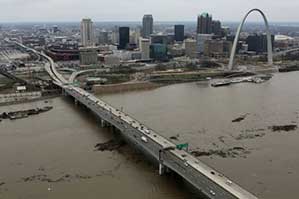
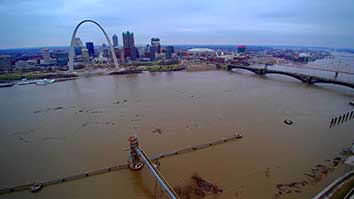
Mother Teresa
Bringing Light to the World: The Life of Mother Teresa


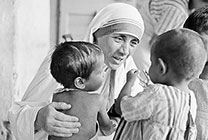
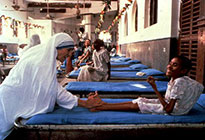
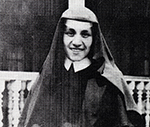
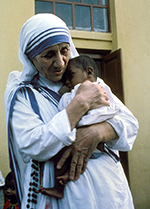

Mother Teresa lived her life helping others.
At age 18, Teresa Bojaxhiu, later to be called Mother Teresa, left home to become a Roman Catholic nun and join the Sisters of Loreto in Ireland to learn English and become a missionary. Later, she moved to India where she lived most of her life. Mother Teresa was active in over 133 countries, founding the Missionaries of Charity, a Roman Catholic Congregation with over 4,500 sisters. Through Mother Teresa’s influence, the congregation aided and provided homes for those dying of HIV and AIDS, Leprosy and Tuberculosis; opened soup kitchens; initiated children’s programs, orphanages, schools and much more.
Historian Jim Gibbons will discuss how Mother Teresa, a woman who lived her life helping the poorest of the poor, became a Saint in the Catholic Church, later to be called Saint Teresa of Calcutta. Gibbons will discuss how Mother Teresa’s viewpoints and aid were sometimes seen as controversial but how through her charitable actions and giving, she received several awards and peace prizes, including the Nobel Peace Prize in 1979.


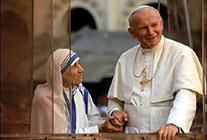
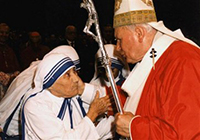
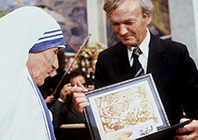
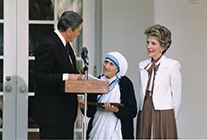
America's Neighborly Role Model of Kindness and Caring: The Life of Mister Fred Rogers
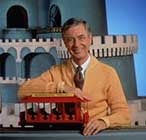
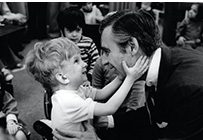

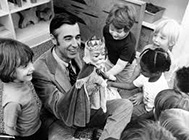
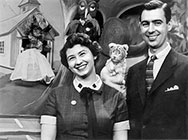
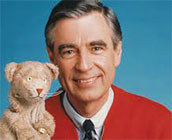
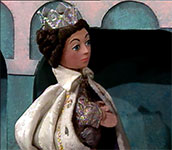
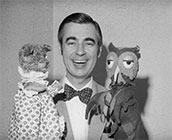
Close your eyes for a minute. Think of a time as a child when you felt alone, unloved, embarrassed, bullied or scared. Now picture a kind, heartwarming voice talking directly to you saying that it will be ok; you are special, “There is no one like you in the whole world. I like you just the way you are.” Now open your eyes. Smile, and know you are loved. For many children, this is exactly the comfort they felt when watching Fred Rogers television program, Mister Rogers Neighborhood. For many adults, the heartfelt lessons and kindness Mister Rogers showed us as children are something we strive to live by today.
Historian Jim Gibbons will discuss the life of Fred McFeely Rogers, an American icon of neighborly kindness with a heartwarming smile. Mister Rogers, a Presbyterian Minister, American television host and producer, made Mister Rogers Neighborhood a popular show for young children from 1968 to 2001. With puppets King Friday XIII, Queen Sarah, Daniel Tiger and more, Mister Rogers would take you to the Land of Make Believe or to a factory to learn how things are made. Mister Rogers was also known for The Children’s Corner in the 1950’s. Mister Rogers Neighborhood was popularly aired on The Children’s Programming Network and the Public Broadcasting Service (PBS). Over his lifetime, Mister Rogers received many awards, including the Lifetime Achievement Emmy in 1997 and the Presidential Medal of Freedom in 2002. In 1999, he was also inducted into the Television Hall of Fame. In November 2019, a movie starring Tom Hanks portrayal of Mister Rogers was also made in his honor.

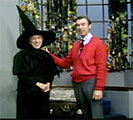

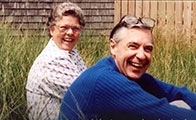
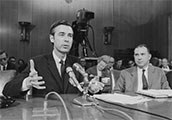
Nelson Mandela
The Life of Nelson Mandela
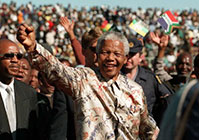
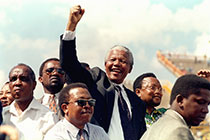


From prisoner to president, South African leader Nelson Mandela still holds the loving title of “Tata” (father) by many supporters in South Africa who honor him as “The Father of the Nation.”
Mandela, who was born in Mvezo in South Africa in 1918, was born into the Thembu royal family. Mandela studied law in college and became a lawyer in Johannesburg. He became a social activist against racism in South Africa and apartheid. Though most of his protests were considered peaceful, in 1961 and 1962 he ran a campaign against the government and was sentenced to 27 years in prison.
Historian Jim Gibbons will discuss how after prison, Mandela became President of the African National Congress party from 1991 to 1997, leading it to triumph. Gibbons will explain how Mandela, who was considered a controversial figure, received over 250 awards and honors including the Nobel Peace Prize.

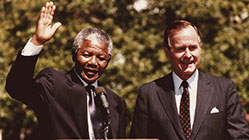
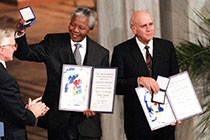
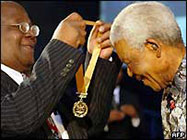
9/11 Attacks
A Date We Will Always Remember: September 11, 2001

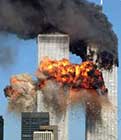

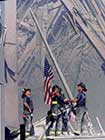
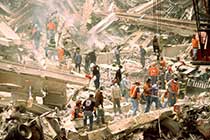
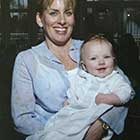
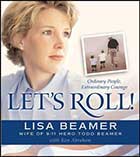
A Date We Will Always Remember: September 11, 2001 On September 11, 2001, the world seemed to stop. To this day, it is a powerful tragedy that Americans who were alive during that time remember vividly. A day where the terrorist group Al-Qaeda attacked the United States. It is a day where through the tragic loss of innocent lives, heroes were made. Americans on Flight 93 became unexpected heroes by sacrificing their own lives to save the Pentagon and American democracy. Heroes were made through the firefighters, police force and first responders who sacrificed and risked their lives to help and save others during and after the attacks. And the thousands of unsuspecting Americans trapped inside the burning buildings of the Twin Towers who perished that day, many without being able to say goodbye to their families or friends. And thousands more needlessly injured. It is a day that cannot and will not ever be forgotten.
Historian Jim Gibbons will discuss the devastating September 11th terrorist attacks of the Twin Towers in New York. Gibbons will explain the events that took place before, during and after the attacks and how it will be timestamped forever in American history.
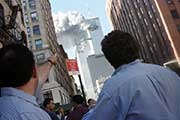
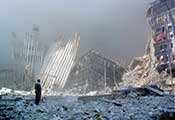
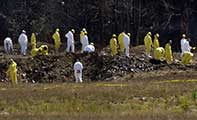

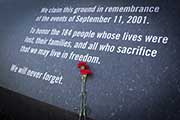
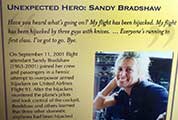


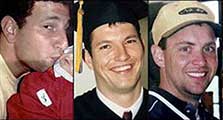
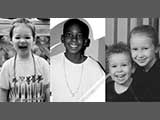
Pearl Harbor
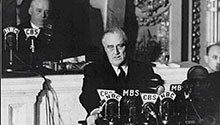
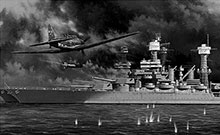
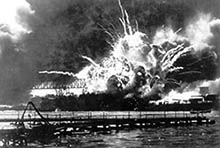

Pearl Harbor: A Day That Will Live In Infamy
It’s Sunday morning and many people are just starting to wake up. You are standing on the deck of your battleship, the West Virginia. Your ship is docked and resting quietly, along with eight others in Battleship Row, awaiting the start of a beautiful Hawaiian day. It is five minutes ‘til 8a.m. Just like every morning, you stand waiting to salute the colors of the United States flag as it is hoisted proudly for all to see. Suddenly, you hear a humming sound like hornets approaching in the distance. The sound now grows in intensity, getting louder and louder with every ticking second of the clock. Then in a flash you see it, the Rising Sun on the wings. It is the Japanese Air Force. Like locusts they swarm in from the sea. They are all perfectly timed and planned, coming from the south, the southeast, and then finally from the north with around 200 planes in all. They show no fear and no mercy whatsoever. This is a surprise attack! This is war! By 9:45 a.m. the attack is over, leaving behind 2,403 dead officers and men and 1,178 wounded.
Historian, Jim Gibbons, will present the story of Pearl Harbor. On December 7, 1941, the United States was suddenly and deliberately surprise-attacked by Japanese Naval and Air Forces and then thrust from isolationism into World War II. Gibbons will show you the beginnings of the storms of war that led to the predawn attack. He will explain how our government in Washington and the people of the United States were wooed to vulnerability and then struck hard by the Empire of Japan. Suffering a devastating naval loss in a little over one hour and fifty minutes, the United States now had the catastrophic record of more losses in less than two hours than its entire navel losses in World War I. Finally, Gibbons will show you how the people of the United States, as President Franklin Delano Roosevelt stated, “In their righteous might [did] succeed to absolute victory!”
Princess Diana
Lady Diana Spencer, Princess of Wales
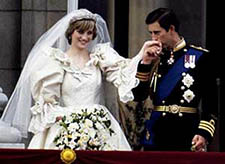
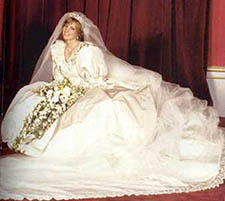

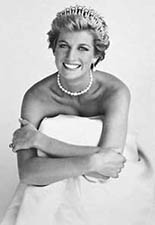

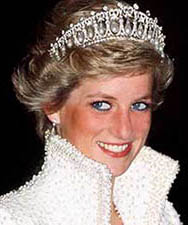
To this day, Lady Diana Spencer, Princess of Wales is one of the most beloved princesses around the world whose life and death were made public through the media. Her royal wedding to Prince Charles in 1981 received media attention worldwide, reaching a television audience of over 750 million. Though she was often scrutinized publicly for her divorce in 1996, the world mourned the tragic death of its cherished princess only a year later.
Growing up in a family closely tied to British Royalty, Diana was one of four children. At eight years-old her parents divorced, leaving Diana in the custody of her father. In school, Diana did not excel academically, but instead was recognized for her tremendous community spirit and her achievements in extracurricular activities. As eventual princess, she would shine in such achievements through her royal duties set forth by the Queen. She was later honored for her vast involvement in charity work in London and internationally.
Historian, Jim Gibbons will discuss the life of Princess Diana, her marriage, motherhood, her royal presence, and her death which still remains controversial today.
Gibbons will explain how Diana’s legend lives on as she lived her life like a “Candle in the Wind.”
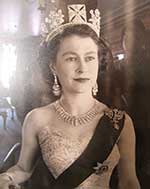
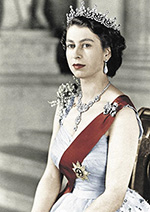
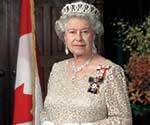
The Reign of Queen Elizabeth II
Queen Elizabeth II is the longest ruling monarch in the world. At 90 years of age, Queen Elizabeth II still reigns as the Queen of the United Kingdom, Canada, New Zealand, and Australia since 1952.
Queen Elizabeth II was born as Elizabeth Alexandra to the Duke and Duchess of York who eventually became King George VI and Queen Elizabeth. In 1947, Queen Elizabeth II married Phillip, Duke of Edinburgh and the couple had four children. Throughout her lifetime, she has reigned through many wars, conflicts, 13 United States presidencies and received both abundant praise and harsh criticism of her and the royal family by the press.
Historian, Jim Gibbons, will discuss the life of the longest-reigning and longest-living Queen. He will discuss her coronation, the impact of the constitutional changes she implemented, devolution of the United Kingdom, and the loss of her daughter-in-law, Princess Diana Spencer. Gibbons will explain how the Queen, while both conservative and elegant in dress, is a strong voice over policies in the United Kingdom and the Commonwealth.
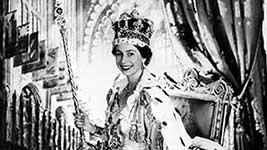
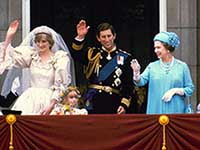

Rat Pack
Entertainers with Style: “The Rat Pack”



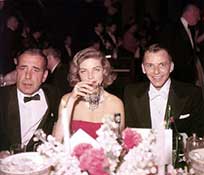

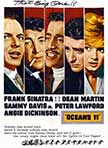
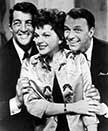
Class, style, music, fame and, of course, friendship are just some of the few words to describe the once infamous members of The Rat Pack.
Centered around the nightlife and music scene in Las Vegas, members of The Rat Pack of the 1960’s included: Frank Sinatra, Dean Martin, Sammy Davis Jr., Peter Lawford and Joey Bishop. Though there are several theories on how the group got its name, the friends would often meet at the home of fellow actor and actress, Humphrey Bogart and Lauren Bacall, where the name originated. Later, the term would be picked up by journalists to describe the friends. The group would appear together in many movies, including Oceans 11, Robin and the 7 Hoods and Sergeants 3. The leading members of the group were Martin, Sinatra and Davis Jr. When one member of the group would perform at a show, often the rest of The Rat Pack would attend as well and surprise the audience with a follow-up performance.
Historian Jim Gibbons will describe the history of The Rat Pack, how it originated and how it affected the entertainment industry of the time. Gibbons will explain each members’ fame, life, works and friendship with the other members of The Rat Pack and their ongoing legacy.
Richard Nixon
Checkers, Landslide, Watergate: The Turbulent Life of Richard Nixon
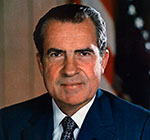
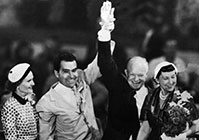
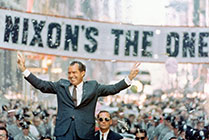
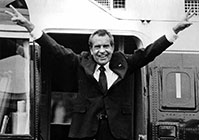
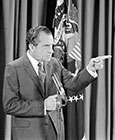

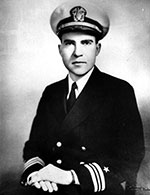
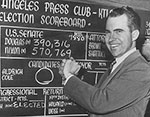
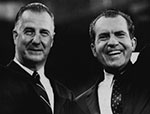
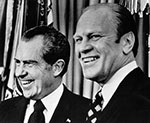
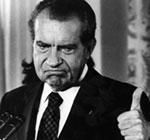
President Richard M. Nixon’s life was often considered controversial. While doing much good for the country during his years in office, he was often chastised for his political views and his methods of achieving his goals. Nixon said, “to be a great president, you need opportunities of events to be great.” For Nixon, this included the 1969 moon landing, the starting process to end the Cold War, improving relations with Russia and China, creating the Environmental Protection Agency (EPA), the Equal Rights Amendment (ERA) and many more achievements. His second term election, which was a landslide victory, was later overshadowed by the Watergate Scandal that led to his resignation. This was the first of its kind for the President of the United States.
Before serving as President from 1969 through 1974, Richard Nixon practiced law, worked for the federal government along with his wife, Pat, and served in active duty in the U.S. Navy Reserve in World War II. During President Dwight D. Eisenhower’s administration, he was the youngest person to hold the Vice President position at age 40. Though he lost the presidential election to John F. Kennedy in 1960, Nixon won in 1968, defeating Vice President Hubert Humphrey.
Historian Jim Gibbons will discuss how Nixon, the 37th President of the United States, brought American POWs home and ended American involvement in the Vietnam War in 1973. Gibbons will also discuss Nixon’s involvement in the Watergate Scandal, his nickname Tricky Dicky, defending himself to the American Public with his Checkers speech. He will also explain how Watergate, which led to Nixon’s resignation in 1974, will forever be etched in our minds when Nixon proclaimed, “I am not a crook!”
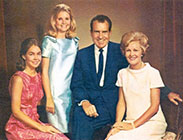
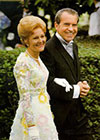
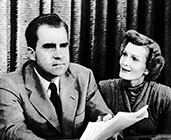
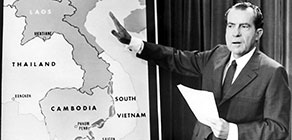
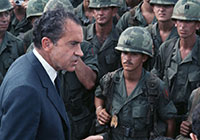

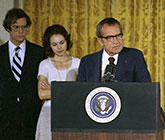
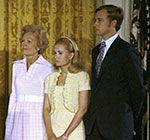
Robin Williams
The Life, Laughter, and Legacy of Robin Williams
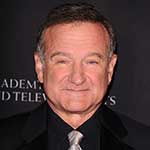
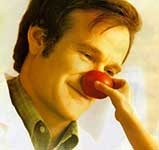


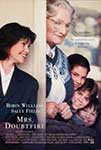
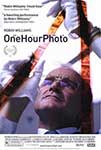

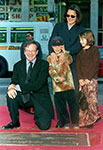
When you think of comedian and actor Robin Williams, what fond memories do you have? Are you taken back to your childhood with Peter Pan in Neverland? Are you now in the magical city of Agrabah with the Genie? Or maybe you just met your charming whimsical nanny, Mrs. Doubtfire? To many, Williams’ impactful talent was larger than life. Through his on-the-spot improvisation skills, genuine personality, and quick-witted humor, Williams captured the attention and hearts of many nationwide and globally.
Historical Presenter, Michelle Gibbons, will take you into the life and mind of the comic genius, Robin Williams. Gibbons will discuss Williams’ famous works, movies, TV shows and success; his personal struggles and achievements; as well as the impact he made on others during and after his life. Gibbons will explain how an alien from outer space named Mork became a larger-than-life legend on Earth.

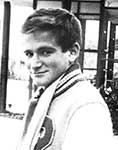
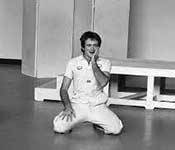
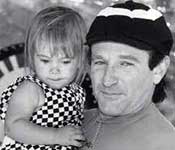


Rod Serling
Rod Serling and The Twilight Zone

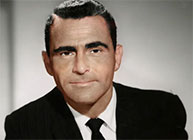

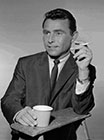
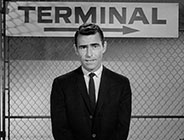
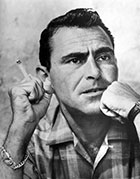
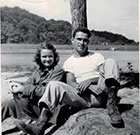
As you begin to read this, relax your mind. Open your thoughts to unlock your imagination. Beyond is a key to another dimension. A “dimension of sound, a dimension of sight, a dimension of mind. You're moving into a land of both shadow and substance, of things and ideas. You've just crossed over into… The Twilight Zone.” These were the words of the famous narrator, Rod Serling as he took viewers into the well-known, psychological thriller television series, The Twilight Zone.
Historian Jim Gibbons will discuss The Twilight Zone and the amazing works and life of genius creator, Rod Serling. Gibbons will explain the many accomplishments and awards that Serling received over his lifetime for his screenwriting, television production, and narration, including being inducted into The Television Hall of Fame in 1985. He will discuss the movies, writings, and other works of Serling; his military background; and his fight for change in issues of television censorship, politics, racism and more.
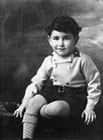
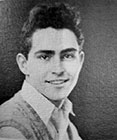


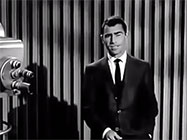

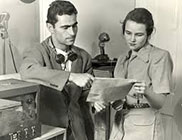
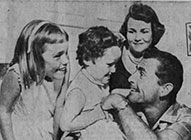
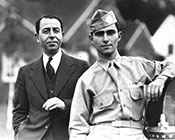
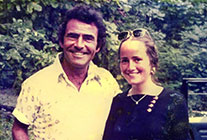
Romanov's
Remembering the Romanov’s
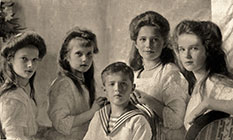

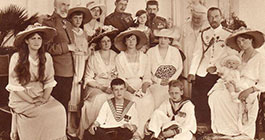

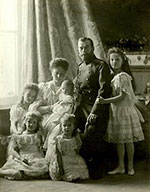
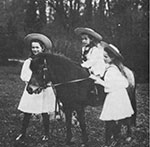
The year 2018 marks the 100th Year Anniversary of the tragic murders of the Royal Russian Imperial Romanov family. On July 17, 1918, Tsar Nicholas II, his wife Tsarina Alexandra and their five children and four of the family’s servants were told to dress quickly and go down to the cellar of their family home for a photo. They were told the photo would cease rumors that the family had escaped. Instead, tragedy occurred and the entire family and their servants were brutally murdered by Bolshevik troops under the orders of Ural Regional Soviet. All bodies were accounted for—except one. Princess Anastasia, the youngest of the Romanov daughters, was not found.
Historian Jim Gibbons will talk about the tragic deaths of the Romanov family and its critical impact on World War I. Gibbons will discuss the lives of the Romanovs and the events that took place before and after the family’s abrupt and devastating end. He will explain the life of Anastasia and the legend of her survival.
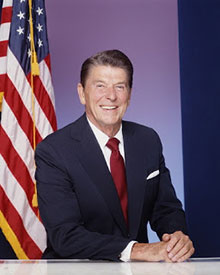
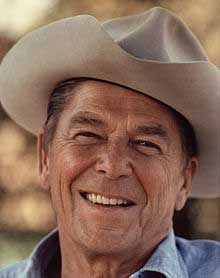
The Great Communicator: The Life of Ronald Reagan
Ronald Reagan is continually listed amongst our Top Ten U.S. Presidents. To this day, the Reagan presidency is repeatedly being used as a measuring stick for Republicans and Democrats alike. From Soviet leader Mikhail Gorbachev; British Prime Minister, Margaret Thatcher; to House Speaker, Thomas Tipp O’ Neal, Reagan’s style and whit could charm them all. Yet when the going got tough, his leadership qualities were as hard as nails!
In tough times, Reagan would often try to break the ice with humor:
“I hope you’re all Republicans,” he said speaking to the surgeons in the operating room after his attempted assassination.
Lifeguard, radio sportscaster, movie and television star, Governor of the State of California, and finally, our 40th President of the United States, Reagan was always in the limelight. People listened when Reagan spoke; and for better or worse, his speaking style earned him his title, “The Great Communicator!”
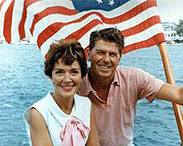
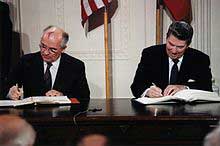
Ruth Ginsburg
Notorious: The Life of Justice Ruth Bader Ginsburg
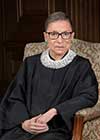
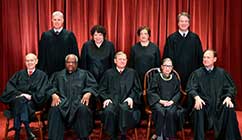
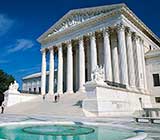
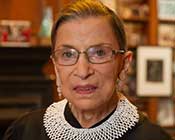
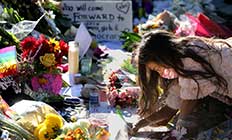 \
\
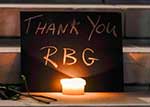
 Supreme Court Justice Ruth Bader Ginsburg was a woman who knew if you are going to make a change, you have to initiate the change yourself. An inspiration to many, her strong will, persistence, and influential role in women’s rights led her to become an icon to many Americans. As Superman would say, Ginsburg stood for, “Truth, Justice, and the American way” and was seen as a hero to many.
Supreme Court Justice Ruth Bader Ginsburg was a woman who knew if you are going to make a change, you have to initiate the change yourself. An inspiration to many, her strong will, persistence, and influential role in women’s rights led her to become an icon to many Americans. As Superman would say, Ginsburg stood for, “Truth, Justice, and the American way” and was seen as a hero to many.
By the time of her death, Ginsburg was named one of the 100 Most Powerful Women in 2009; Glamour magazine’s “Woman of the Year” in 2012; as well as Time magazine’s most 100 influential people in 2015. She was said to be as courageous outside the courtroom as she was inside the courtroom. In 1999, she will be diagnosed with Cancer, the first of five bouts. Even during her battle with Cancer, Ginsburg was determined not to miss a single day on the bench. She was a fighter and also believed in physical fitness. She was able to complete 20 push-ups while in session in the courtroom before she was 80 years-old!
Historian Jim Gibbons will discuss The Life of Ruth Bader Ginsburg, a woman who flourished in the role as Supreme Court Justice for 27 years. Gibbons will explain how Ginsburg was nominated by President Bill Clinton in 1993 until her death in September 18, 2020. He will explain how she did not take “no” for an answer. Graduating as the first woman from Harvard Law School and later, Columbia Law School, she received a recommendation from Harvard for a Supreme Court clerkship position but was rejected due to her gender. It is this reason that will be a catalyst for her fight for gender equality and women’s rights throughout her career. When asked her theory on how to make things better, Ginsburg stated, “If you’re going to change things, you have to be with the people who hold the levers.”
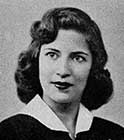
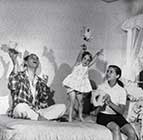
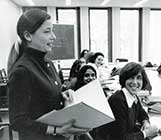
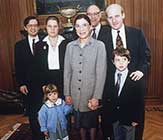
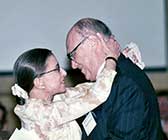
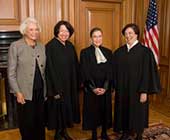
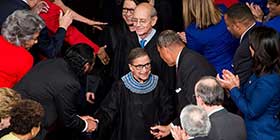
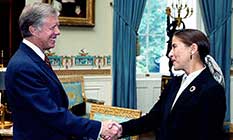
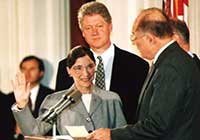
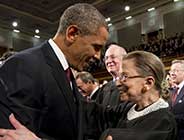
Samuel Insull
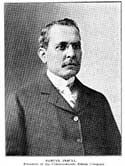
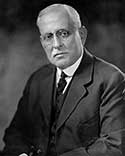
The Life of Samuel Insull
Samuel Insull was an American investor and inventor of the electrical grid system. Born in Britain, he moved to Chicago in 1892 and became the President of Chicago Edison. In 1907, he would merge his two electrical companies to create Commonwealth Edison, Co. Insull believed in regulated monopolies and citizen’s rights to fair treatment. He also believed in the importance of the opera and created the Chicago Civic Opera House in 1929, which he and his wife, Gladys Wallis, were actively involved.
Historical Presenter, Jim Gibbons, will discuss the life and business accomplishments of Samuel Insull. Gibbons will discuss his early life, his business strategies that led to success, and his struggles during the Great Depression. He will explain how one man’s bright idea during the 1890’s and 1900’s, could impact America’s electric today.
Shirley Temple
On The Good Ship Lollipop: The Life of Shirley Temple
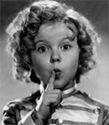
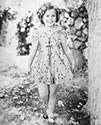

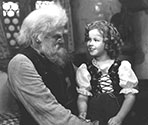
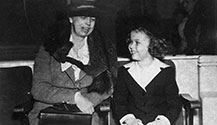

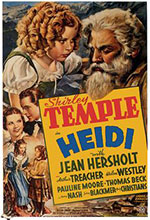
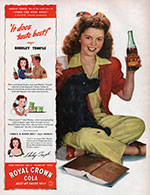
When times were tough during the Great Depression, there was one tiny, spunky, curly-haired, adorable little girl that American families could count on to put a smile on their face and brighten their hearts. Her name was Shirley Temple.
Shirley Temple, born in 1928 in California, became an actress, singer and dancer at the young age of three. From 1935 to 1938, Temple’s movies became number one at the box office and she received international fame. Some of her most well-known movies include: Heidi; Curly Top; On The Good Ship Lollipop; Bright Eyes and many more. Temple stared in over 40 films and retired from the film industry at age 22. She received many awards including: The Juvenile Academy Award; The Kennedy Center Honors Award; The Screen Actors Guild Lifetime Achievement Award and many more. Her career and stardom however did not cease there. As an adult, Temple became a United States Ambassador to Ghana and Czechoslovakia and served as Chief of Protocol of the United States.
Historian Jim Gibbons will discuss the life and many accomplishments of Shirley Temple. Gibbons will explain how through movies, television shows and in person, Temple had an impact that warmed the hearts of many and still continues to today.


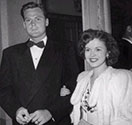
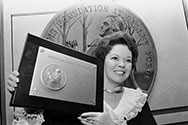
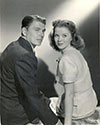
South Pacific
The War in the South Pacific
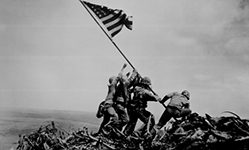
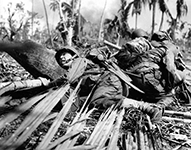
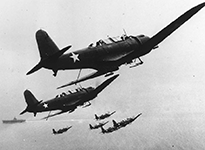
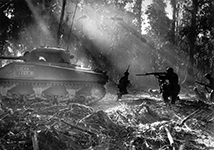
Historian Jim Gibbons will discuss the events that took place before, during and after The War in the South Pacific of World War II. He will discuss some of the wars’ major battles, including The Battle of Iwo Jima, The Battle of Okinawa, The Battle of the Coral Sea, The Battle of Midway, the attack on Pearl Harbor and more. Gibbons will discuss some of the main commanders in the war as well as their strategies and ideas. He will explain how several of the battles were the bloodiest in history, causing a great loss of life, and affecting both American and Japanese forces. He will explain how the war was ended by President Truman’s dropping of the Atomic Bomb.
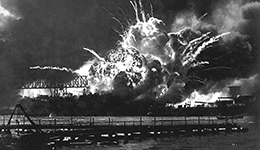
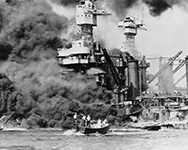
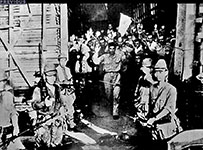
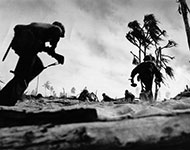
Spanish Flu
The 1918 Spanish Flu Pandemic, World War I and Wilson
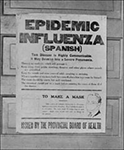
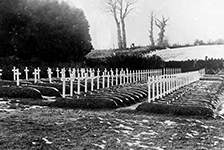
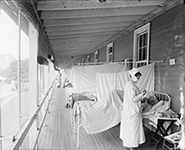


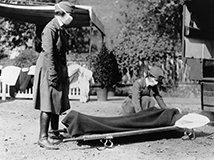
The year is 1918. Thousands of United States troops are involved in World War I and millions will die. In the United States, an additional war is forming. It is called “influenza” and it will take between 40-100 million more lives. President Wilson must make a choice. He needs to decide to either quarantine the troops as the war rages on; or to send the troops over to win the war and hope for the best.
Historian Jim Gibbons will take you on the rollercoaster ride of your life: the 1918 Spanish Flu Pandemic, the decade of the 1910’s and World War I. Gibbons will describe all the ups and downs, twists and turns, fear, mourning and joy of the 1910’s that will take you into the excitement of the Roaring 20’s!
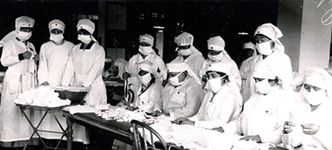
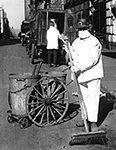


SS Andrea Doria
The 1956 Sinking of the SS Andrea Doria
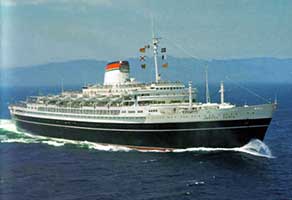

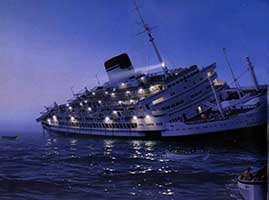
It is 11:10 p.m. on Wednesday, July 25, 1956. A heavy fog has settled over the North Atlantic, 45 miles south of the island of Nantucket. The Italian passenger liner, the SS Andrea Doria, is heading westbound, relying on its radar screens to cut its way through the thick fog of the evening. Little does its captain realize, there is eminent danger that lies directly ahead. The Swedish passenger liner, the MS Stockholm, is heading eastbound directly towards them! Hidden from their view by the thick fog, both passenger liners are now heading for a tragic encounter at speeds too fast to avoid the ultimate collision. After being smashed 30 feet into its starboard side, the Andrea Doria pulls loose, lists sharply, and starts to sink to the bottom of the ocean, endangering the lives of all on board. The result was the loss of 46 passengers and crew members on the SS Andrea Doria and 5 crew members on the MS Stockholm. Many of the 1,660 passengers rescued from the capsizing Andrea Doria also had to fight their way off the sinking ship, facing the tremendous odds, without the use of lifeboats.
Historian, Jim Gibbons, will present the story of, “The Sinking of the SS Andrea Doria and how it collided in a thick fog with the MS Stockholm. Gibbons will take you through that terrible night of extreme tragedy that rocked maritime history!
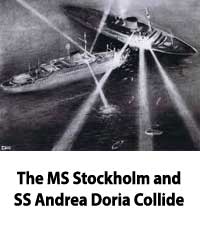
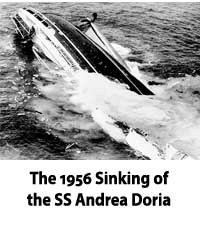
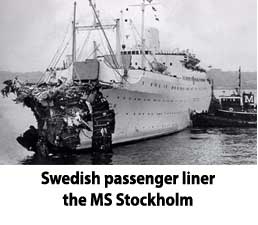
St. Patrick's Day Chicago History
St. Patrick’s Day and the Luck of the Chicagoland Irish: Historical Facts and More

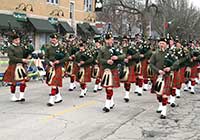
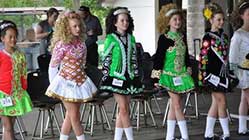
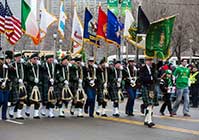
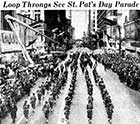
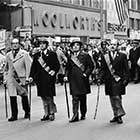

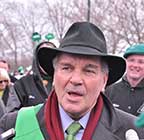
Every year in March, Chicago plays a trick on its residents. The Chicago River, which was once blue, is suddenly dyed green! Is this a trick by the infamous St. Patrick’s Day Leprechaun or a Chicago tradition that dates back for years? How and why did the annual tradition of dying the river green even begin in Chicago?
Historian Jim Gibbons will explain this and more in his St. Patrick’s Day themed historical program! Gibbons will explain how Chicagoland’s Irish history and heritage, St. Patrick’s Day themed parades and food, and Irish settlers themselves, were all established in Chicago, Illinois and the surrounding areas!
So sit back and relax and get ready for a fun celebration of the Irish heritage! And if you’re lucky, maybe you’ll find a pot of gold of information at the end of this rainbow!



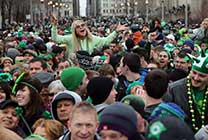
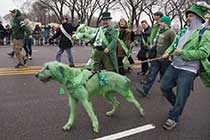
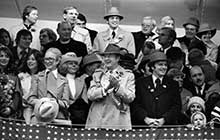
The Presidents
History Unveiled - The Truth About The Presidents
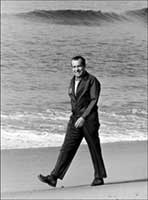

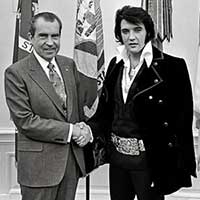
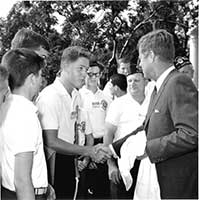
Did you know that four presidents rode in the same car that President John F. Kennedy was assassinated in after his assassination? Have you heard about the meeting between President Richard Nixon and Elvis Presley in which Elvis requested to become a Federal Agent-at-Large in the Bureau of Narcotics and Dangerous Drugs? Did you know that former President Jimmy Carter fought a “Killer Rabbit” who dared to approach his fishing boat?
Historian, Jim Gibbons, will present fun-filled trivia and historical facts on the presidents.


Theodore Roosevelt
Doing What Needs to be Done: The Life of Theodore Roosevelt
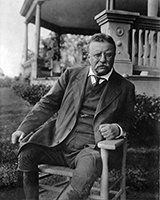


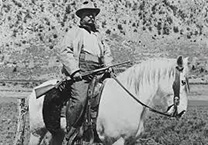
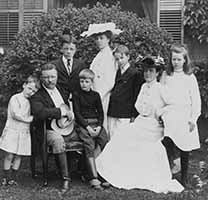
As a child, Theodore Roosevelt suffered nightly with a chronic smothering disease of the breathing airways called Asthma. At the age of thirteen, he learned that through vigorous physical exercise and a strenuous lifestyle he could build up his body to face anything and keep going. This even included a future would-be-assassin’s bullet fired directly into his chest! Described during his life as a “Steam Engine in Trousers,” “T.R.,” as he would be called, spent his life doing what needed to be done.
He was both Uncle and Godfather to Eleanor Roosevelt and fifth cousin and mentor to President Franklin Delano Roosevelt. T.R. felt that life challenges must be met head on. From the devastating dual loss of his mother and his wife, who was the love of his life BOTH on the same day; to his fighting charge up San Juan Hill; and finally, his continuous battles with big business monopolies, corrupt government officials, and union organizers--Roosevelt had to keep going!
Historian, Jim Gibbons, will present the life of our 26th President of the United States, Theodore Roosevelt. As Cowboy and Cattle driver, Deputy Sheriff, City Police Commissioner, Assistant Secretary of the Navy, Rough Rider, and then Governor of New York, T.R. was moving up quickly! Roosevelt was later jockeyed into the mundane position of the Vice Presidency where Roosevelt could do no harm. Then suddenly, fate stepped in. President William McKinley is assassinated and Roosevelt now becomes President of the United States. Using his motto to, “Walk softly and carry a big stick,” Roosevelt rose to the ranks of becoming one of our highest ranking presidents and achieving the Nobel Peace Prize and the Medal of Honor. His image was also placed on Mount Rushmore, and his namesake placed on a child’s toy called the “Teddy Bear.” Gibbons brings to life the story of Theodore Roosevelt, the man, his presidency, and his lifestyle. T.R. was a man whose drive was to be just, moral and ethical by doing what needed to be done!
Titanic
A Night Never Forgotten: The Sinking of the Titanic
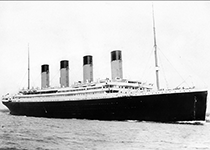


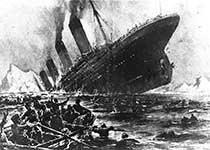
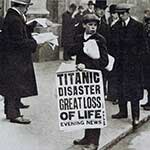
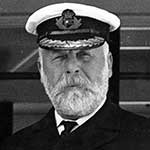
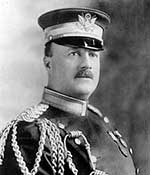

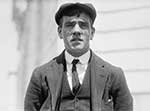

On the night of April 14, 1912, one of the deadliest peacetime maritime disasters in history took place—the sinking of the infamous British passenger liner, the RMS Titanic. By the morning of April 15th, within a little over a two and a half hour time span, of the approximate 2,224 passengers and crew aboard the ship, only 710 survived.
On her Maiden Voyage, the luxurious Titanic was one of three ocean-liner sister ships and was the largest in the world. However, the Titanic, traveling in the North Atlantic Ocean, received six warnings of icebergs in the sea. Ignoring the multiple warnings, traveling at its maximum speed in hopes of breaking records, the ship was unaware of an iceberg dead ahead in its path. Unable to turn away from the jagged edges of the iceberg, it took a large hit to its starboard opening up five of the ships 16 compartments and letting in the ocean water. When the crew finally realized the ship was sinking, many passengers were put into lifeboats. However, the lifeboat system was inadequate and time was of the essence.
Historian Jim Gibbons will discuss how not heeding warnings, a faulty evacuation plan, the lack of lifeboats and pressing time, as irony would have it, were all the tip of the iceberg in this devastating historical tragedy.
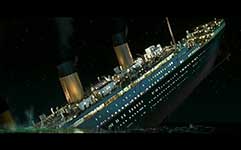
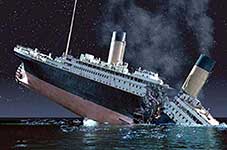


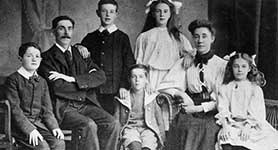
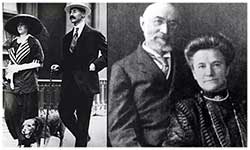
Unknown Soldier
The Tomb of the Unknown Soldier

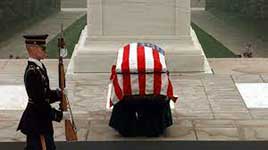
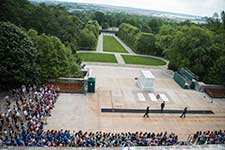

In 1921, a sacred ground for deceased heroic World War I veterans was created in Arlington National Cemetery in Arlington, Virginia. As years passed and more wars occurred, thousands more veterans would be added to the grounds, including those from World War II, the Korean War and Vietnam. All those buried would not only have veteran status in common but another as well—their names were unknown.
Historical Presenter, Jim Gibbons, will discuss the Tomb of the Unknown Soldier. Gibbons will discuss how the tomb came to be; the soldiers involved in the war; and will explain more about its past and current historical presence in Arlington National Cemetery. Gibbons will discuss how every year, people from all over the world visit the monument in honor and reverence of the unknown veterans.
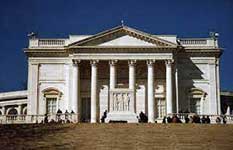
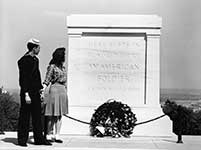
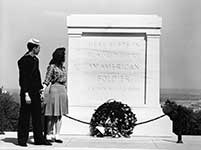
USS Indianapolis
The Sinking of the USS Indianapolis
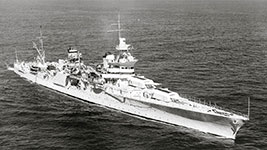
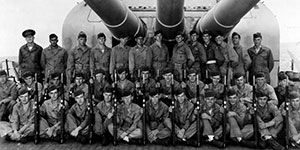
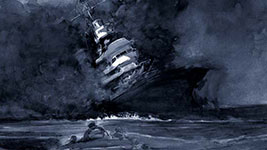
In 1945, the greatest single loss of life took place in the history of the United States Navy with the Sinking of the USS Indianapolis. The ship had just delivered parts of the US Little Boy Atomic Bomb and was on training duty when it was torpedoed by the Imperial Japanese Navy submarine I-58. Approximately 300 US crewman’s lives were lost with the ship in 12 minutes. Of the starting 1,196 crewman aboard the USS Indianapolis, 900 survived after the attack but were faced with four horrific days in the shark infested waters, facing dehydration, saltwater poisoning, minimal food and water, and shark attacks. When the crewman were found four days later, only a final 317 had survived.
Historian Jim Gibbons will discuss the sinking of the USS Indianapolis and its effect on history. Gibbons will also explain how the attack personally affected his family through the horrific loss of his uncle who died in the tragedy in his early 20’s.
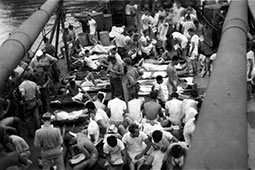

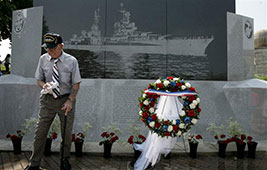
Vietnam War
The Vietnam War


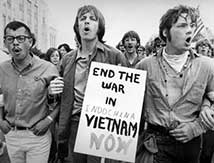
Today, the Vietnam War is seen as one of the most controversial wars fought in American history. With millions of fatalities costing both American and Vietnamese lives, many Americans led protests and anti-war demonstrations against the war effort.
The Vietnam War, which was also called the Second Indochina War, occurred from November 1955 through April 1975 and took place in Vietnam, Cambodia, and Laos. It was a war between the North and South Vietnam with America being one of several allies to South Vietnam. It was considered to be a war against communism with North Korea being aided by communist allies.
Historian Jim Gibbons will discuss America’s involvement in the war and its effect on American lives, viewpoints, and the counterculture movement. Gibbons will discuss how the United States eventually began to withdraw troops in its Vietnamization effort and how fighting continued for a couple more years despite a peace treaty being signed.
Walter Cronkite
The Life of Walter Cronkite
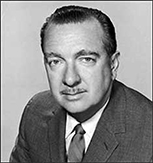
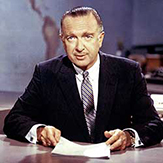
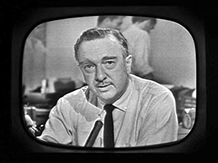
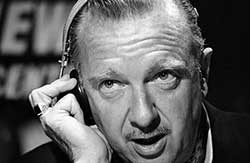
Walter Cronkite made a name for himself in American Broadcast Journalism, often being called the “most trusted man in America.” Cronkite received the most fame from his position as an anchorman for CBS News from 1962 to 1981. During that time, he covered some of America’s most important historical events including the Nuremberg trials, Watergate, the Iran hostage crisis, and the assassinations of Martin Luther King Jr. and John Lennon of The Beatles. Cronkite led audiences in the broadcast of the assassination of President John F. Kennedy, breaking the news to a shocked nation. With a tear in his eye and with a slight struggle to not break his composure, Cronkite stated, “From Dallas, Texas, the flash apparently official, President Kennedy died at 1p.m. Central Standard Time, 2:00 Eastern Standard Time, some thirty-eight minutes ago.”
Historian Jim Gibbons will explain how Cronkite was selected by the United States Army to fly as a member of the Writing 69th during World War II. Gibbons will describe how a man who never walked on the moon was recognized and awarded by NASA. He will explain how Cronkite set a standard for anchors years to come “And that’s the way it is.”

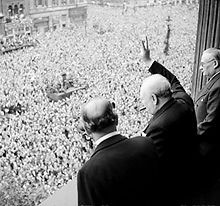
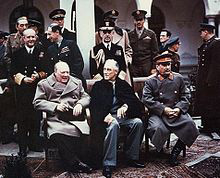
“Never Give In:” The Life of Sir Winston Churchill
“Never, never, never give in!” This was the creed Sir Winston Churchill lived by his entire life. Born into the aristocracy of the Dukes of Marlborough and becoming a Duke himself, Winston Churchill was always pursuing his goals and life’s dreams. Churchill became President of the Board of Trade, Home Secretary, and First Lord of the Admiralty. He also held the positions of Commander of the 6th Battalion of Royal Scots Fusiliers, Minister of Munitions, Secretary of State for War and Secretary of State for Air, Chancellor of the Exchequer, and legendary Prime Minister of Great Britain during World War II. He was a historian, artist, and writer who won a Nobel Prize for literature. He was also the first person ever to be made an honorary citizen of the United States.
Upon his death, Churchill was granted the high honor of a state funeral by Queen Elizabeth II, which was attended by one of the largest crowd of dignitaries and statesmen in history. He is considered to be among those most influential on British History, and in a 2002 poll, was named the Greatest Britain of all time!
Historian, Jim Gibbons, will present the life of Sir Winston Churchill, who as Prime Minister of Great Britain during World War II, stood alone against the tyranny and slaughter of Adolf Hitler, his troops, and the German Nazi Party. Churchill inspired the British people by rejecting defeat, surrender, and compromise. He truly lived by his motto to “Never, never, never, give in!”
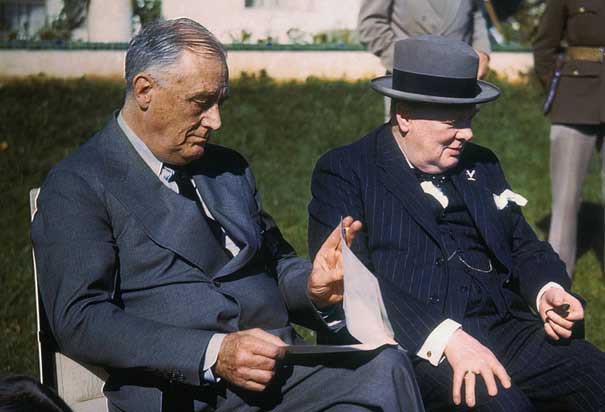
Woodstock Music Festival
Peace, Love and 1969: Remembering The Woodstock Music Festival
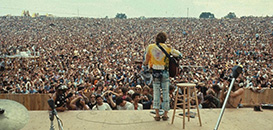


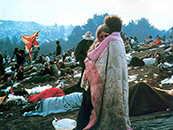

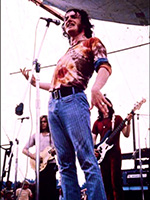
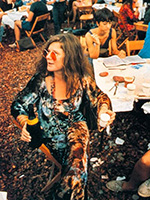
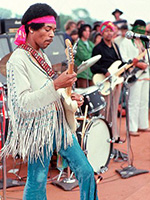
It was a time of peace, free love, music and togetherness. A time where the wild child, flower child, and the dreamers of The 1960’s could come together to dance, sing, and express themselves during three days of ongoing live music and famous artists. This year marks the 50th Anniversary of the Woodstock Music Festival. With about 32 bands performing, the festival, originally called the Woodstock Music & Art Fair, captivated an audience of over 400,000 for “3 Days of Peace and Music.” It was held between August 15-18, 1969 on a 600-acre dairy farm in White Lake, New York.
Historian Jim Gibbons will discuss Woodstock and its place in The 1960’s. Gibbons will explain the festival’s role in the counterculture movement, its place in history and why it is recognized as one of the most profound moments that changed Rock and Roll. He will discuss the musical artists and bands featured at the Woodstock Festival, including The Grateful Dead, Jimi Hendrix, Janis Joplin, Pink Floyd, Santana, The Who, Jefferson Airplane and many more.



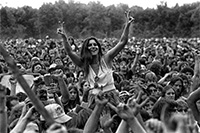
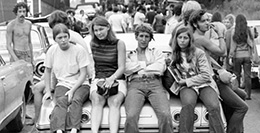

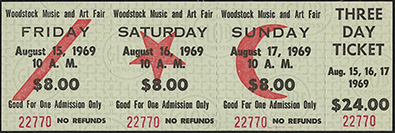

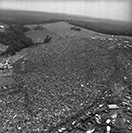
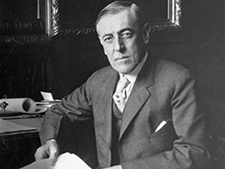
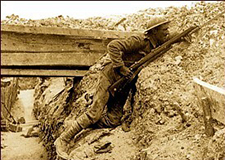
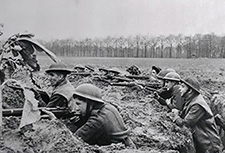
A World Gone Mad: World War I
On April 2, 1917 President Woodrow Wilson stated: “The world must be safe for democracy.” In four days the United States would enter World War I.
Historian Jim Gibbons will take you through the first of two of the most catastrophic wars in our nation’s history, World War I, which started on July 28, 1914. Gibbons will highlight significant events that thrust the United States into this unwanted war.
These events include the Assassination of the Arch Duke Ferdinand, which started the war; the sinking of the luxury liner Lusitania; and, due to arrogant missteps, the eventual rise of Adolph Hitler to supreme power leading into World War II.
See how new weapons for war were first introduced: the airplane, the submarine, the aircraft carrier, and the tank were invented to achieve absolute victory.
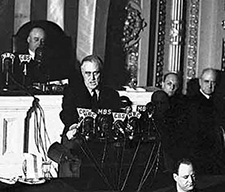

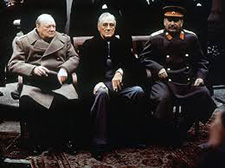
A World Gone Mad: World War II
On December 8, 1941, President Franklin Delano Roosevelt stated: “Yesterday, December 7, 1941- a date which will live in infamy-the United States of America was suddenly and deliberately attacked by naval and air forces of the Empire of Japan.” The United States had now entered World War II.
Historian Jim Gibbons will take you through the second of two of the most catastrophic wars in our nation’s history, World War II. Gibbons will highlight significant events that thrust the United States into this unwanted war.
These unfolding events include: Germany, Italy, and Japan’s mad, manipulative race to power; the bombing of Pearl Harbor, London, Warsaw, Stalingrad, and Leningrad; and the seizing of Paris. Gibbons will show how the United States, Great Britain, and Russia united together to bring down and eventually destroy these Axis Powers.
President Franklin Roosevelt’s words shall be unfolded before your eyes. Roosevelt stated: “No matter how long it may take us to overcome this premeditated invasion, the American people in their righteous might will win through to absolute victory!”
World War I and II Combined
A World Gone Mad: World War I and World War II (combined presentation):



On April 2, 1917 President Woodrow Wilson stated: “The world must be safe for democracy.” In four days the United States would enter World War I.
On December 8, 1941, President Franklin Delano Roosevelt stated: “Yesterday, December 7, 1941- a date which will live in infamy-the United States of America was suddenly and deliberately attacked by naval and air forces of the Empire of Japan.” The United States had now entered World War II.
Historian Jim Gibbons will take you through two of the most catastrophic wars in our nation’s history, highlighting significant events that thrust the United States into two unwanted wars. These events include the Assassination of the Arch Duke Ferdinand, the sinking of the luxury liner Lusitania, Hitler’s ambition to achieve power, the attack on Pearl Harbor, the dropping of the Atomic Bomb and much, much, more!
President Franklin Roosevelt’s words shall be unfolded before your eyes. Roosevelt stated:
No matter how long it may take us to overcome this premeditated invasion, the American people in their righteous might will win through to absolute victory!
The Decades
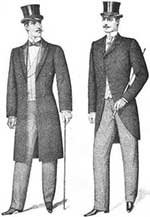
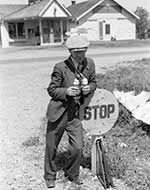
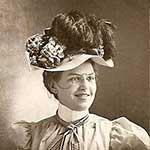

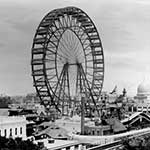
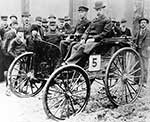
The 1890’s: Susan B. Anthony, Cleveland, and “Stars and Stripes Forever”
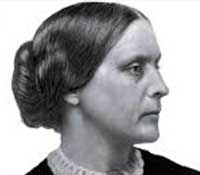
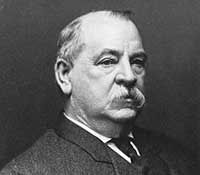

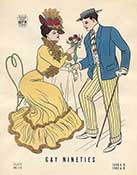
The 1890’s, often called, “The Gay Nineties,” marked a turning point in American history. While it was a decade of new inventions and growth in many ways, it was also a decade of economic panic and worry in many others.
Reform was a popular theme throughout the decade. The United States also became the most prevalent industrial force in the world, strengthened by the transcontinental railroads of the previous decades. What a great time for John Philip Sousa to create the patriotic song, “Stars and Stripes Forever!” New immigration was common with additional nationalities arriving in the United States, including those with Italian, Polish, and Jewish decent. At the same time, the “Panic of 93” occurred through labor strife and strikes affecting the middle class, big business and politics, creating a depression. Inventions such as the stop sign, smoke detectors, the bottle cap, the first gasoline-powered tractor, the volleyball and rechargeable batteries also were initiated in the decade. Bicycles became a very popular mode of transportation as well. Carnegie Hall opened its doors in 1891 to many musicians of the era. Rag and piano were the popular music of the decade with everyone dancing “The Two-Step.” Famous literary influences of the time included Walt Whitman and Emily Dickinson.
Historian Jim Gibbons will take you back to a time when Presidents Benjamin Harrison, Grover Cleveland and William McKinley were in office. Gibbons will discuss the tragic Massacre at Wounded Knee of the plains Indians; the Sherman Antitrust Act; medical practices of the time; and women and men’s fashion of the decade. He will also explain how Victorianism, the Suffrage Movement, and Susan B. Anthony influenced women of the era. Meanwhile, the Progressive Reform began to flourish and would continue into the 20th Century.

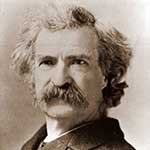
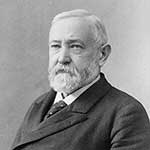
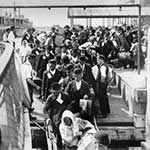
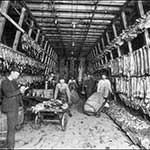
The 1900's
The 1900’s: Wright Brothers, Theodore Roosevelt, and The Model T

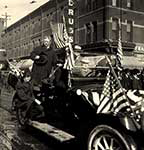
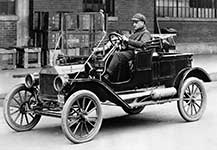
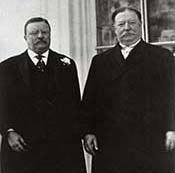
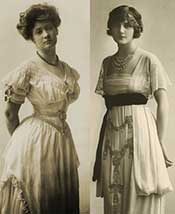

The 1900’s was an era of flight, industrialization, and the Teddy Bear. While the Temperance Movement is pushing its way across the nation, the Wright Brothers are gliding their invention across the air, eventually developing the first aircraft from 1900-1903. The nation, which now includes Utah as its 45th state, is taken aback when President William McKinley is assassinated. Now placed in office is former Rough Rider and Vice President Theodore Roosevelt. The conservation legacy of Roosevelt is founded in the 230 million acres of public lands he helps establish during his presidency. Much of that land, 150 million acres, will later be set aside as national forests.
Meanwhile, entertainment will forever change as the first movie theatre, the “Electric Theatre,” opens in Los Angeles, California. Major impacts on the world of sports are thriving as well with baseball holding its first World Series and college football initiating the first Rose Bowl. Roosevelt shall also call the executive mansion The White House. During Roosevelt’s presidency, many inventors will create necessities for American living and industrialization today.
Historian Jim Gibbons will take you back to the early start of the 20th Century, where technology flourished and advancements that covered all areas of life were made. The Ford Model T would become the first affordable automobile to middle class Americans as well as an efficient mode of transportation. Towards the end of the decade, William Howard Taft is elected President of the United States with the extreme backing of Roosevelt. However, the 1910’s will bring an abrupt end of their strong friendship due to differing viewpoints on how to run the country.
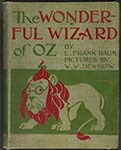
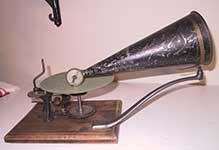
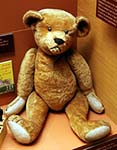
The 1910's
The 1910’s: Ragtime, Wilson, and World War I
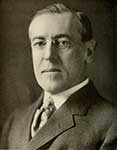
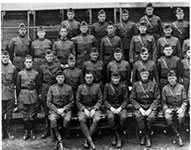
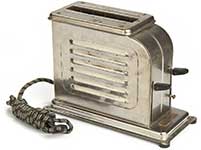
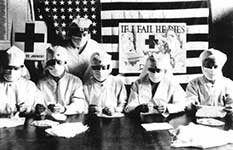
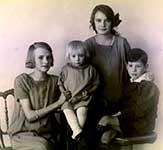
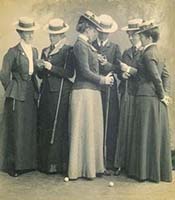
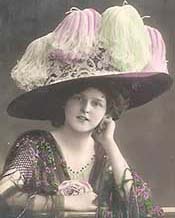
The 1910’s was an era of Ragtime music, technological and political innovations, and war. The Boy Scouts of America and The American Girl Guides, later to be renamed the Girl Scouts, are both founded a year apart. The Indianapolis 500 Auto Race takes place for the first time and the first transcontinental airline flight was established. In 1911, a patent for the first automotive transmission is made by Henry Ford.
Disaster, destruction, and devastation are also very prevalent in the 1910s, with Mount Katmai in Alaska erupting as one of the largest volcanic explosions the world has seen. The Colorado Coalfield Massacre later occurs, killing 24 miners. Over 120 American lives were also lost in 1915 when the Lusitania ship is sunk by a German U-boat submarine. One year prior, in 1914, after the assassination of Franz Ferdinand and his wife Sophie of Austria, President Woodrow Wilson announces the United States will remain neutral in the conflict. This changes in 1917 when the United States declares war on Germany, entering America into World War I.
Historian Jim Gibbons will take you back in time to an era of great inventions, such as the first telephone conversation in 1915 by Alexander Graham Bell. Gibbons will also discuss the great devastation of the time with the famous sinking of the Titanic, the Romanov family murders, World War I, and the 1918 Influenza which killed over 20 million people worldwide.
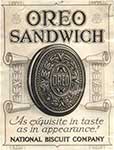
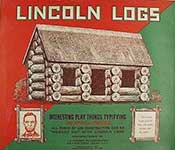
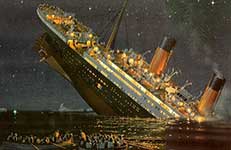


The 1920’s
The 1920’s: Flappers, Speakeasies, and Coolidge
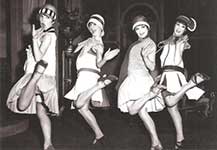

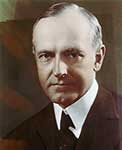
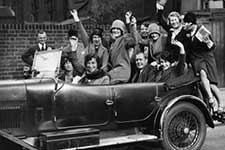
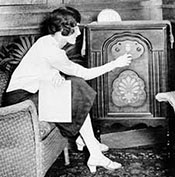
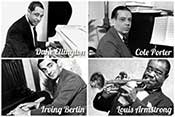
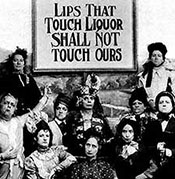
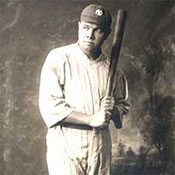
Following World War I, The 1920’s was an era of economic prosperity throughout the world and especially in the United States. People could spend money freely and spend it they did! Referred to as “The Golden Age,” “The Jazz Age,” and “The Roaring Twenties,” the 1920’s has been summed up by many as the “Age of Mammon.” Taverns or “speakeasies,” as they were called, were illegal due to prohibition. However, local gangsters would keep the flow of illegal booze on tap for their patrons until the joint was raided.
We could do anything and nothing was going to stop us! This was the Industrial Age. The Model T by the Ford Motor Company, was now in style. Aviator Charles Lindberg had proven that mankind had conquered flight. We had dances such as The Charleston and the Varsity Drag. Bobbed hair, shorter skirts, and Raccoon Coats. Flapper Dresses, and flagpole sitting were all the rage. The New York Yankees had just signed on a new player by the name of George Herman Ruth Jr., better known as “The Babe,” who would make baseball history!
F. Scott Fitzgerald, an author in the 1920’s, says it best in his novel, The Great Gatsby, “The Parties Were Bigger, The Pace Was Faster, The Shows Were Broader, The Buildings Were Higher, The Morals Were Looser, AND The Liquor Was Cheaper!”
Historian Jim Gibbons will take you back to the era of the 1920’s, a roaring time, running at a fast pace. The building trade was booming and the stock markets and the economy were skyrocketing. It was spend as much as you can and don’t worry about tomorrow! Anyone who spoke out or worried about this extraordinarily fast-moving pace was considered to be all wet, a killjoy, or just plain full of baloney! These were fast times, with fast cars, controlling and ruthless gangsters, flowing rot gut booze tied together with fast and lofty expectations. Then suddenly, the boom went bust, markets plunged, the Stock Market crashed. This was the start of The Great Depression!



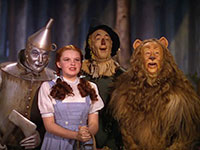
The 1930’s: F.D.R., The Great Depression, and Gone With The Wind
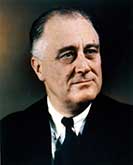
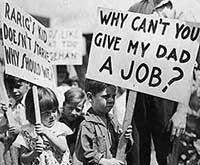
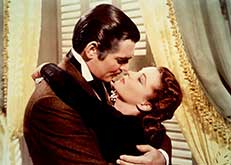
Unlike the previous decade, the 1930’s was an era of hardships. Hit with The Great Depression, many families struggled to put food on the table and clothing on their backs. Work opportunities were scarce.
Meanwhile, Swing music increased in popularity and slowly became more popular than the previous decade of Jazz. Amelia Earhart took flight as the first woman pilot. Movies such as Gone With the Wind and The Wizard of Oz took root in the 1930’s and reminded us that there is “no place like home” and that magic and romance still existed. Artists Diego Rivera and Salvador Dali helped us escape into the visual world of surrealism.
Historian Jim Gibbons will take you back to a time of great economic hardship where the American Dream seemed to be an unachievable pursuit. The age of radio made worldwide communication possible. Political figures Franklin Roosevelt and Mohandas Gandhi marked their historical stance. Dictators Adolf Hitler and Benito Mussolini spread fascism throughout the decade with the rise of the German Nazi party. Then to end the decade, World War II began.

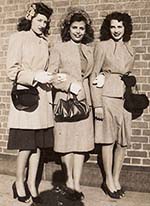

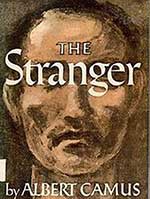
The 1940’s: Swing Dancing, World War II, and The Greatest Generation
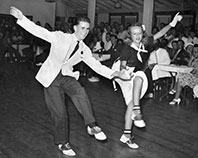
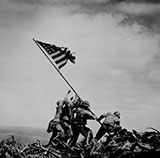
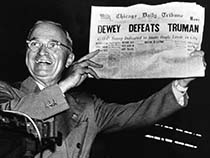
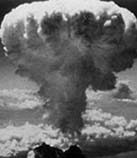
The 1940’s was a time of war. Though the Great Depression had subsided, terror was in the lives of many due to the dictatorship of Adolf Hitler, the Holocaust, World War II, and the Red Scare.
Meanwhile, new inventions were developing such as the microwave oven, the Jeep, and the most explosive invention, the Atomic Bomb. Swing music, the Jitterbug, Zoot Suits, and the Lindy Hop were all in vogue. A drastic cut in the manufacturing of consumer goods, fabrics, and automobiles due to the war effort made rationing mandatory. Alfred Hitchcock beyond a Shadow of a Doubt made a Notorious name for himself through movies of suspense and psychological thrillers. Soon-to-be-famous authors also released books such as Pippi Longstocking, The Diary of Anne Frank, The Stranger, and the Death of a Salesman.
Historian Jim Gibbons will discuss the World War II attack on Pearl Harbor and our dealings with Russia leading to the Cold War. Gibbons will also talk about Harry Truman’s presidency, his defeat of front runner Thomas E. Dewey, and the signing of the Marshall Plan. He will explain how in 1943, new controversial music was established eventually ending the Swing Era and setting up a whole new decade of Rock and Roll.
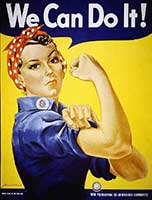

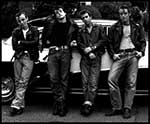
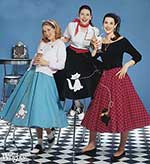
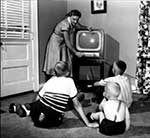

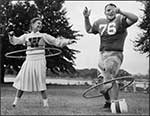
The 1950’s: Elvis, Eisenhower, and Lucy
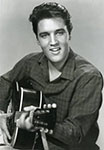
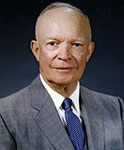
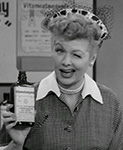
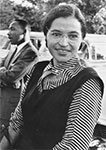
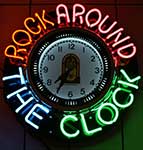
The 1950’s was the decade of Rock and Roll, postwar boom, the Korean War, and Civil Rights. From the booming economy to the baby boom, America was starting to prosper after the war. From the Supreme Court’s landmark decision in “Brown vs. Board of Education” in 1954 to activist Rosa Parks making her name in America’s history, the Civil Rights Movement was moving forward.
Elvis became the idol of American teenagers everywhere and had the nation “All Shook Up,” later taking his crown as the King of Rock and Roll. Poodle-skirted teenagers danced and hula-hooped to Bill Haley & His Comets’ “Rock Around the Clock,” as well as the music from Jerry Lee Lewis, Chuck Berry, Buddy Holly and “Good Golly Miss Molly’s” Little Richard. At school, it was the Greasers versus the Jocks. After school, everyone joined together in their Thunderbirds and Corvettes to watch drive-in movies with actors and actresses such as John Wayne, Cary Grant, James Stewart, Grace Kelly, Elizabeth Taylor and blonde bombshell, Marilyn Monroe. It was the Golden Age of Television where everybody loved Lucy and learned the schemes of Eddie Haskell.
Historian Jim Gibbons will take you back to an age of innocence and Eisenhower. Despite the scare of communism and Sputnik, Rodgers & Hammerstein taught us to whistle a happy tune when afraid in The King and I. Gibbons will discuss the American values and conservative culture of peace, progress, and prosperity in the 1950’s.
The 1960’s
The 1960’s: Flower Power, The Beatles, and J.F.K

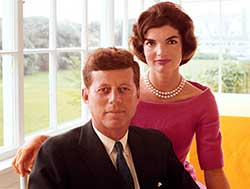
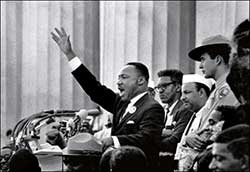
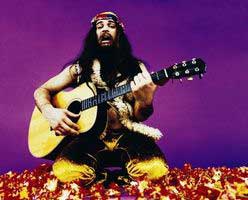
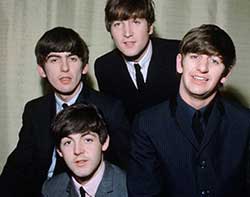

The 1960’s was a time of turmoil in our nation’s history. From President Dwight D. Eisenhower’s farewell address warning of a military industrial complex to President John F. Kennedy stating “Ask not what your country can do for you, ask what you can do for your country!” The United States was a country on the move with a can do attitude, young, vibrant, full of vigor just like its new young president and first lady. We were going to land a man on the moon by the end of the decade. Our country was alive and strong, the past was over, and the future was now, and then suddenly Dallas, Texas, “President Kennedy is dead!”
Lyndon Baines Johnson was now president. The Beatles and the British invasion arrived. A war in a county in Southeast Asia called “Vietnam” was now starting to rear its ugly head and then escalate. We had been told by President Kennedy “That we shall pay any price, bear any burden, meet any hardship, support any friend, oppose any foe to assure the survival and the success of liberty” and we were going to do just that! The Reverend Dr. Martin Luther King Jr. now cried out in agreement stating “I have a dream!” There was no turning back. Men’s hairstyles went from short to long and women’s skirts went from long to short. The term to “Never trust anyone over the age of thirty” was now in style. Music was now the primary force that drove the fashion industry, the movies, the arts, and even television. Songs such as “All You Need is Love,” “Incense and Peppermints,” and “Strawberry Fields Forever” helped to spark a movement that led to the production of a 1967 flower-powered summer love festival called Woodstock.
Historian, Jim Gibbons, will take you on a roller-coaster ride during one of the most turbulent times in our nation’s history! From television to movies, fashions to fads, the times were changing and changing fast! This was the decade that moved away from the innocence of Camelot to the cry of “Hell no, we won’t go!” This was our countries time of dramatic change and the end of our innocence when all the world was watching.
This was the 1960’s!
The 1970’s
The 1970’s: Bell-bottoms, Disco, and Nixon
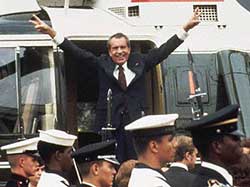


The 1970’s was a time of change in our history. From Sensurround, which shook the theaters in the movie “Earthquake,” to Watergate, that shook our country and the nation’s capital, a time of change was in the air! Archie Bunker, of televisions’ “All in the Family,” proved that father didn’t always know best. If you were “Staying Alive,” but had “Bad Blood” or “Boogie Fever,” it didn’t mean that you were necessarily sick and had to call in a doctor. And when a little boy named Mikey proved to his brothers that he liked eating a bowl of cereal, (which created a classic commercial), well then, it just had to be good to eat! Right?
These were the “Happy Days” and “Good Times,” when Three was a Company! We were introduced to a space alien, played by Robin Williams, named “Mork,” and his Earth friend, Mindy. Lava lamps, Pet Rocks, and people eating melted cheese out of avocado, gold, or brown-colored Fondue pots were all the rave. It was a time where the song “Convoy,” about truck drivers speaking over Citizens Band Radios, flew to number one on the music charts. The song became so popular that even First Lady Betty Ford joined in on the fun!
Historian, Jim Gibbons, will present life in the 1970’s. Change is what the 1970’s offered with styles such as bell-bottom trousers, wide ties, flowered shirts, leisure suites, afro hairdos, and patent leather shoes. We also had presidential changes in the oval office from Nixon, to Ford, and then to Carter. The 70’s launched with Chicago’s Mayor Richard J. Daley and ended with Mayor Jane Byrne. Gibbons will show you how our ideas have been changed due to Watergate and Vietnam. From Disco Dancing to Disco Ducking, the 1970’s will always be remembered as a time in history that shaped a different world for the future!
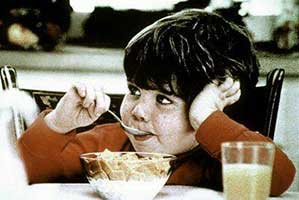
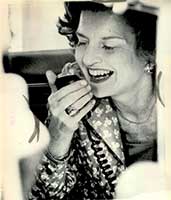


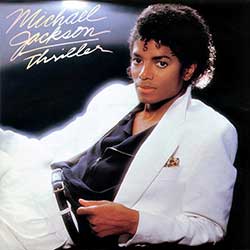
The 1980’s: The Royal Wedding, Reagan, and Pacman



The 1980’s was a time of new development, royalty and big hair. From mullets to the Microsoft Computer, it was a time of innovation in fashion trends, computer, technology and video games.
Television stations were tuned in to the royal wedding of Lady Diana Spencer and Prince Charles. Meanwhile, Michael Jackson and Madonna who were later crowned the “King and Queen of Pop,” began their rise to fame making an impact on music for future generations. The famous 80’s hair bands took the stage with heavy metal and glam metal rising in popularity and the hip-hop scene taught us how to break dance. Families everywhere went Back to the Future. They also had an out-of-this-world experience learning about a gentle extra terrestrial, E.T. who just wanted to phone home. And teenagers everywhere learned about the members of The Breakfast Club.
Historian Jim Gibbons will explain the socioeconomic and political impact of the 1980’s. Gibbons will discuss the end of the Cold War, nuclear threats, and President Ronald Reagan’s famous words, “….Mr. Gorbachev, tear down this wall!” From the fall of the Berlin Wall to the rise of the World Wide Web, from fanny packs to hair spray, this was the 1980’s!



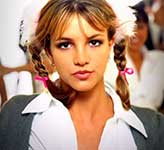

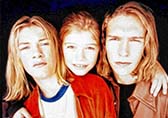
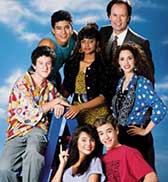
The 1990’s: The Macarena, Beanie Babies, and Clinton
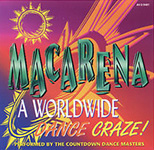


The 1990’s brought about a rise in alternative views where music ruled fashion, fads and trends. From Nirvana and the grunge movement, to Britney Spears and the school girl skirt, to hip-hops baggy pants, the 90’s came out tattooed, pierced and with a British invasion of the Spice Girls ready to “Spice Up Your Life!”
Through MTV and VH1, music videos were very popular featuring singers like Christina Aguilera, Mariah Carey, and Puff Daddy, and the popular boy bands, New Kids On The Block, Backstreet Boys, NSYNC and Boyz II Men. At weddings and school dances, everyone was doing The Macarena and children and adults were collecting Beanie Babies. Viewers everywhere were Saved by the Bell and made sure to be surrounded by Friends. In 1997, audiences’ hearts would go on with the sinking of the Titanic and the rise in Celine Dion’s famous hit from the number one movie of the time.
Historian, Jim Gibbons, will discuss the Gulf War, the dissolution of the Soviet Union, and the possible impeachment of President Bill Clinton. Gibbons will explain the rise in technology and the tragic death of the world’s much-loved Princess Diana. This was a time of alternative media, multiculturalism and alternative thinking. This was the 1990’s!
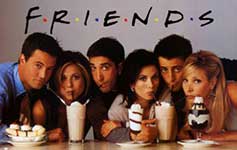
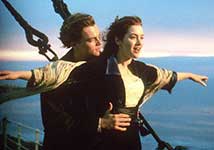

The 2000s
The 2000’s: My Space, 9/11, and George W.Bush


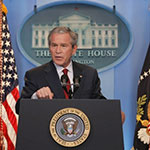









The 2000’s were marked by Y2K fashion trends and tragedy. While Pop music icons Britney Spears and Christina Aguilera continued their popularity in the early 2000’s, Lady Gaga became an icon with her controversial fashion and powerful voice in the late 2000’s. Crop top shirts, low-rise and big bell-bottom jeans, spiky hair, and 90’s style baggy pants remained fashion statements of the decade. Kelly Clarkson, winner of the popular television show, American Idol, also launched her career and set the trend of chunky hair highlights in the early 2000’s. Emo, Goth, Punk, and Geek Chic styles were also fashionable for teenagers with band t-shirts, bondage pants, horn-rimmed glasses, and dark make-up depending on the style of choice. But there was one big question that launched the decade, “Who Wants to Be a Millionaire?”
The 2000’s was also a time of Internet advancements on modern society and the music industry. From music now readily available for download to the public creating personal My Space pages on social media, Internet and computer usage was growing. Fear was also widespread during the era, starting with the Y2K Apocalypse and Y2K Bug scares and later in the decade, the H1N1 Swine Flu.
Historian Jim Gibbons will discuss the tragic September 11, 2001 attack on the World Trade Center, the start of the War in Afghanistan and War on Terror, the Presidency of George W. Bush, and the natural disasters of the era including Hurricane Katrina.
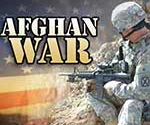
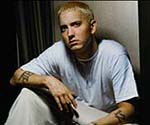
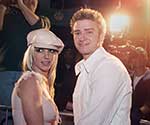


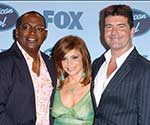

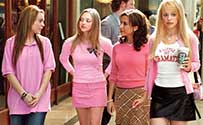
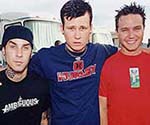
Chicago's neighborhoods
Building A Community: The Many Sides of Chicago
 Historian Jim Gibbons will discuss the many sides of Chicago. Gibbons will break down each side of Chicago’s neighborhoods in a nine-part series, including: Chicago’s Central District, Near North Side, Far North Side, Northwest Side, the South Side, Southwest Side, Far Southwest Side, Far Southeast Side and the West Side.
Historian Jim Gibbons will discuss the many sides of Chicago. Gibbons will break down each side of Chicago’s neighborhoods in a nine-part series, including: Chicago’s Central District, Near North Side, Far North Side, Northwest Side, the South Side, Southwest Side, Far Southwest Side, Far Southeast Side and the West Side.
Gibbons will discuss the highlights and attractions of each community. He will also explain the history of each neighborhood, its past and current development and its expected growth for the future.
Use the menu below for the program details on each of Chicago's neighborhoods.
Central District
Chicago's Central District: Near North Side, Near South Side and The Loop

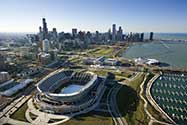


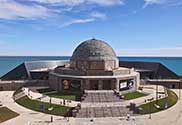

Comprised of the highest skyscrapers and second largest total area in the city, the Near North Side of Chicago is really a site to see! With its bright lights and picturesque Chicago skyline, it is known to be a prosperous area that highlights Navy Pier, the Magnificent Mile, the Gold Coast and is near the Chicago River and Lake Michigan. The Near North Side is the oldest part of Chicago and includes skyscrapers known to travelers world-wide.
The Near South Side, located south of The Loop, holds some of the city’s most popular attractions. Some of its most famous attractions include: McCormick Place; The Field Museum; The Shedd Aquarium; the Adler Planetarium; Soldier Field and more.
The Loop, also known as the central business district of Chicago, contains the city’s core commercial area, City Hall and Chicago’s world-famous businesses and attractions. It is the second largest business district in the country. With history dating back to 1803, The Loop was originally built by the United States Army to house Fort Dearborn, and later included a railway system.
Historian Jim Gibbons will discuss Chicago’s Central District, including the Near North Side, the Near South Side and The Loop. Gibbons will explain the history of each neighborhood, its past and current development and its expected growth for the future.

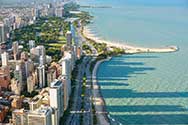
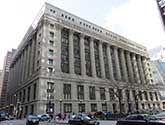
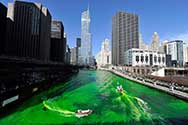

Far North Side
Chicago's Far North Side: Albany Park and O'Hare to Uptown


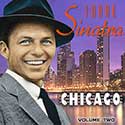

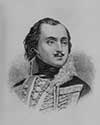
Chicago’s Far North Side includes one of the city’s biggest and busiest airports, O’Hare International Airport. O’Hare Airport, located at 10000 West O’Hare Avenue in Chicago, is operated by the Chicago Department of Aviation. It covers over 7,600 acres and continuous flights to over 228 destinations around the world. Albany Park on the Far North Side is one of the most ethnically diverse areas of the country, with over 40 different languages spoken at its public schools. Nationalities include: Latin American, Indian, Philippian, Somalian, Korean, Romanian, Middle Eastern, Yugoslavian, Cambodian, Pakistani and more.
Chicago’s Lakeshore Hospital is located on the Far North Side. Pulaski Park, named after Polish Nobleman, Casimir Pulaski is also located in the area. The Arcadia Ballroom was located in the Far North Side until it was destroyed by a fire in the 1950’s. It was historically known to be one of the only African American jazz band performance sites in the 1920’s and 1930’s.
Uptown is also a very popular historical tourist attraction of sites involving the 1920’s Chicago Gangsters, Al Capone, John Dillinger, Machine Gun Jack McGurn and more. It is well-known for its entertainment district, nightclubs and music venues, including the Aragon Ballroom. Some famous bands and artists performing at the ballroom included: Frank Sinatra, Glenn Miller, Benny Goodman, Lawrence Welk, U2, The Rolling Stones, Green Day, Gwen Stefani, Snoop Dog, B.B. King, Metallica, Nirvana, The Ramones and more.
Historian Jim Gibbons will discuss Chicago’s Far North Side from Albany Park and O’Hare to Uptown. Gibbons will explain the history of each area of the Far North Side, its past and current development and its expected growth for the future.




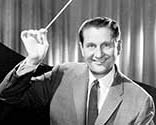
Far Southeast Side
Chicago's Far Southeast Side: Avalon Park and Hegewisch to Pullman
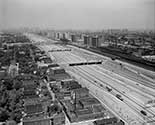
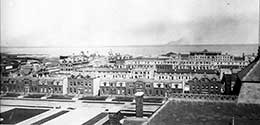
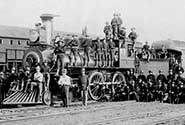

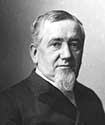


Chicago’s Far Southeast Side is vast and covers a large section of Chicago. Though the Southeast Side has a lower population density, it is known for attracting tourists to its Historic Pullman District. The Pullman District is not only known for its unique architecture, it is also known for its historical social activism, strikes and industrial and railroad involvement. Some of the areas often visited on the Southeast Side include the A. Philip Randolph/Pullman Porter Museum, the Greenstone Church, the Historic Pullman Foundation Visitor Center, the Southeast Historical Museum, the William W. Powers Conservation Area and more. The best way to travel is via train on The Metra Electric Line. It can also be accessed by car along Route I-94 and the Dan Ryan Expressway, as well as other accessibility.
George Pullman, the founder of the Pullman District and a railroad tycoon, created the district in hopes of avoiding extreme poverty for workers. The town was known world-wide as having state-of-the-art utilities and buildings. It was even the grounds for the World’s Fair Columbian Exposition. Pullman’s wages were higher than most which attracted workers. However, the Pullman town was seen as controlling every aspect of the workers’ lives. After an economic downturn in 1893 and lowered wages, workers held the Pullman Strike, affecting labor and civil rights’ history. Today, Pullman is a quieter neighborhood that has seen an economic shift towards the wealthy. It is a place of historical architecture and museums filled with Chicagoan history.
Historian Jim Gibbons will discuss Chicago’s Far Southeast Side from Avalon Park and Hegewisch to Pullman. Gibbons will explain the history of each area of the Far Southeast Side, its past and current development and its expected growth for the future.
Far Southwest Side
Chicago's Far Southwest Side: Ashburn and Beverly to Washington Heights
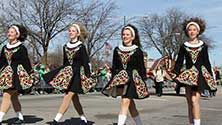


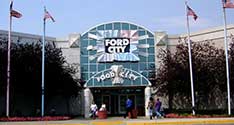
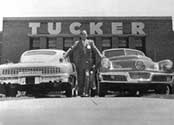
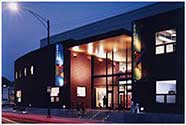
Chicago’s Far Southwest Side is primarily known for its strong Irish population, authentic Irish pubs, music and Irish festivals. In 2009, the annual South Side St. Patrick’s Day Irish Parade in the area brought in over 300,000 people and became one of the largest parades in the neighborhoods outside of Dublin, Ireland. However, the community downsized the parade in years to come due to the concern for it being too large. The Irish Film Festival, Beverly Arts Center of Chicago and St. Xavier University are all well-visited in the area as well. Beverly is an ethnically intermingled area including Irish and African Americans. The Givins Irish Castle (Beverly Unitarian Church), built in 1885, is also a site to see and is a replica of a castle in Ireland’s River Dee. Yearly, the Unitarian Church holds a “Haunted Castle” Halloween attraction. It is also believed that the castle is haunted by a young spirit in a long dress who shows up during parties and gatherings.
Another large attraction in the area is Ford City Mall, located in the West Lawn area of 76th Street and Cicero Avenue. Originally built in 1942 for a United States Defense plant during World War II, the building is constructed of steel, concrete and wood covering 6,000,000 square feet with 7,000 miles of underground piping. The building was used to test B-29 Bomber Aircrafts. Then after WWII, it was left vacant. Later, it was revamped as the Tucker Corporation for automobile production, and eventually, became the Ford Motor Company. In 1961, the government sold the building; and in 1965, it became what is known today as the “Ford City Mall.” The mall is the largest walled mall in Chicago and includes stores and other businesses such as JcPenny, Old Navy, Zales Jewelers, Bath & Body Works, a large AMC Theater, Applebees and more.
Historian Jim Gibbons will discuss Chicago’s Far Southwest Side from Ashburn and Beverly to Washington Heights. Gibbons will explain the history of each area of the Far Southwest Side, its past and current development and its expected growth for the future.
North Side
Chicago's North Side: Avondale and Lincoln Park to Wrigleyville


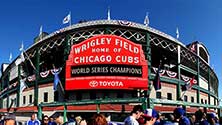
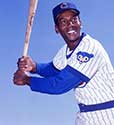
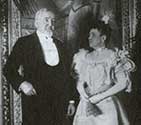
Chicago’s North Side, also known as the Near North Side, is known for being community-centered, business-thriving and home to Wrigleyville. Though primarily residential, the North Side is known to be a great area to work, shop and to live. Lakeview, located on the North Side, is Chicago’s largest community.
The Lincoln Park Zoo and Wrigleyville are some of the primary attractions in the area. Located on West Addison Street, Wrigleyville houses Wrigley Field, home to the Chicago Cubs. In addition to Wrigley Field, Wrigleyville’s Clark Street is booming with restaurants, sports bars and nightlife. North Clark Street also includes Graceland Cemetery, where Ernie Banks of the Chicago Cubs, The Palmers of the Palmer House, Marshall Field, George Pullman, and more historic persons are buried. Inez Clarke is also buried in Graceland. It is said that Clarke, a child who was struck by lightening and killed, is still very present at the cemetery.
The Magnificent Mile offers Chicago’s vibrantly luxurious shops, fashion outlets, upscale restaurants and hotels. Located on a 13-block stretch of North Michigan Avenue, the Magnificent Mile offers over 460 stores, 275 restaurants and 60 hotels plus a variety of entertainment and more. Navy Pier is also Chicago’s most visited tourist attraction, offering a 3,300-foot long pier on Chicago’s Lake Michigan shoreline. With its 196-foot Centennial Ferris Wheel, Navy Pier includes more than 50 acres of parks, family attractions, restaurants, shopping, gardens and more.
Historian Jim Gibbons will discuss Chicago’s North Side from Avondale and Lincoln Park to Wrigleyville. Gibbons will explain the history of each area of the North Side, its past and current development and its expected growth for the future.

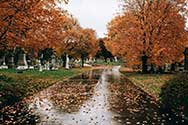
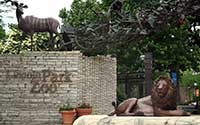
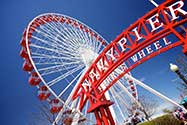
Northwest Side
Chicago's Northwest Side: Belmont Cragin and Irving Park to Portage Park

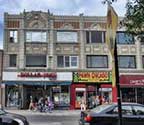
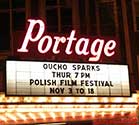
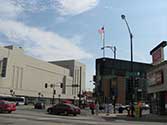
Chicago’s Northwest Side offers a variety of theaters, parks, large annual festivals and a wide variety of ethnic foods. The Northwest side offers authentic food shops and old-style restaurants from its large Polish, Irish, German, Scandinavian and Italian population. Many famous Chicago-Style hotdog stands can also be found in the area.
One of its famous theaters is the historic Portage Theater, located on Six Corners. Opening in 1920, Portage Theater is one of the oldest theaters in the area built for film. After several renovations and restorations, the theater today is home of the Silent Film Society of Chicago and hosts several large events, offering both silent and motion pictures. One of the events is the Chicago Polish Film Festival. Riverview Park, open from 1904 through 1967, was a well-visited amusement park located on North Western Avenue. Today, it holds the Riverview Plaza shopping center, DeVry Institute of Technology and the Belmont District Police Station. Radio Flyer’s central office is also in the Northwest area of Chicago and is famously known for making red wagons, bikes, tricycles, scooters and more. Schwinn, well-known for making bicycles, was also once located in Hermosa. Famous celebrities Walt Disney and Hugh Hefner grew up on the Northwest Side. Disney was raised in Hermosa and Hefner was raised in the Galewood Neighborhood.
Historian Jim Gibbons will discuss Chicago’s Northwest Side from Belmont Cragin and Irving Park to Portage Park. Gibbons will explain the history of each area of the Northwest Side, its past and current development and its expected growth for the future.

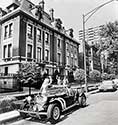



Southwest Side
Chicago's Southwest Side: Archer Heights and New City to West Lawn
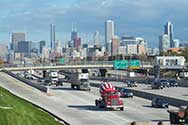
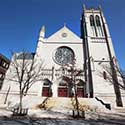




The Southwest Side is comprised of an ethnically diverse population, aligned by a mostly blue-collar community. With its close proximity to Midway Airport and White Sox territory, the Southwest Side includes the Back of the Yards (Brighton Park, McKinley Park and the New City area), the Irish-American community of Canaryville and McKinley Park.
Upton Sinclair’s book, The Jungle also refers to the Union Stock Yards with the large amount of immigrant laborers coming to the area. Historically, the stock yards processed over 80 percent of all meat consumed in the United States.
Marquette Park is also located on the Southwest Side and is ethnically mixed including African American communities to the east and Mexican American, Polish American and Lithuanian American communities to the west. As for transportation, Midway Airport, Chicago’s second largest airport, as well as the Metra Southwest Service, Dan Ryan Expressway and Stevenson Expressway are all located on Chicago’s Southwest Side.
Famous landmark churches in the area include St. Sabina’s Catholic Church in Auburn Gresham and Trinity United Church of Christ in Washington Heights. St. Sabina’s is home to human rights pastor and activist, Father Michael Pfleger. The Obama family also formerly attended Trinity United Church of Christ, holding their wedding and their children’s baptisms at the church.
Historian Jim Gibbons will discuss Chicago’s Southwest Side from Archer Heights and New City to West Lawn. Gibbons will explain the history of each area of the Southwest Side, its past and current development and its expected growth for the future.



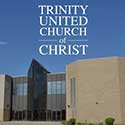
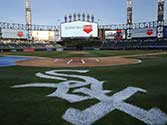
South Side
Chicago's South Side: Armour Square, Bridgeport to Hyde Park
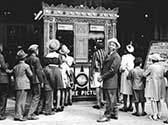
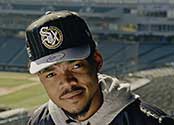

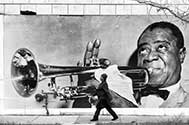

 Chicago’s South Side is the largest of the three larger sides of Chicago, including the North Side and West Side. With origins from the city’s annexation of Hyde Park, the South Side is comprised of racially and economically diverse backgrounds. Though often associated with the higher levels of crime in the city, the area ranges from very affluent to very poor, and those in between. Residents living in the Armour Square, Back of the Yards and Pullman areas mostly include blue collar workers and the middle class. Those living in Hyde Park, Beverly and Mount Greenwood are in the more affluent areas.
Chicago’s South Side is the largest of the three larger sides of Chicago, including the North Side and West Side. With origins from the city’s annexation of Hyde Park, the South Side is comprised of racially and economically diverse backgrounds. Though often associated with the higher levels of crime in the city, the area ranges from very affluent to very poor, and those in between. Residents living in the Armour Square, Back of the Yards and Pullman areas mostly include blue collar workers and the middle class. Those living in Hyde Park, Beverly and Mount Greenwood are in the more affluent areas.
The South Side offers a variety of museums, beaches, parks, sports, social and cultural attractions. Also, many modes of transportation are available in the area, including the Metra rail commuter lines and the L-Trains.
The South Side is also home to many celebrities raised in Chicago, including Mayor Richard J. Daley and family, Mayor Richard M. Daley and family, Chance the Rapper, Michelle Obama, Dick Butkus, Jennifer Hudson, Mr. T and many more. Bronzeville of the South Side was also home to many famous African Americans in the 1920’s through 1940’s, including Ida B. Wells, Louis Armstrong, Bessie Coleman, Gwendolyn Brooks and more.
Historian Jim Gibbons will discuss Chicago’s South Side from Armour Square, to Bridgeport to Hyde Park. Gibbons will explain the history of each area of the South Side, its past and current development and its expected growth for the future.


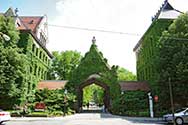



West Side
Chicago's West Side: Austin and Humboldt Park to West Town

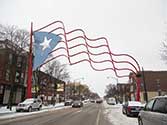


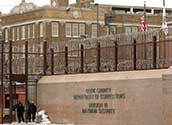
Chicago’s West Side offers a variety of medical, educational and cultural facilities. The Illinois Medical District, located on the West Side, is one of the nation’s largest medical districts and includes Rush University Medical Center and the Johnston R. Bowman Health Center. The West Side also houses the United Center, home of the Chicago Bulls and Chicago Blackhawks, and includes the University of Illinois at Chicago campus. It has several of the city’s largest parks including Garfield Park, Humboldt Park and Douglas Park, and is the site to one of the largest single jails in the United States, Cook County Jail, run by the Chicago Police Department.
The West Side is one of the least populated sides of Chicago. It includes an ethnically and financially diverse population from the poverty stricken to the wealthier middle class. Ethnicities range from Puerto Rican, Mexican, African American, Polish, Czech, Greek and Italian. Puerto Rican parades and festivals are commonly held in the area. The majority of Chicago’s public schools are also located on the West Side as well as the Roman Catholic Archdiocese of Chicago’s Catholic Schools. The site of the original Our Lady of the Angels School is located in Humboldt Park, where tragically, 92 children and three nuns were killed in a devastating fire in 1958.
Some notable celebrities and influential people that are associated with or grew up in the West Side include: Jane Addams, L. Frank Baum, John Belushi, Benny Goodman, Kel Mitchell, Pat Sajak and more.
Some notable celebrities and influential people that are associated with or grew up in the West Side include: Jane Addams, L. Frank Baum, John Belushi, Benny Goodman, Kel Mitchell, Pat Sajak and more.
Historian Jim Gibbons will discuss Chicago’s West Side from Austin and Humboldt Park to West Town. Gibbons will explain the history of each area of the West Side, its past and current development and its expected growth for the future.
